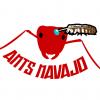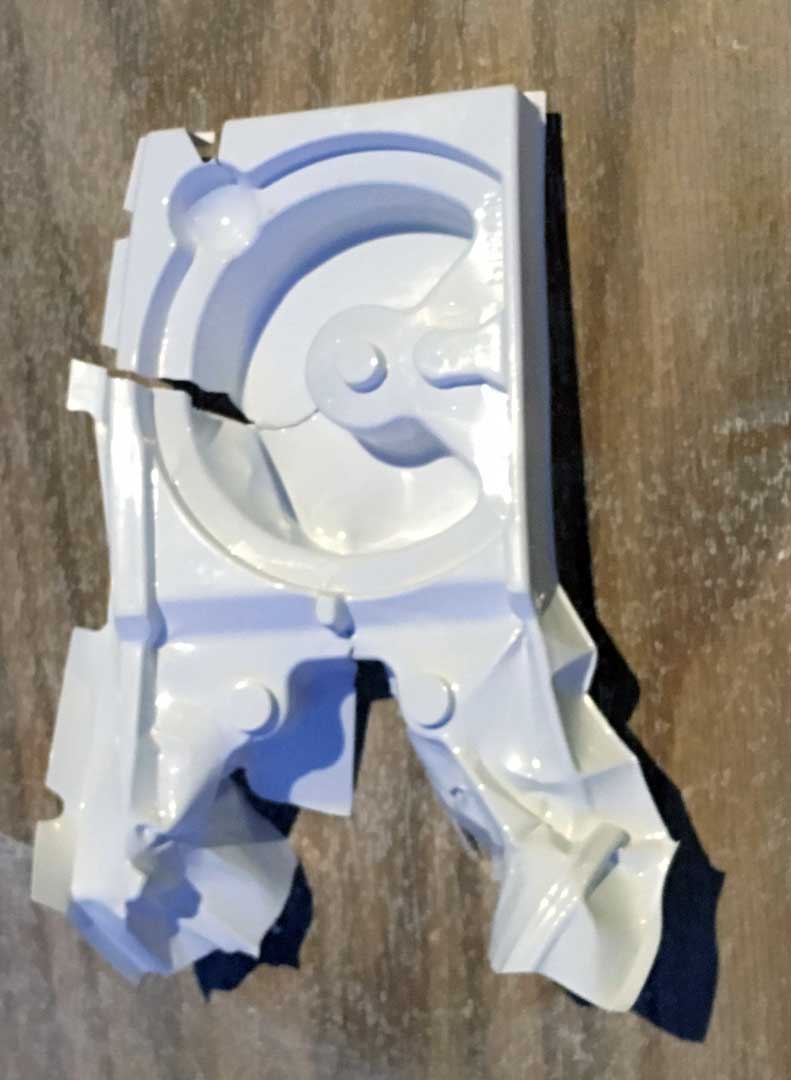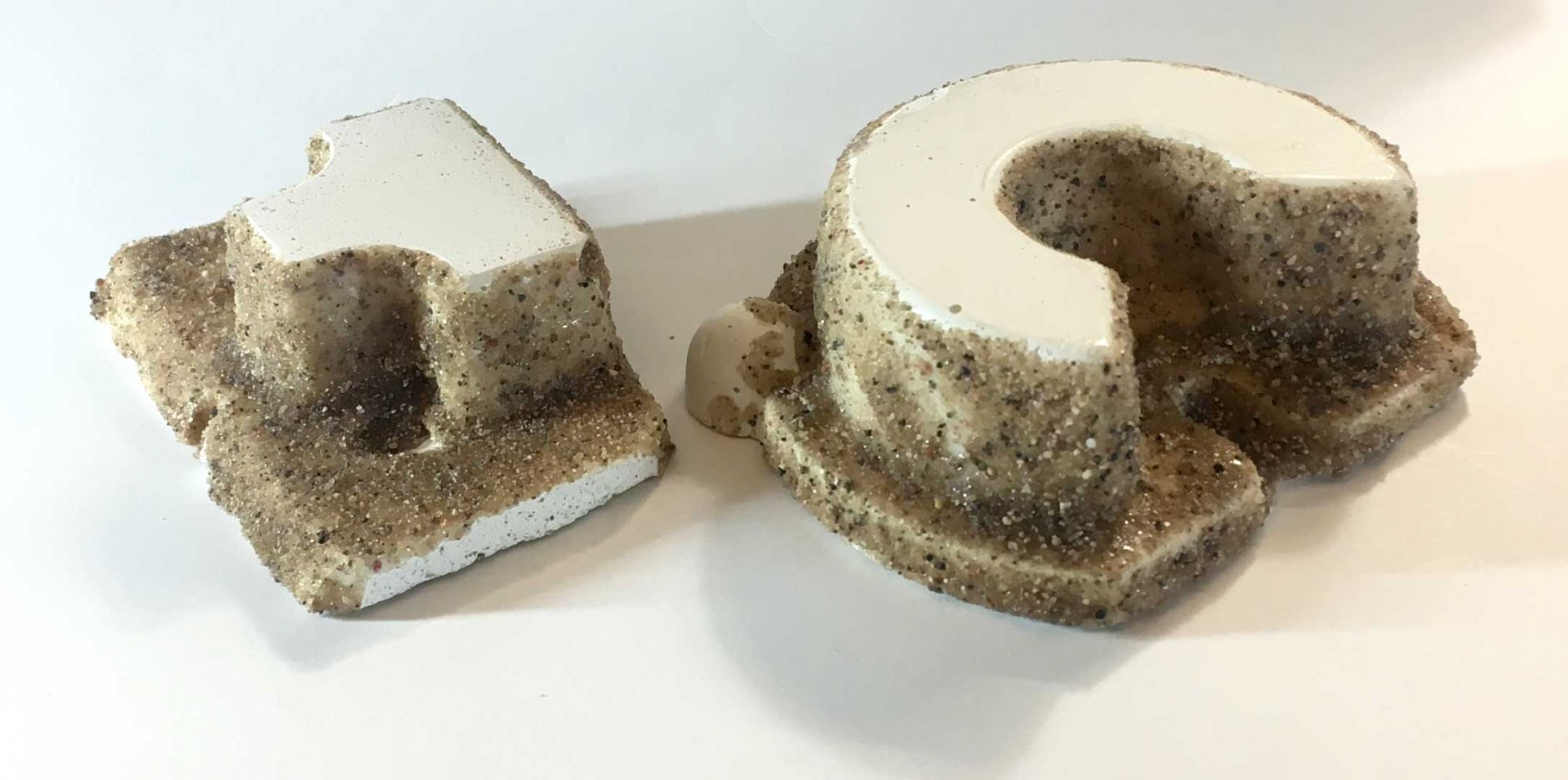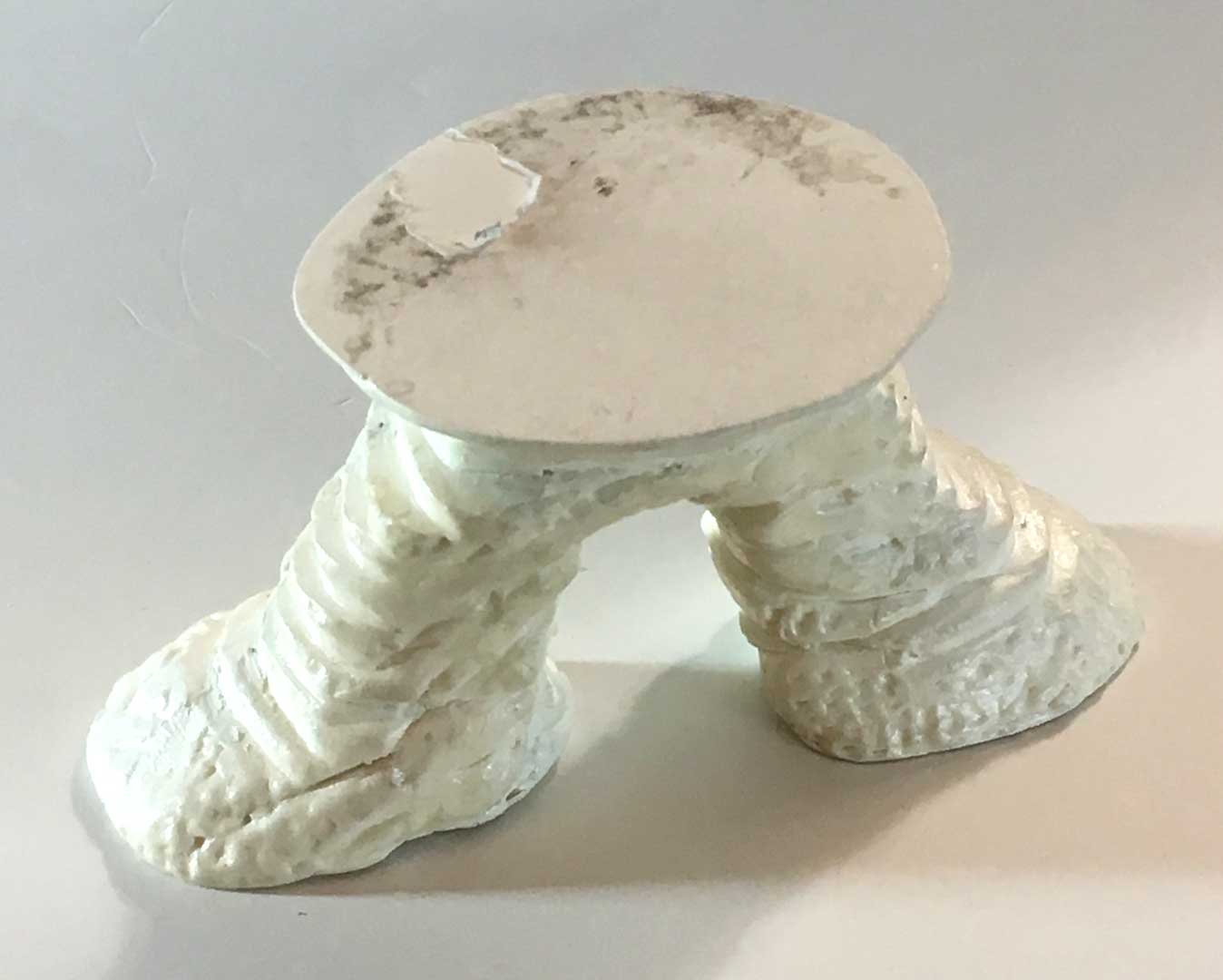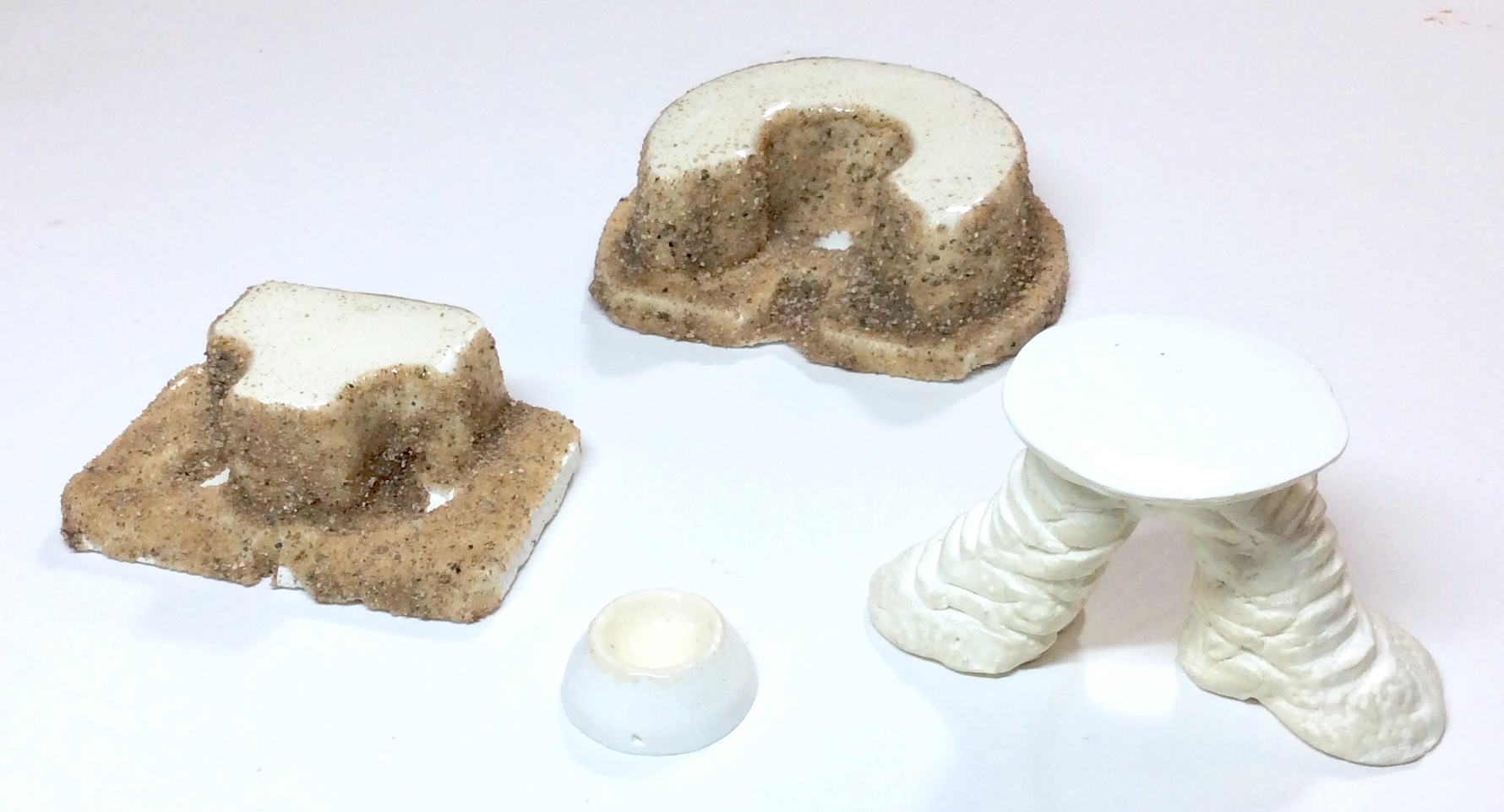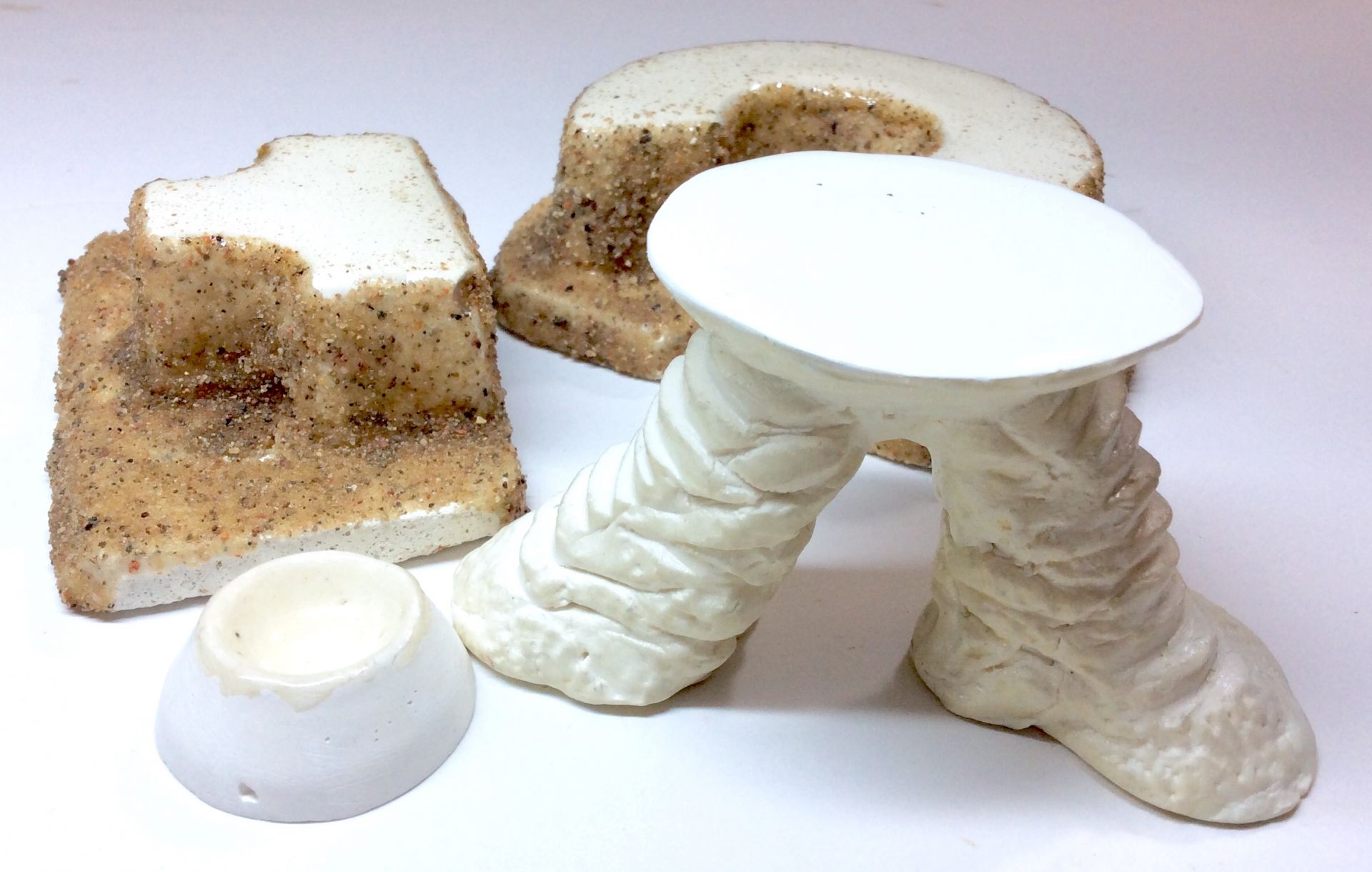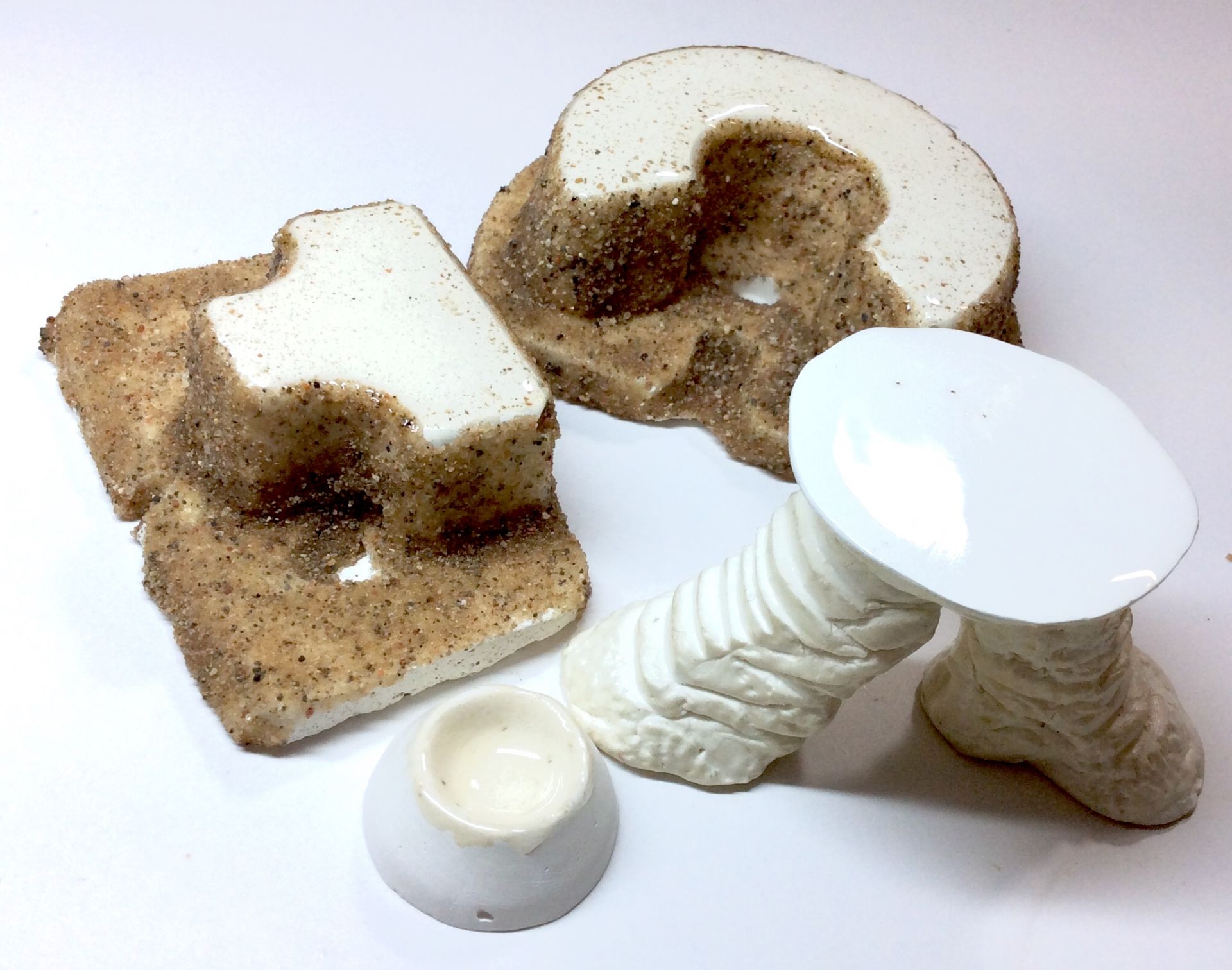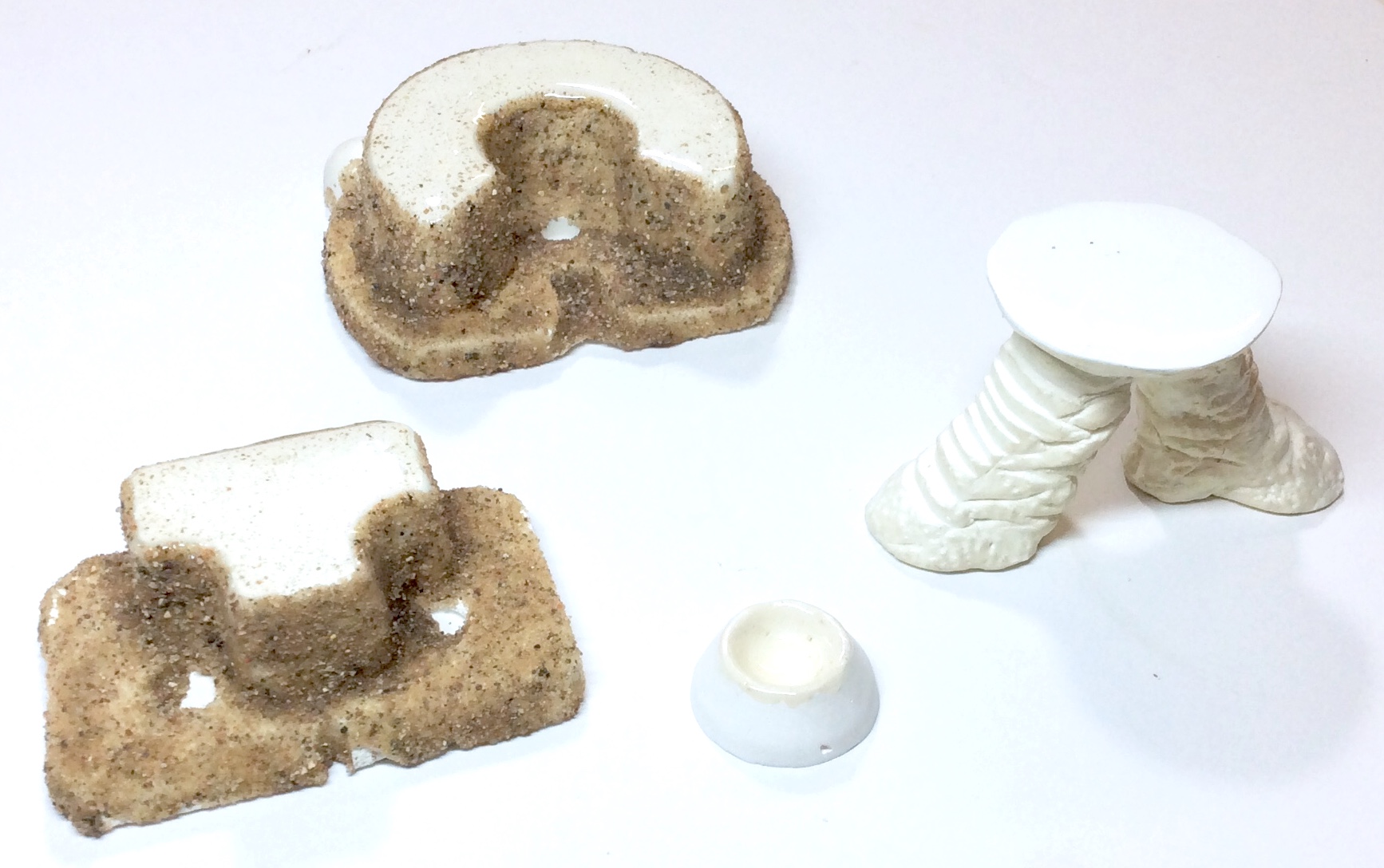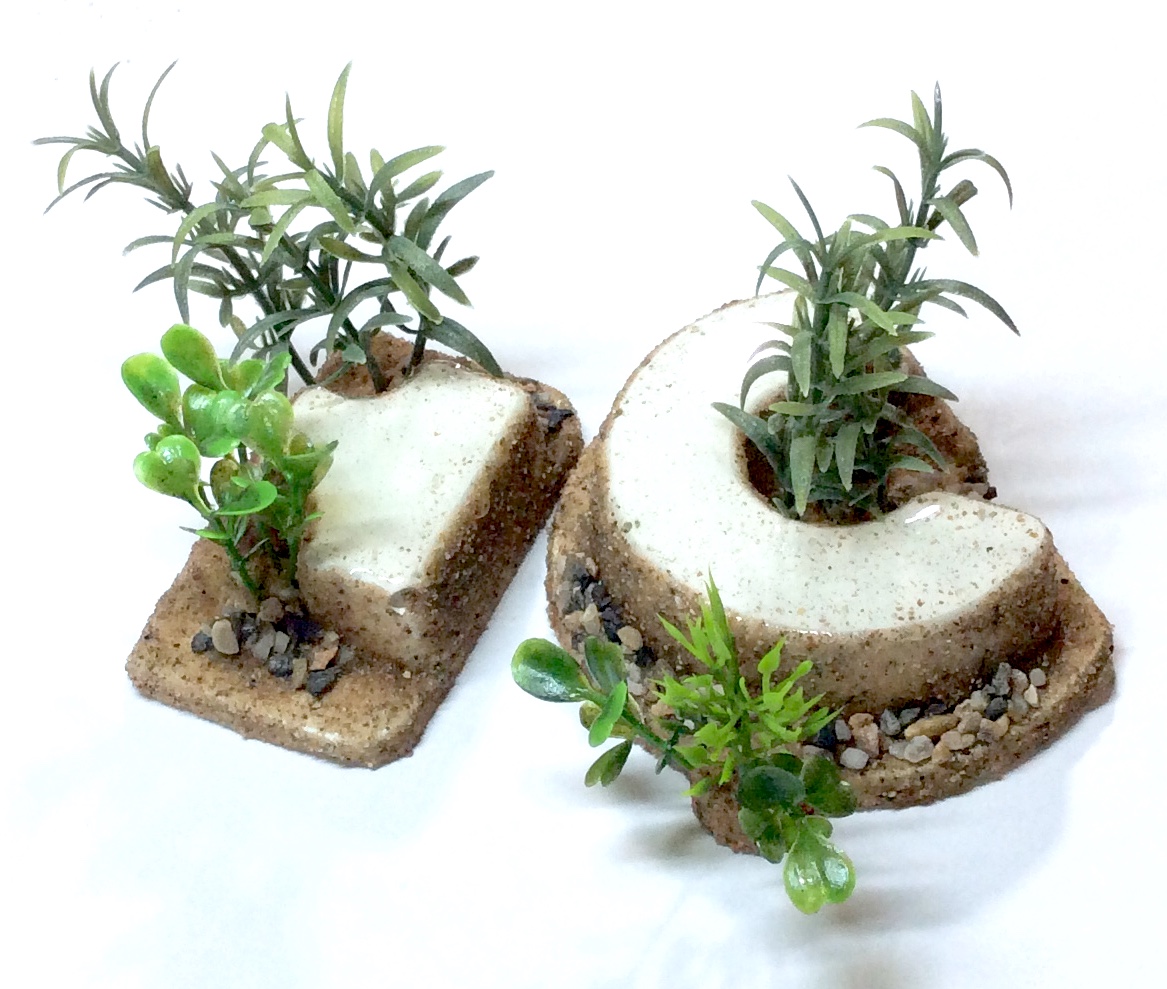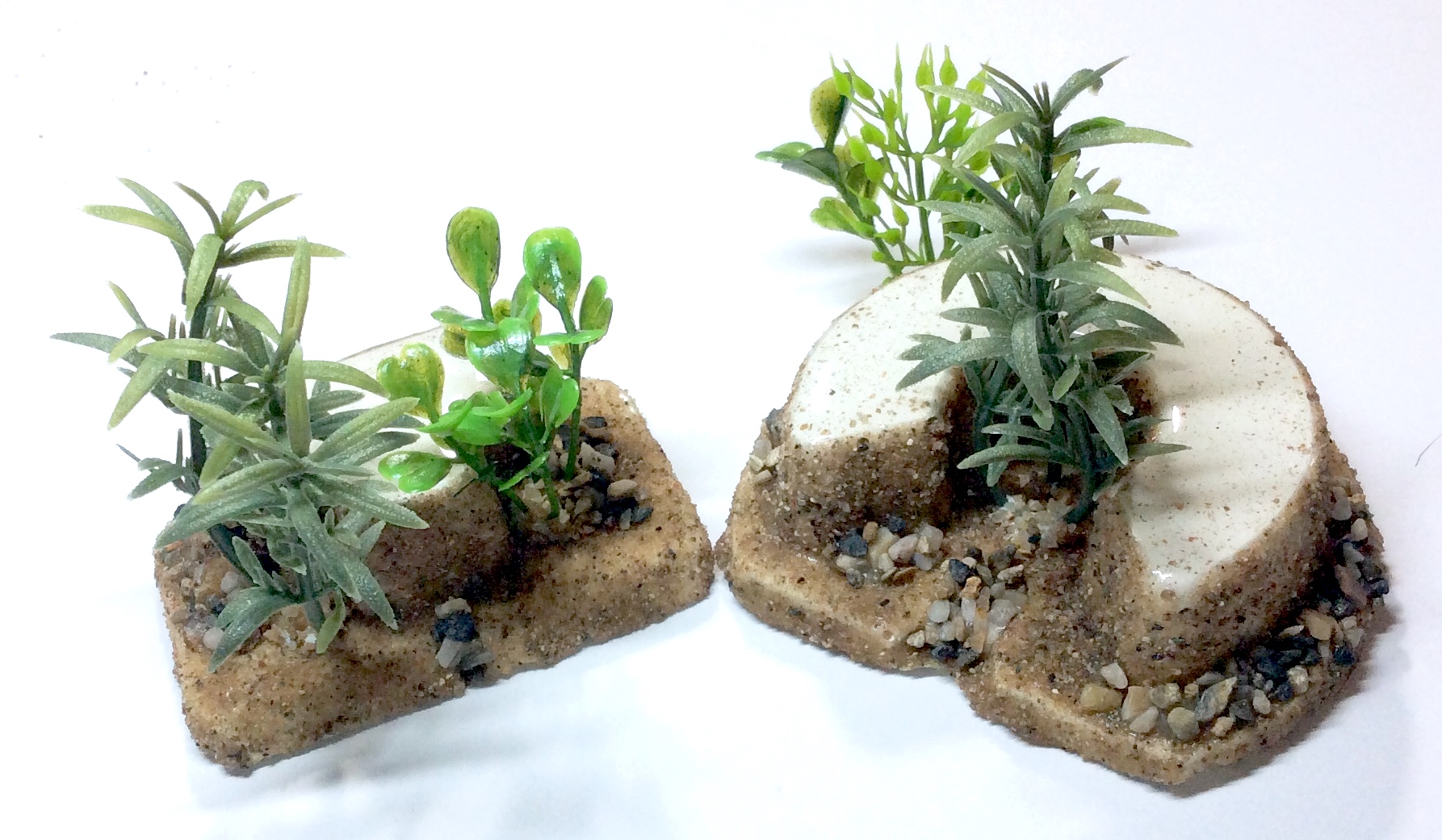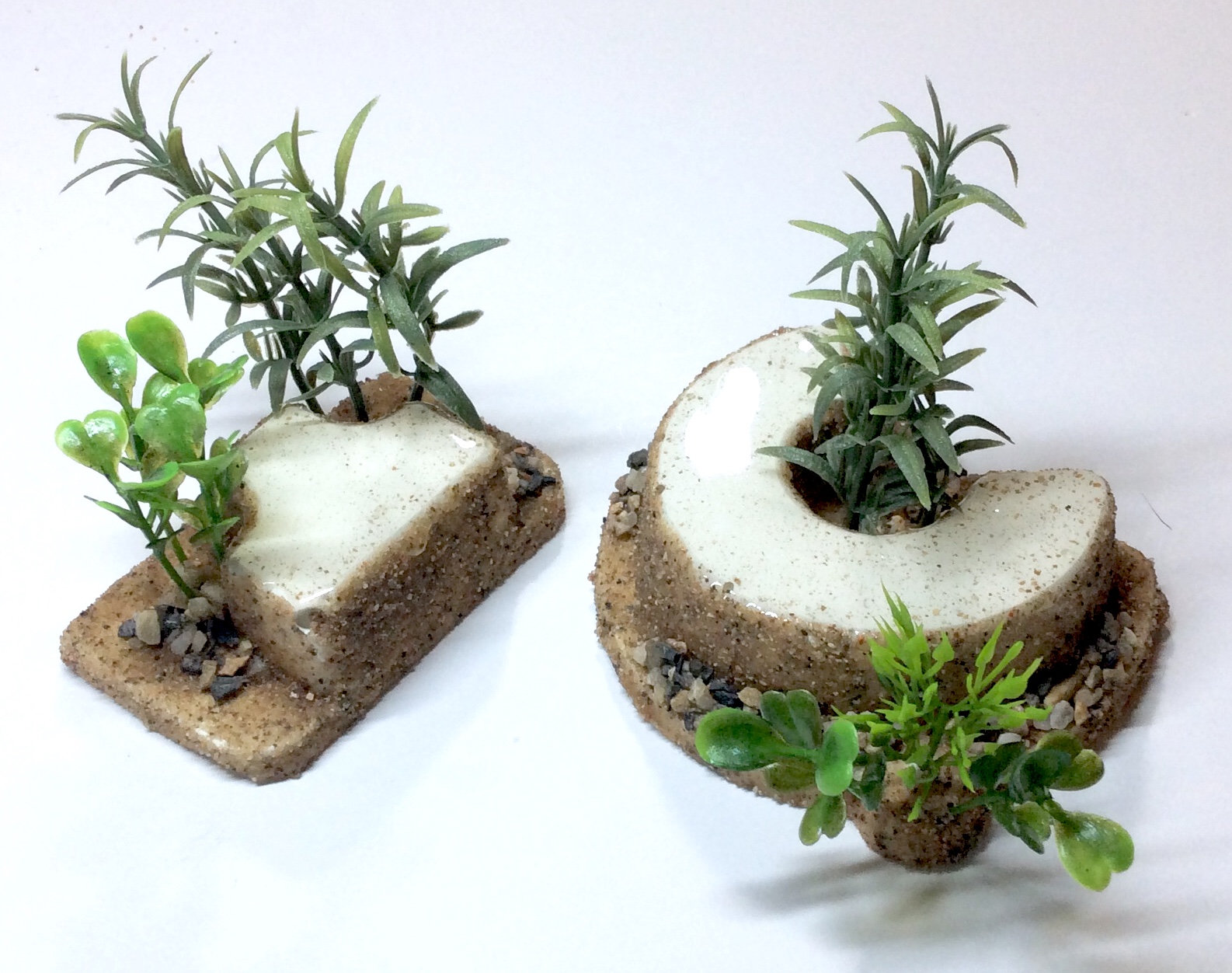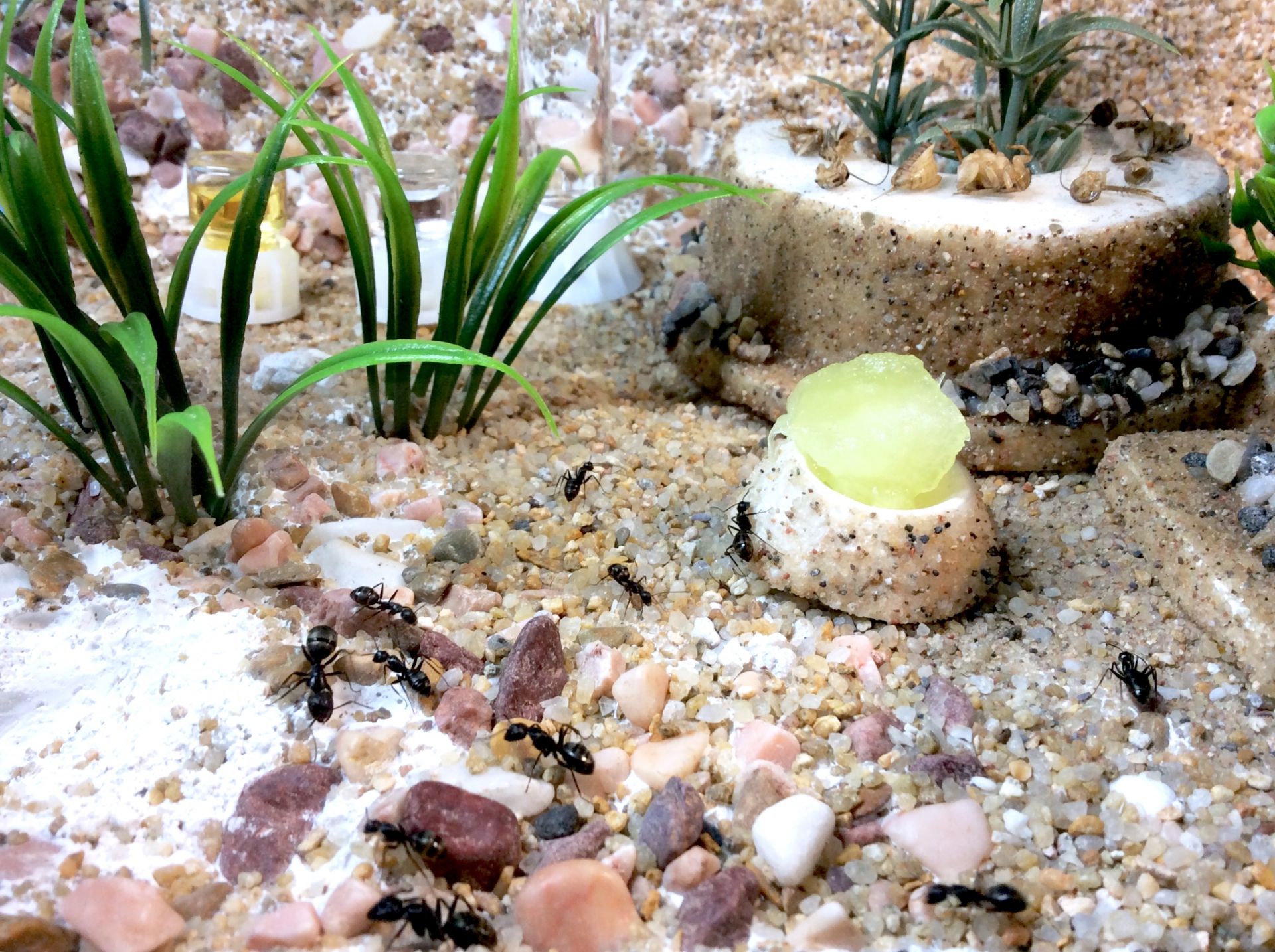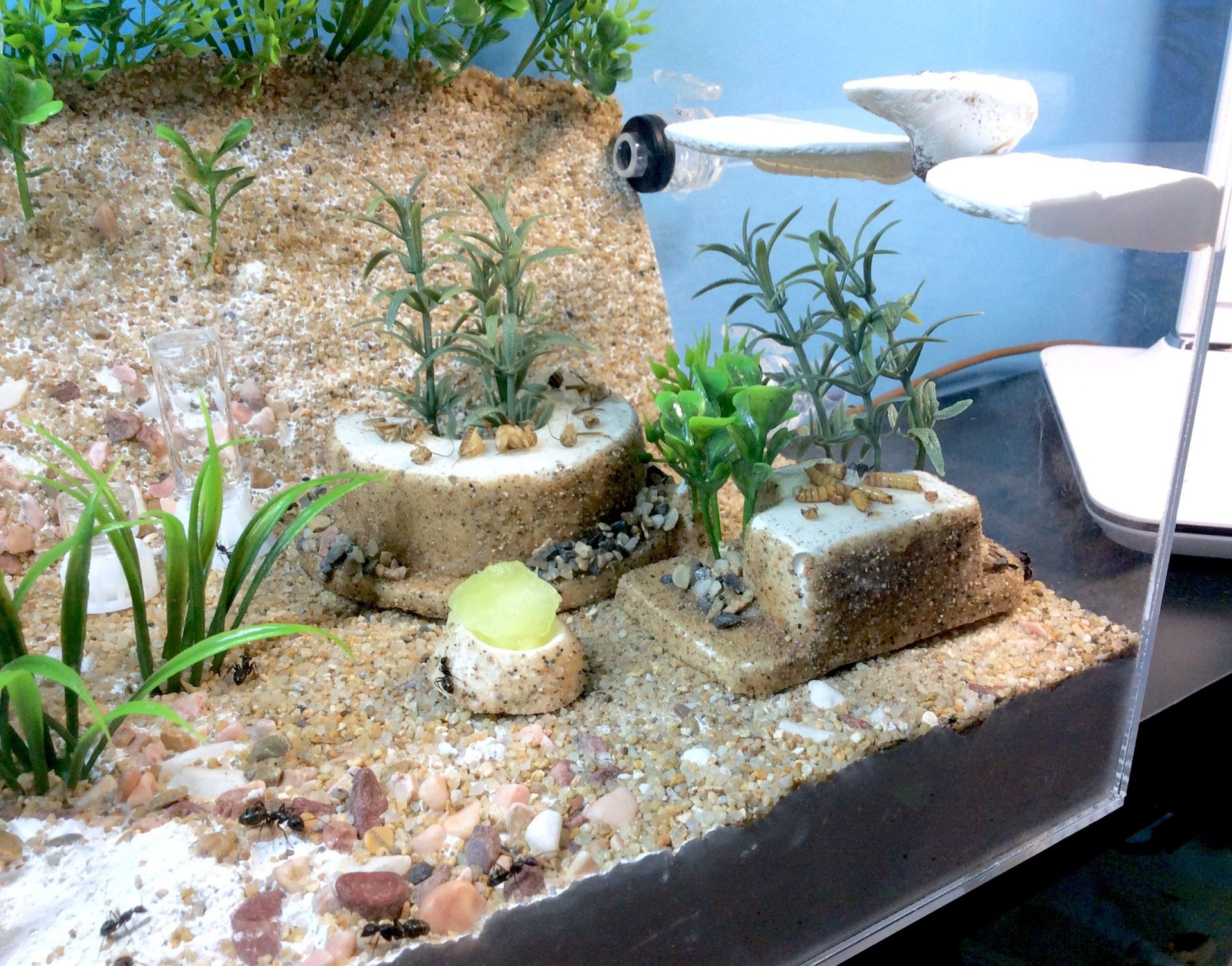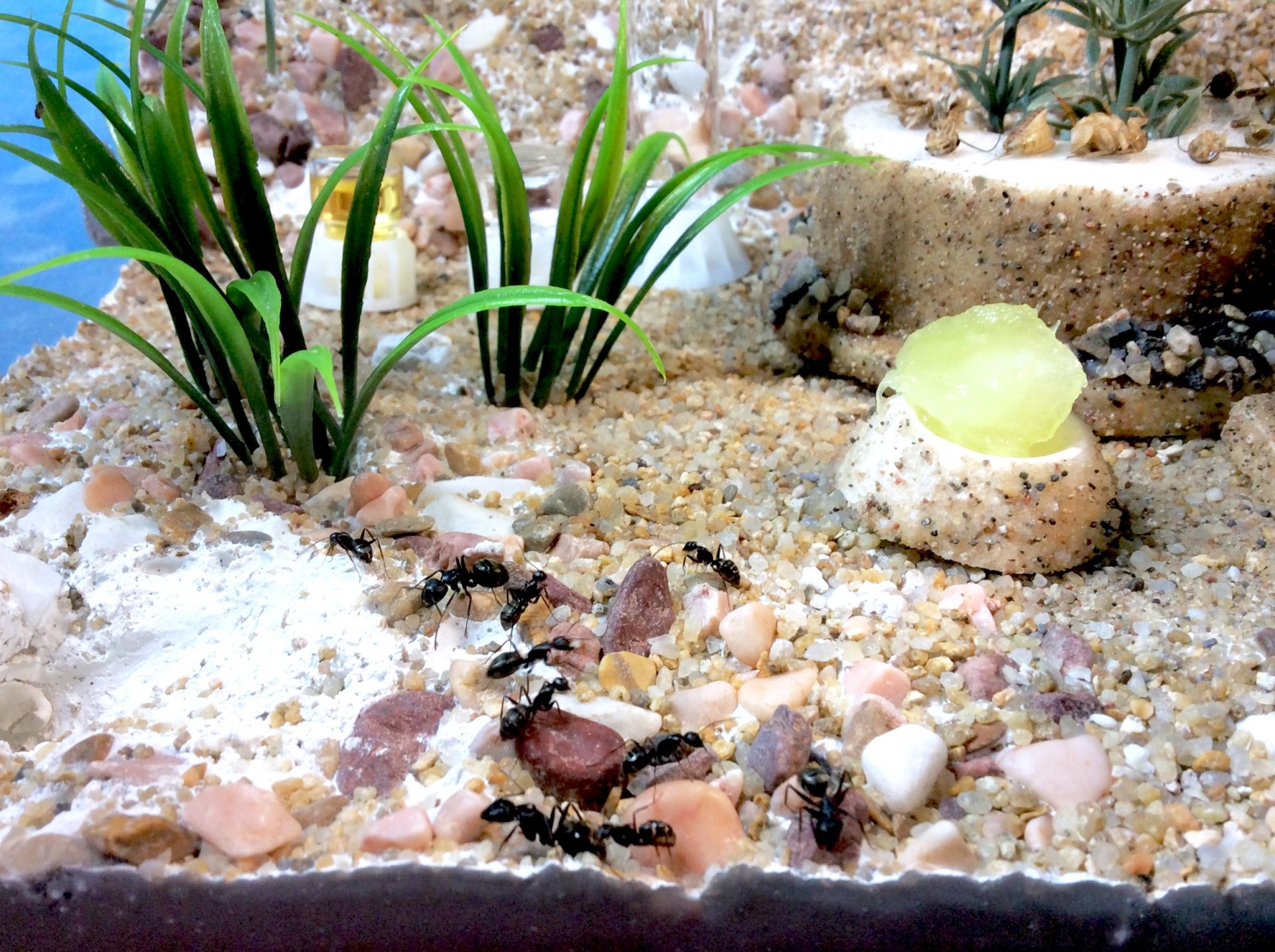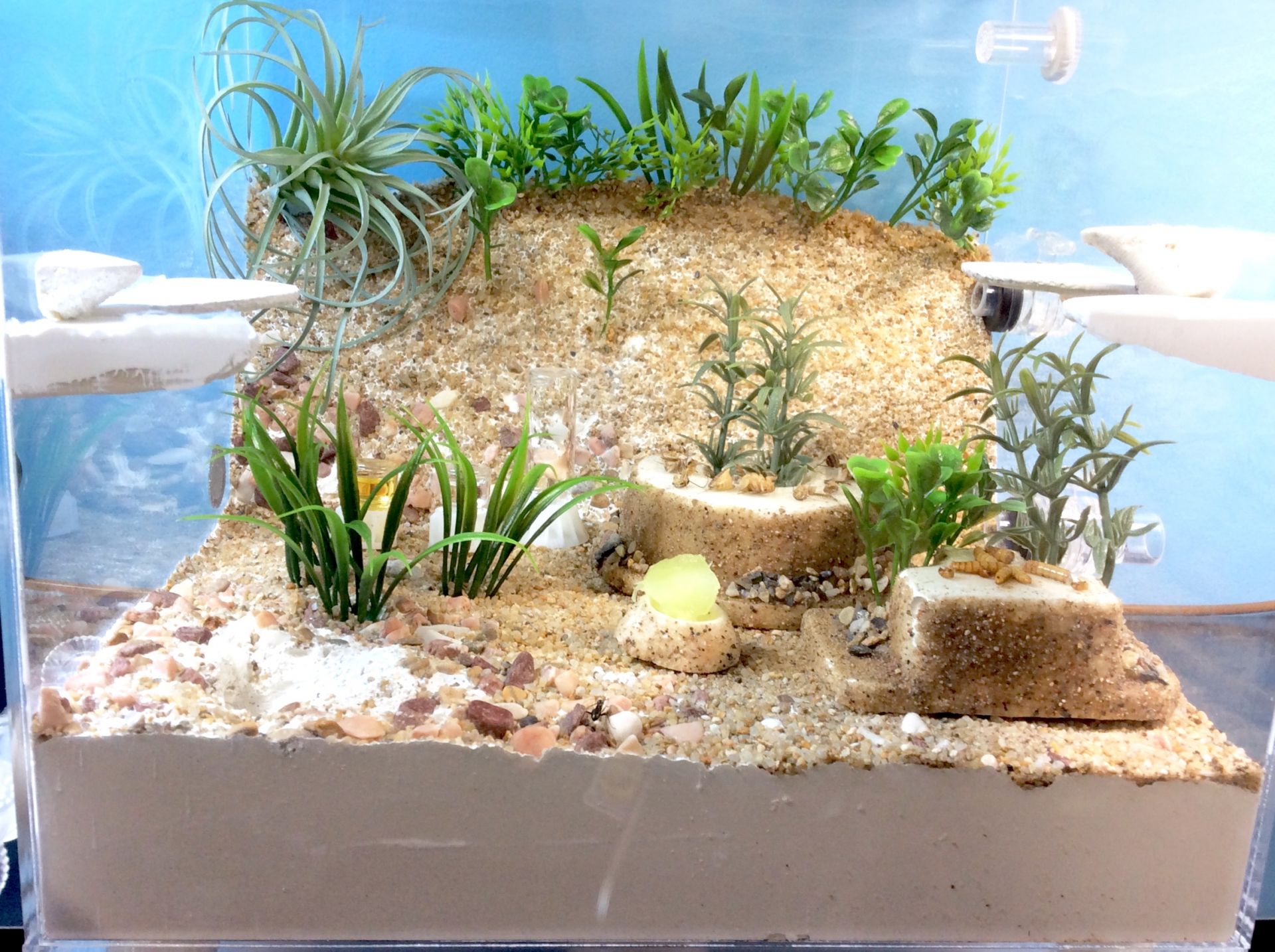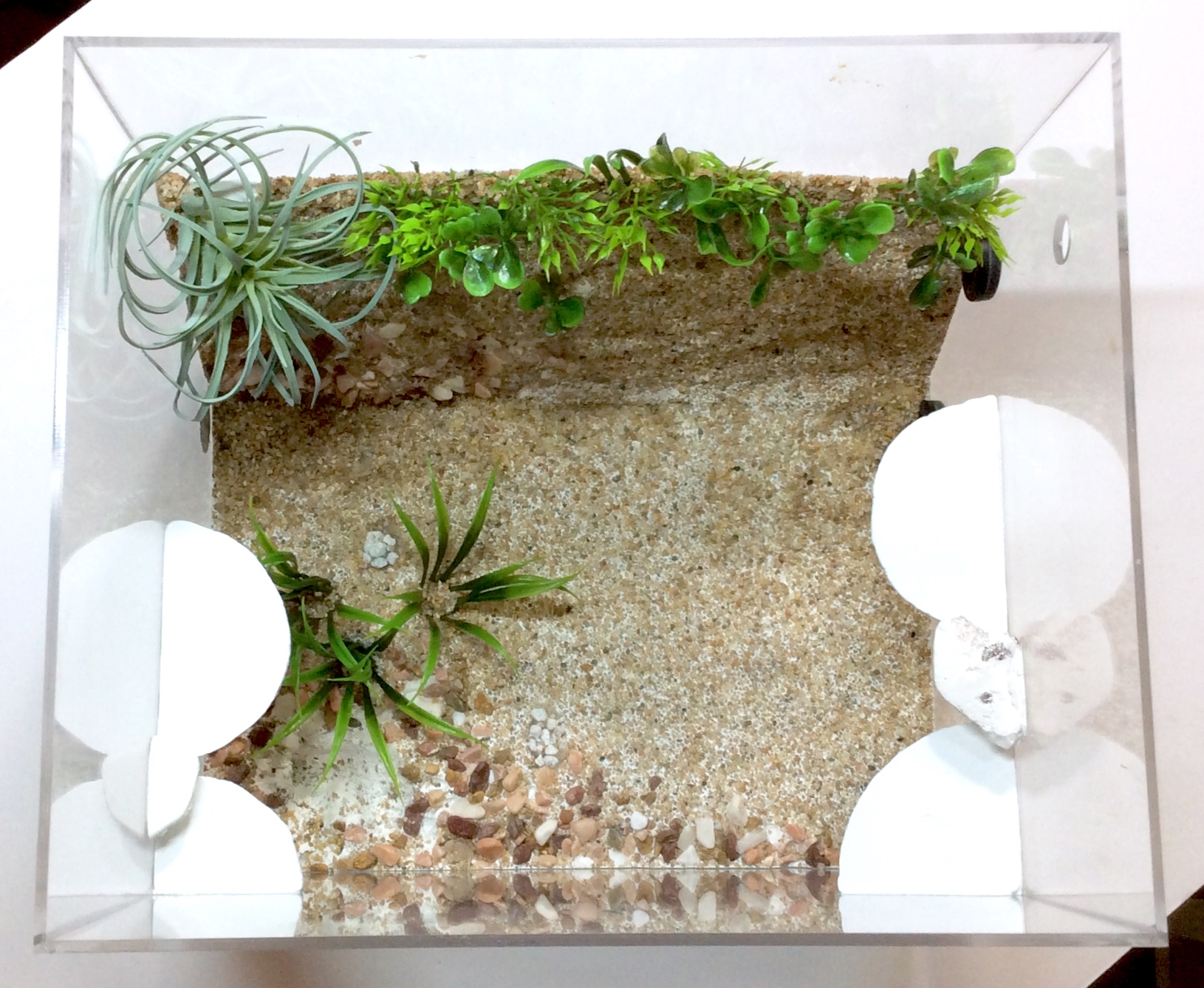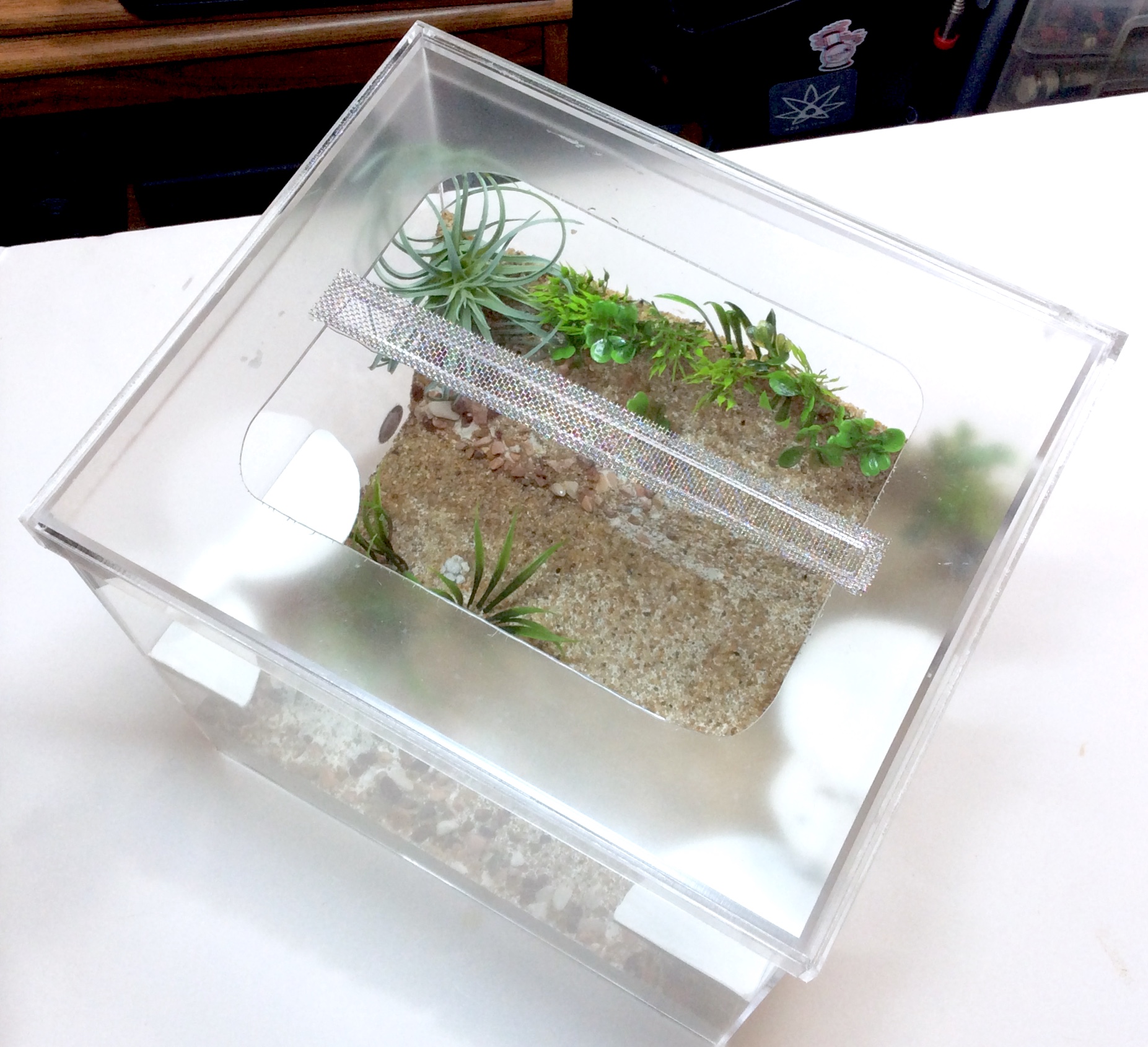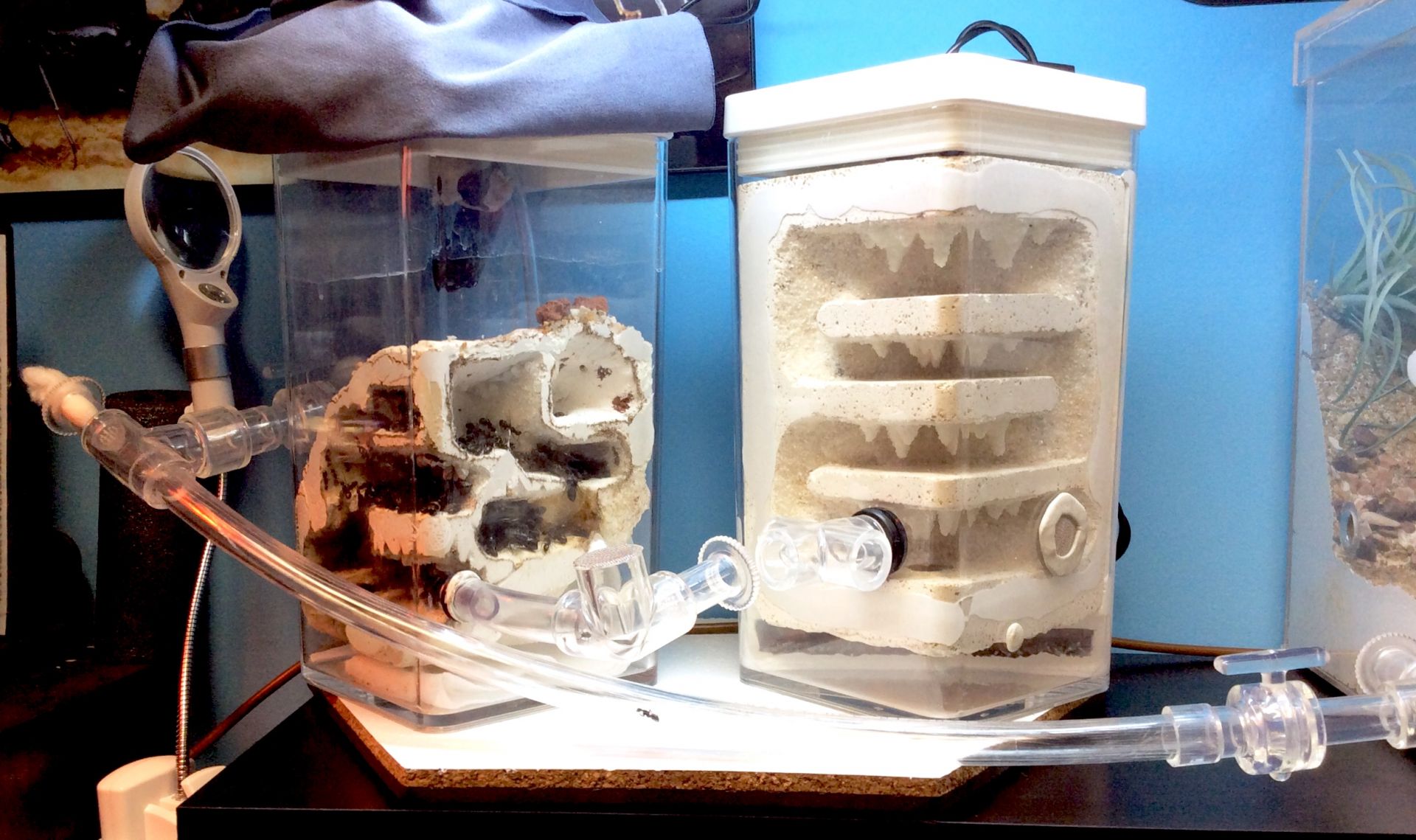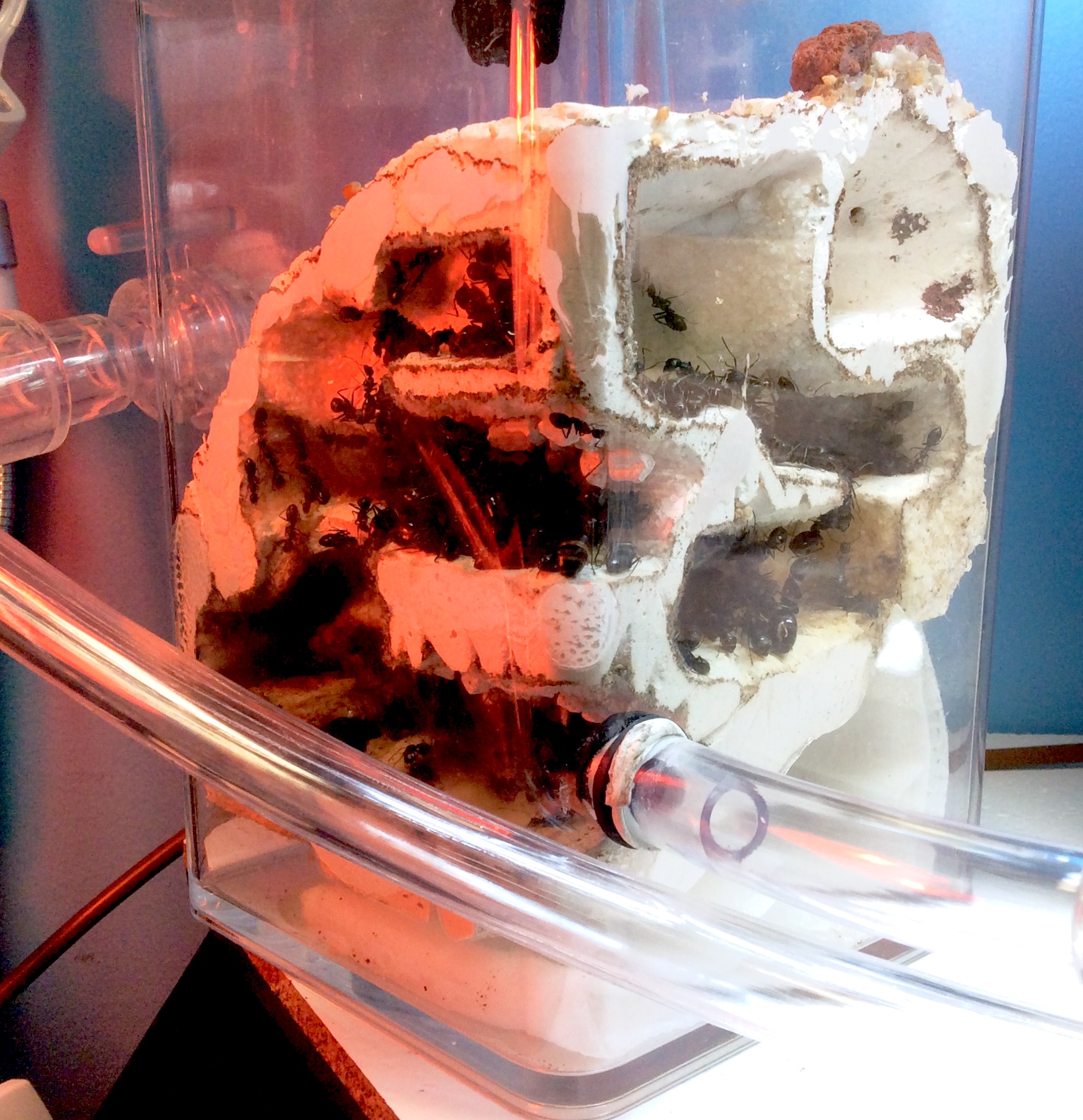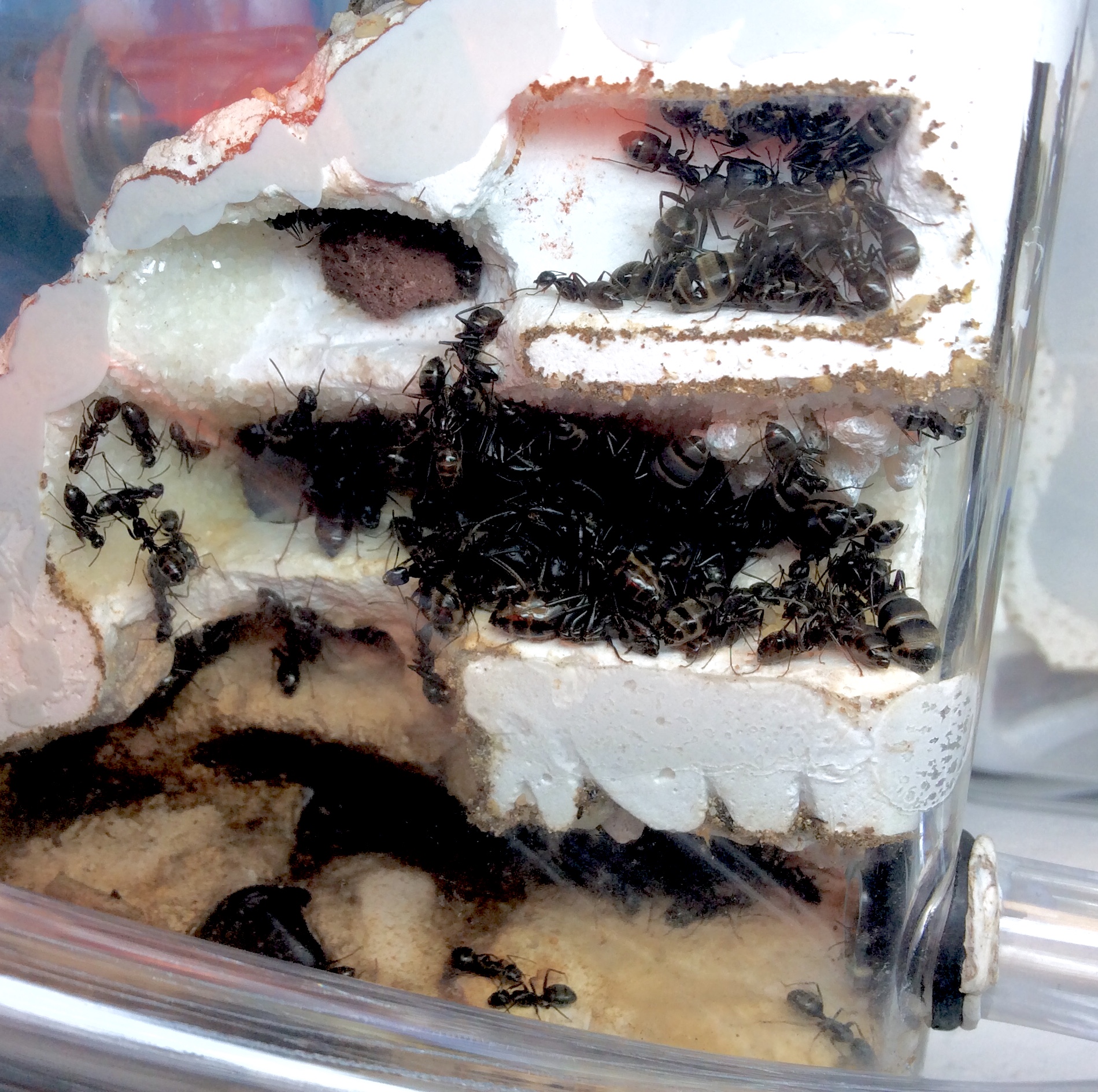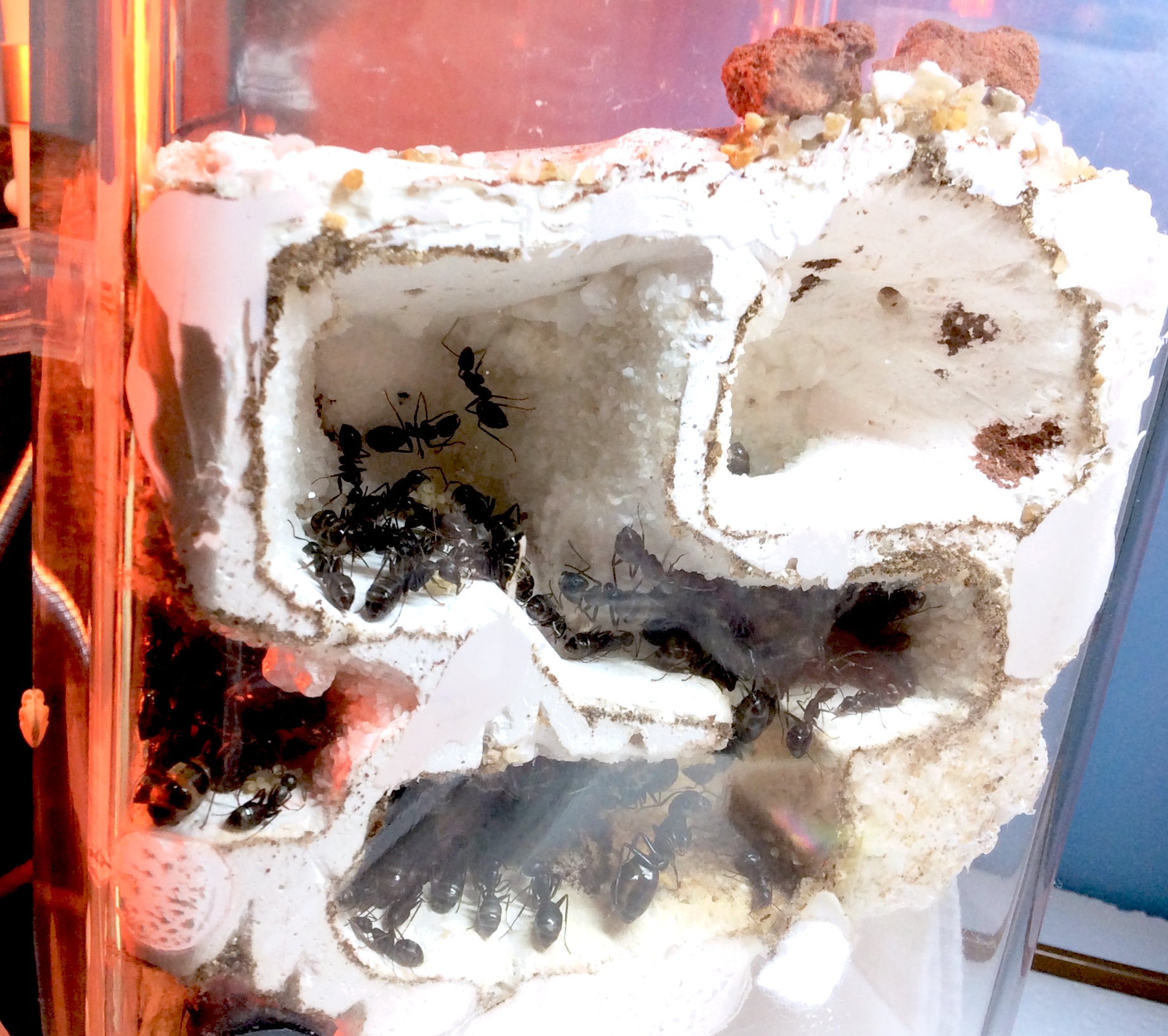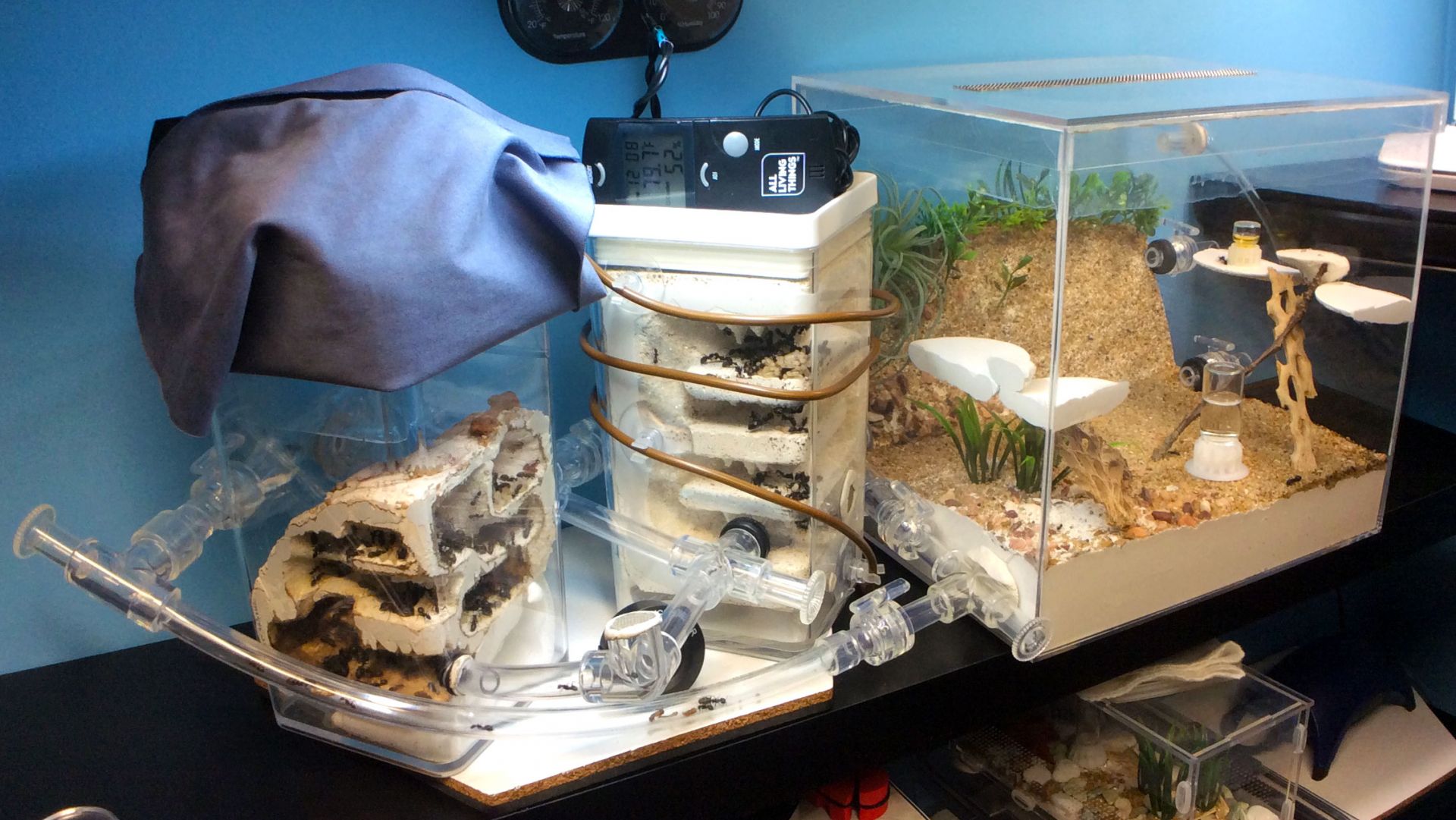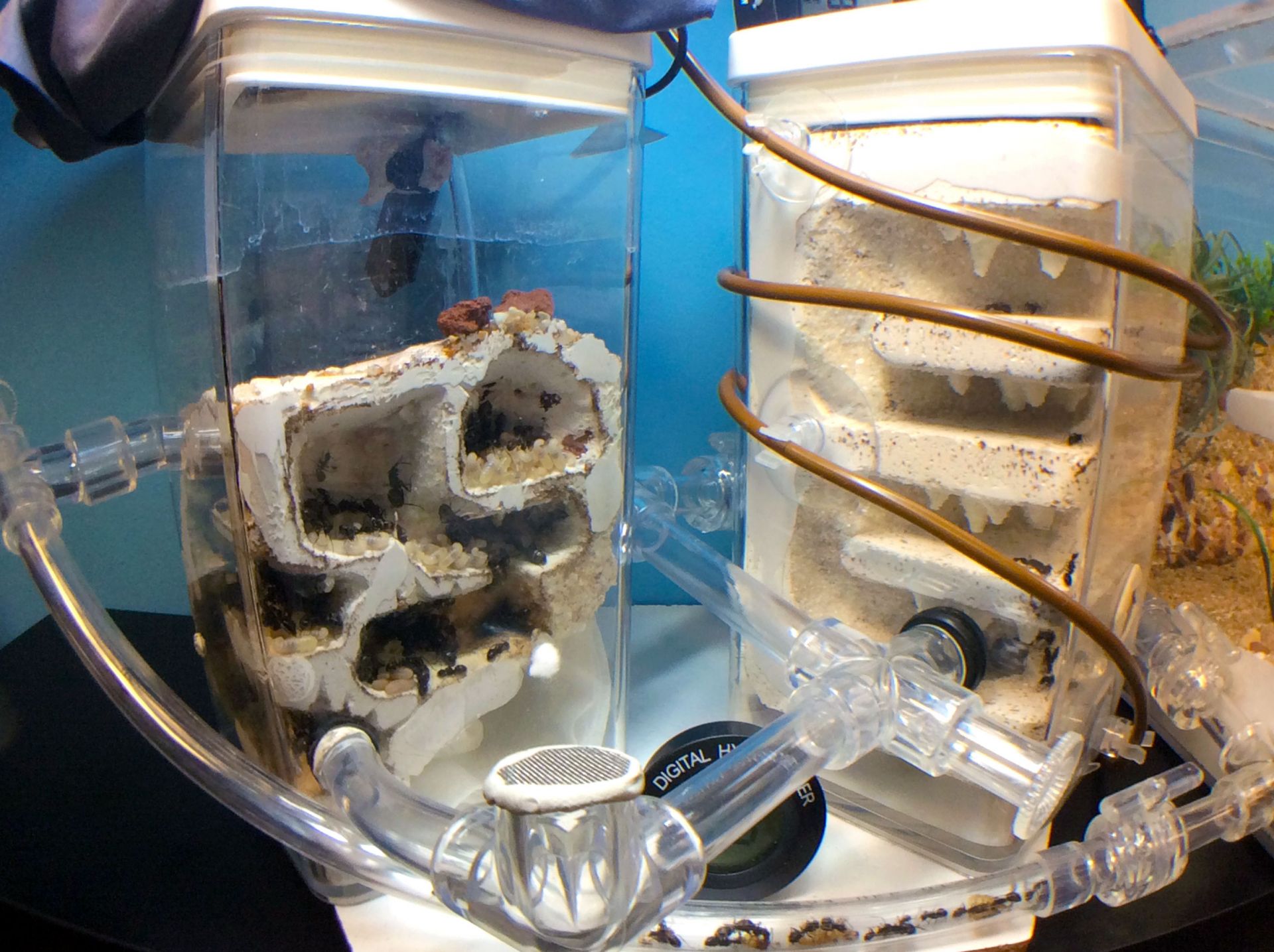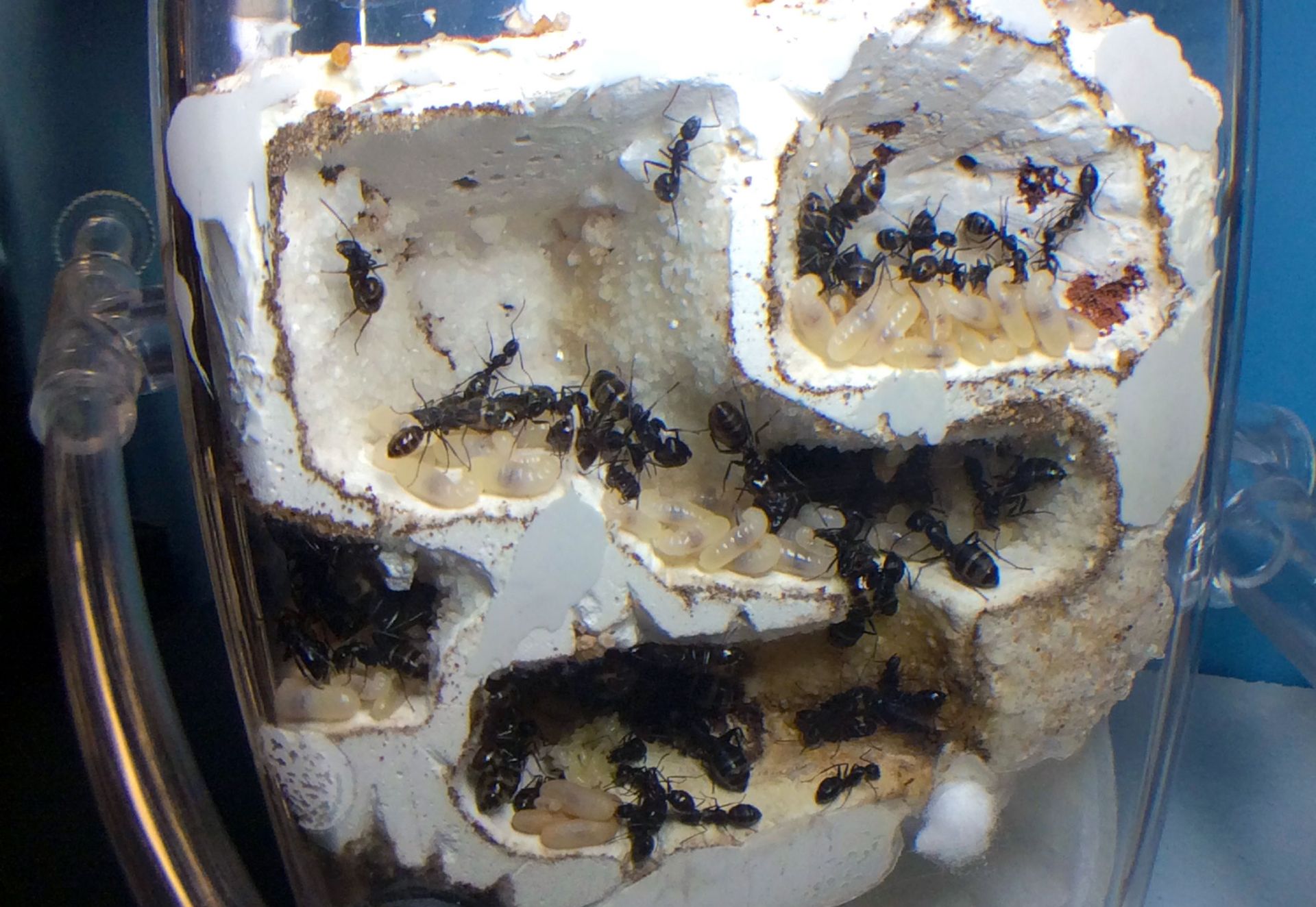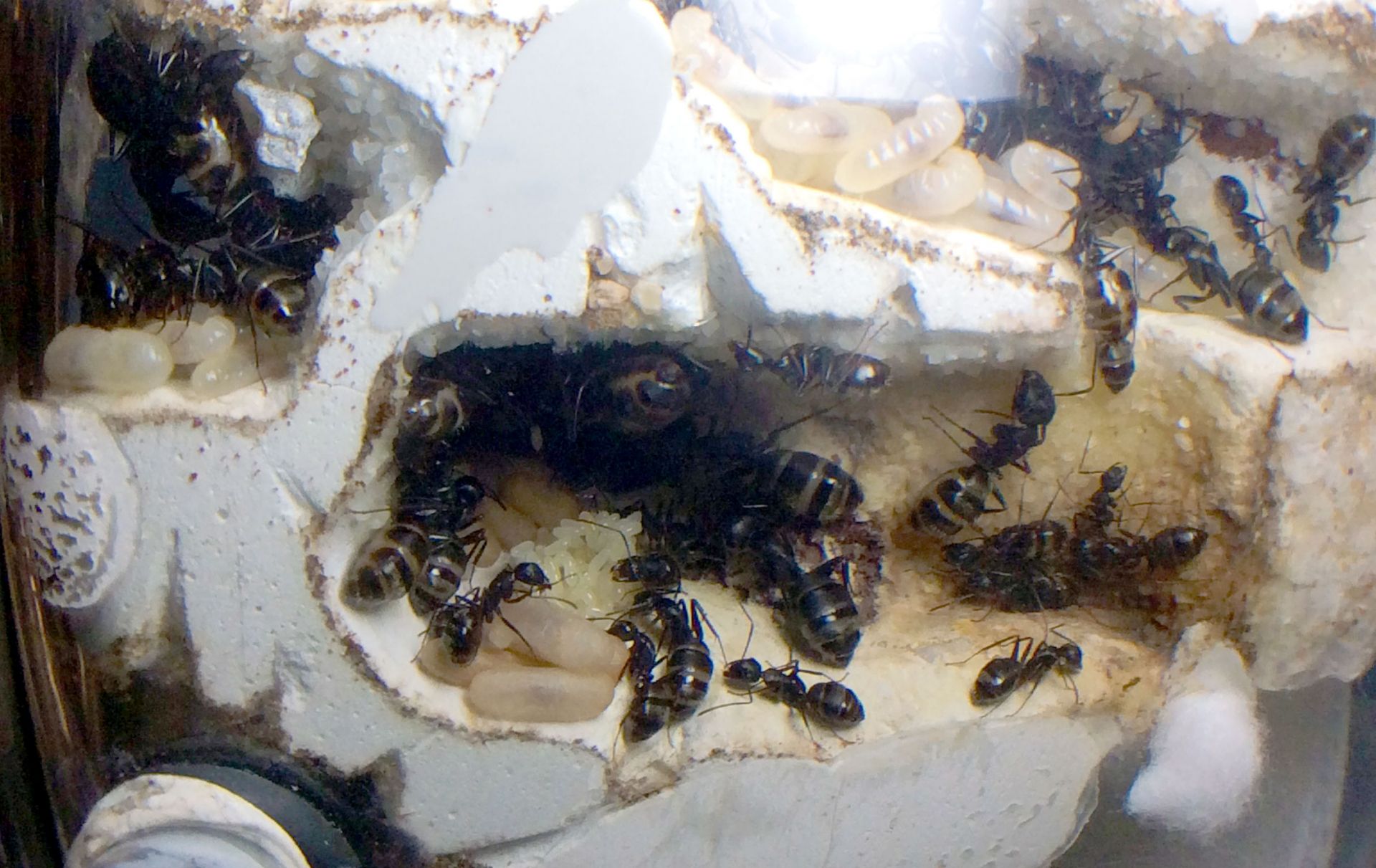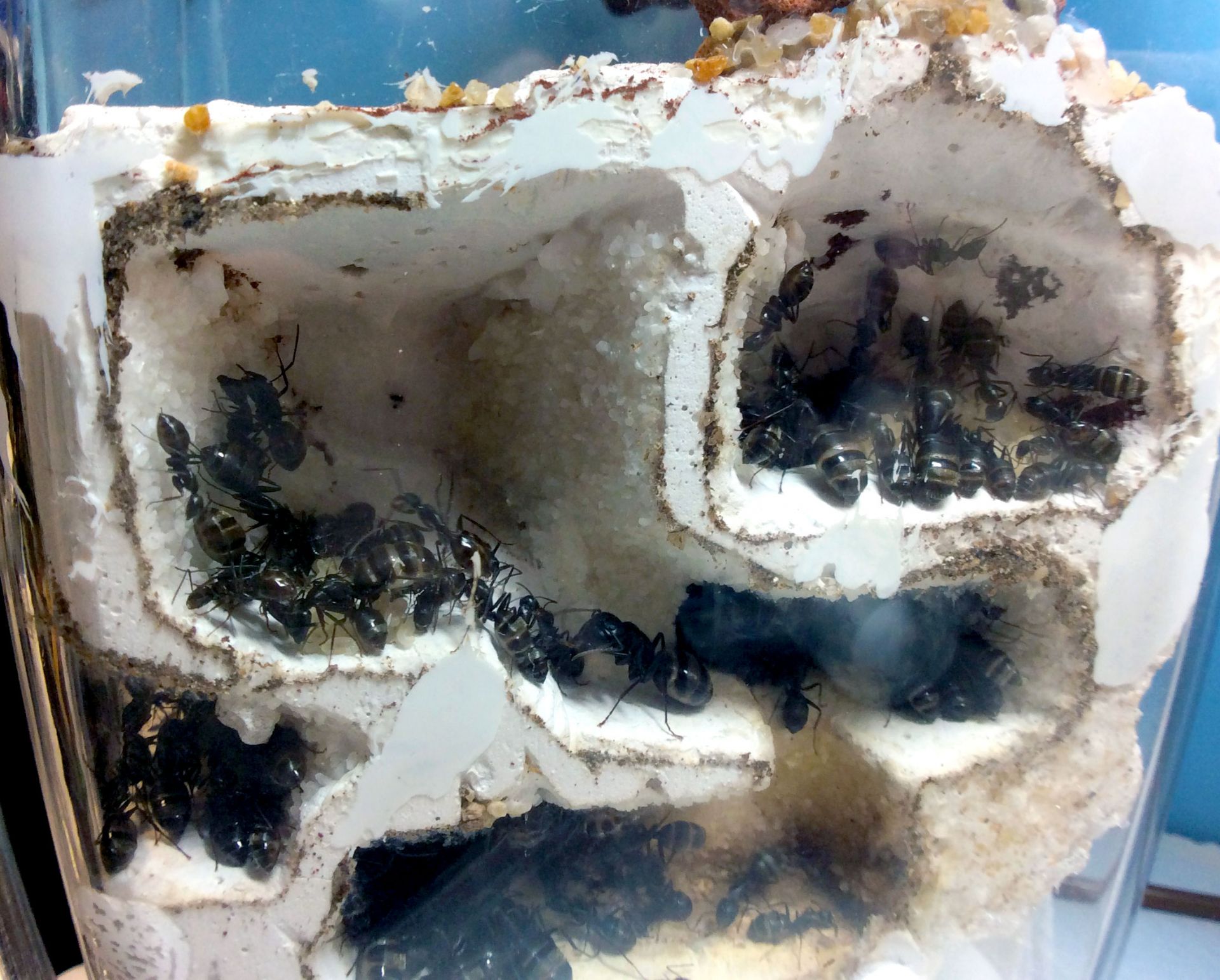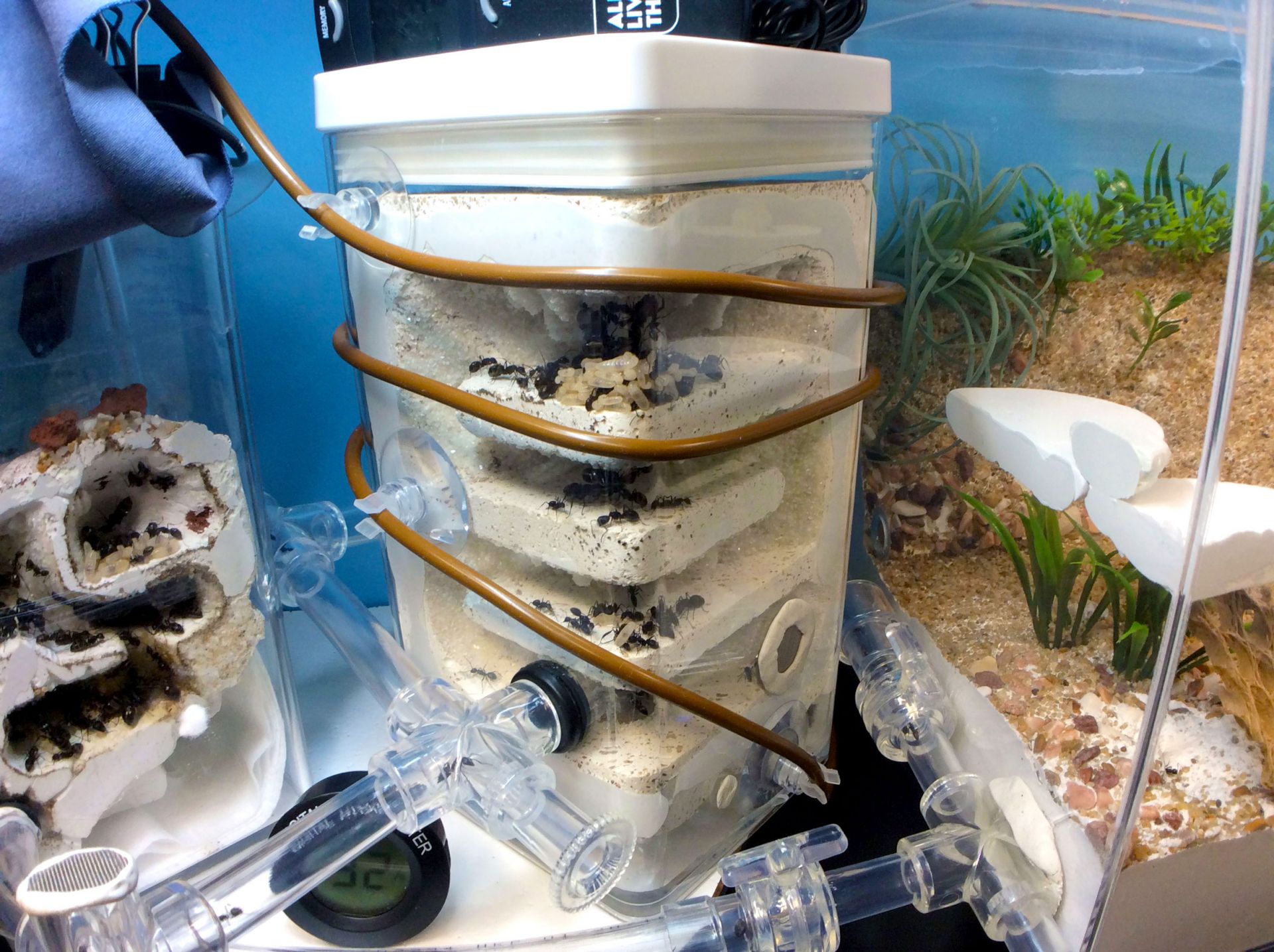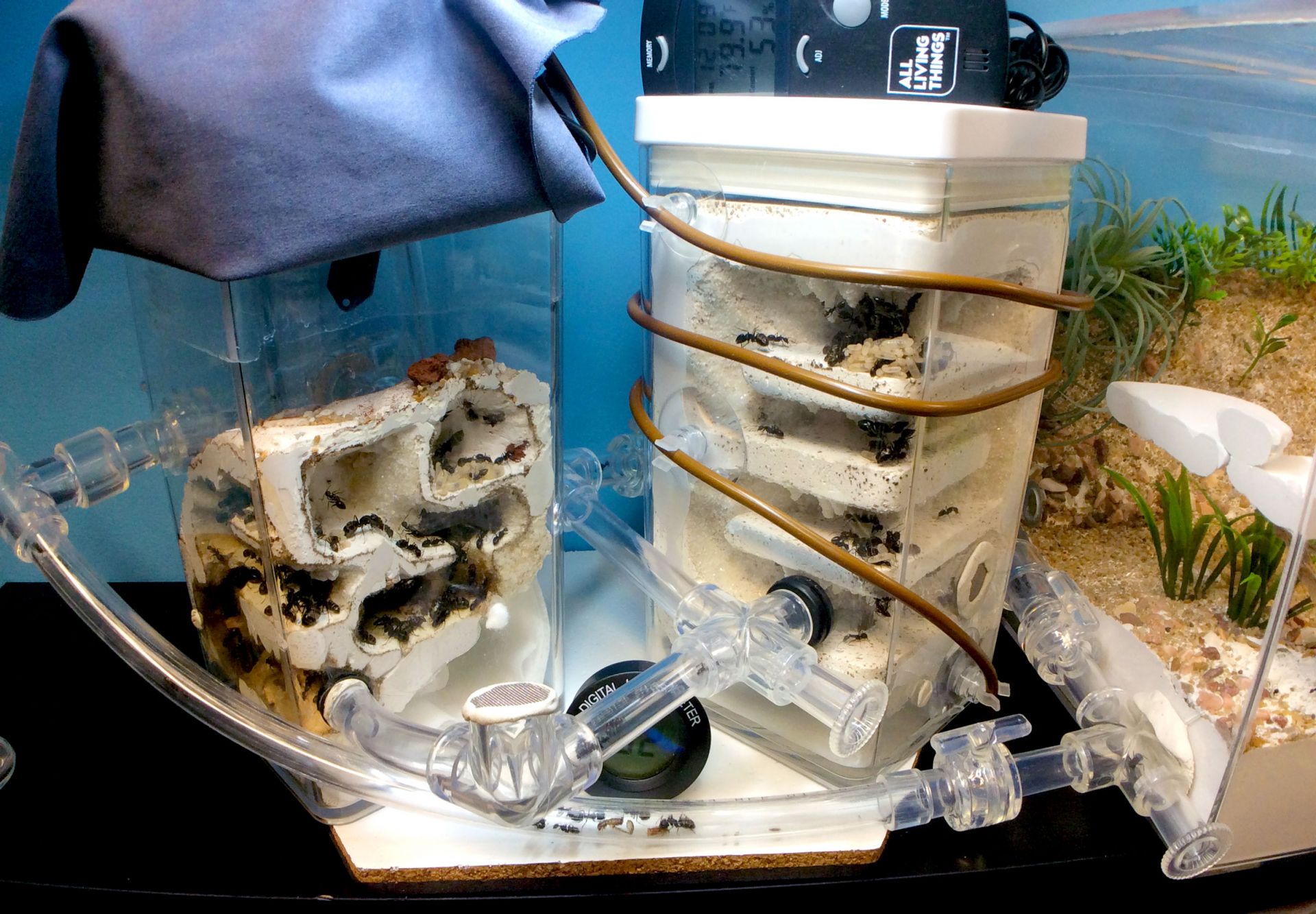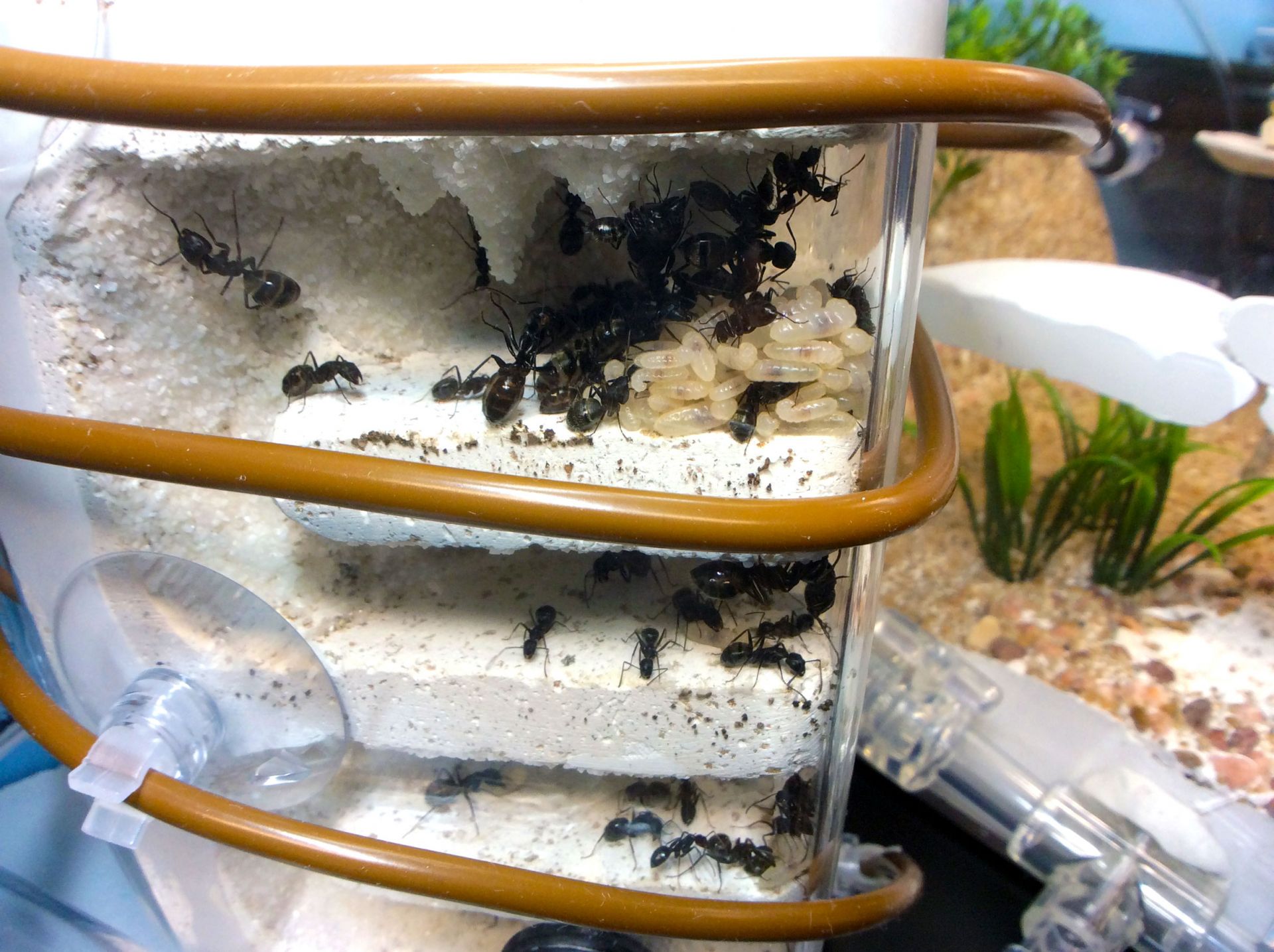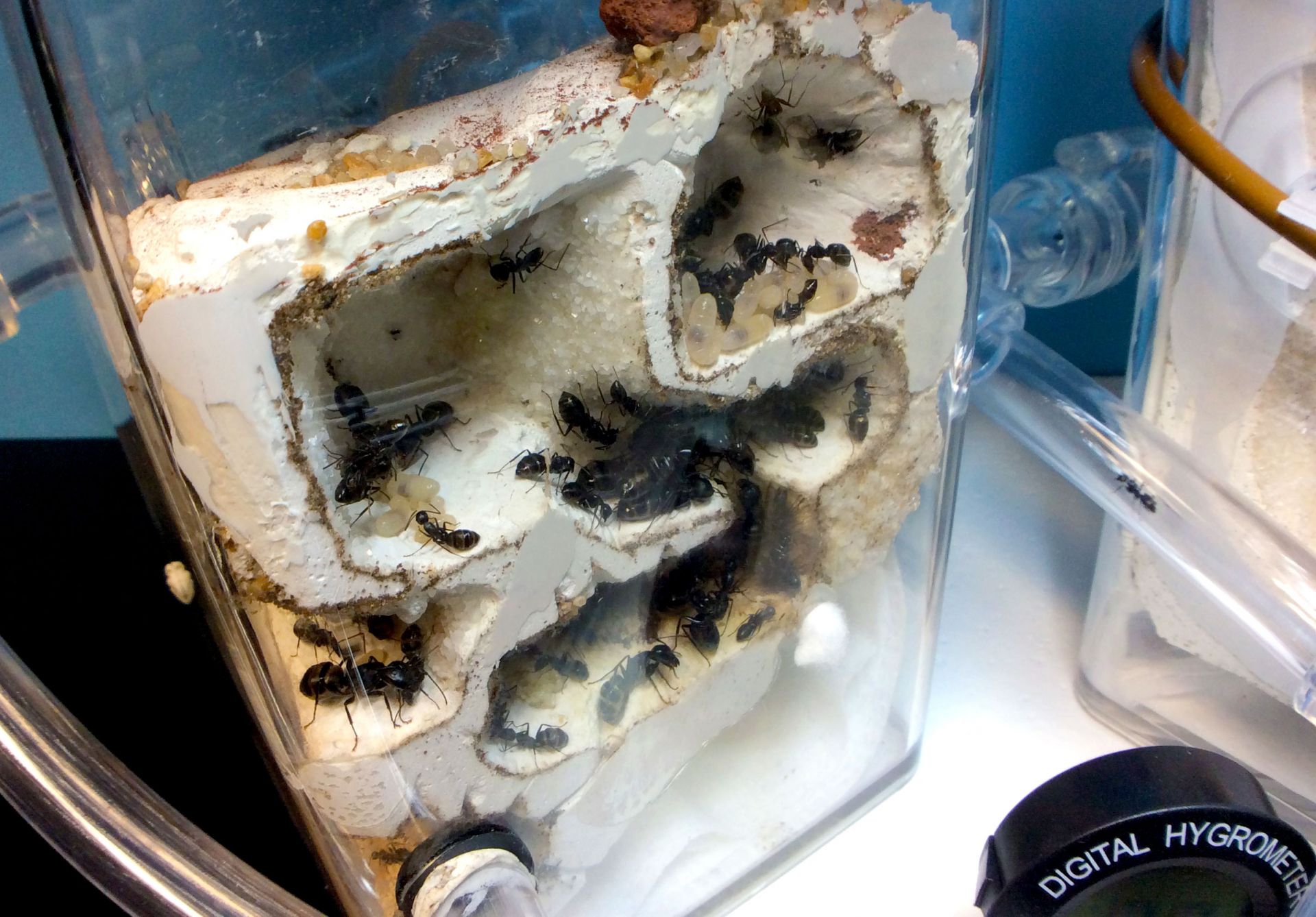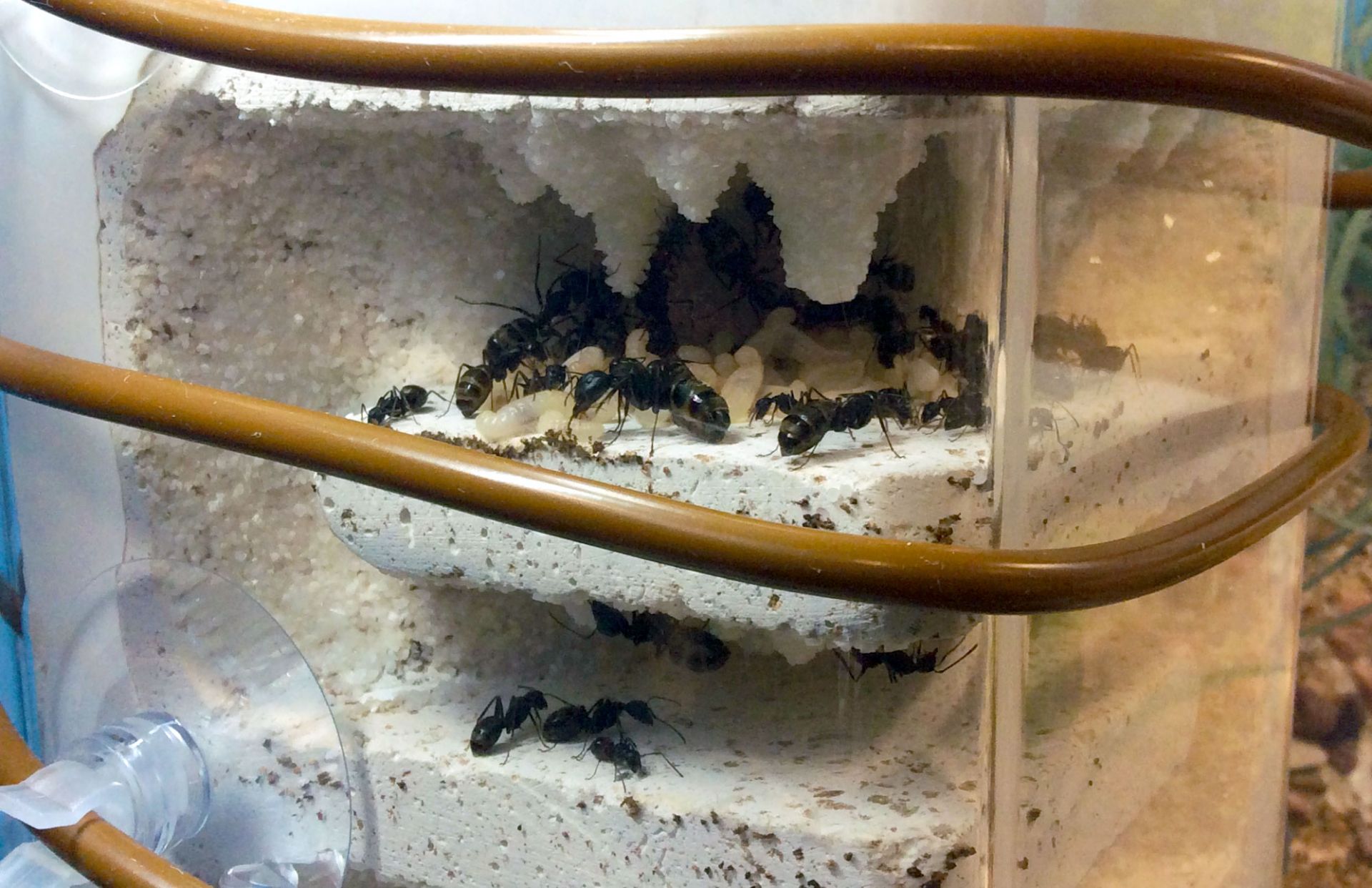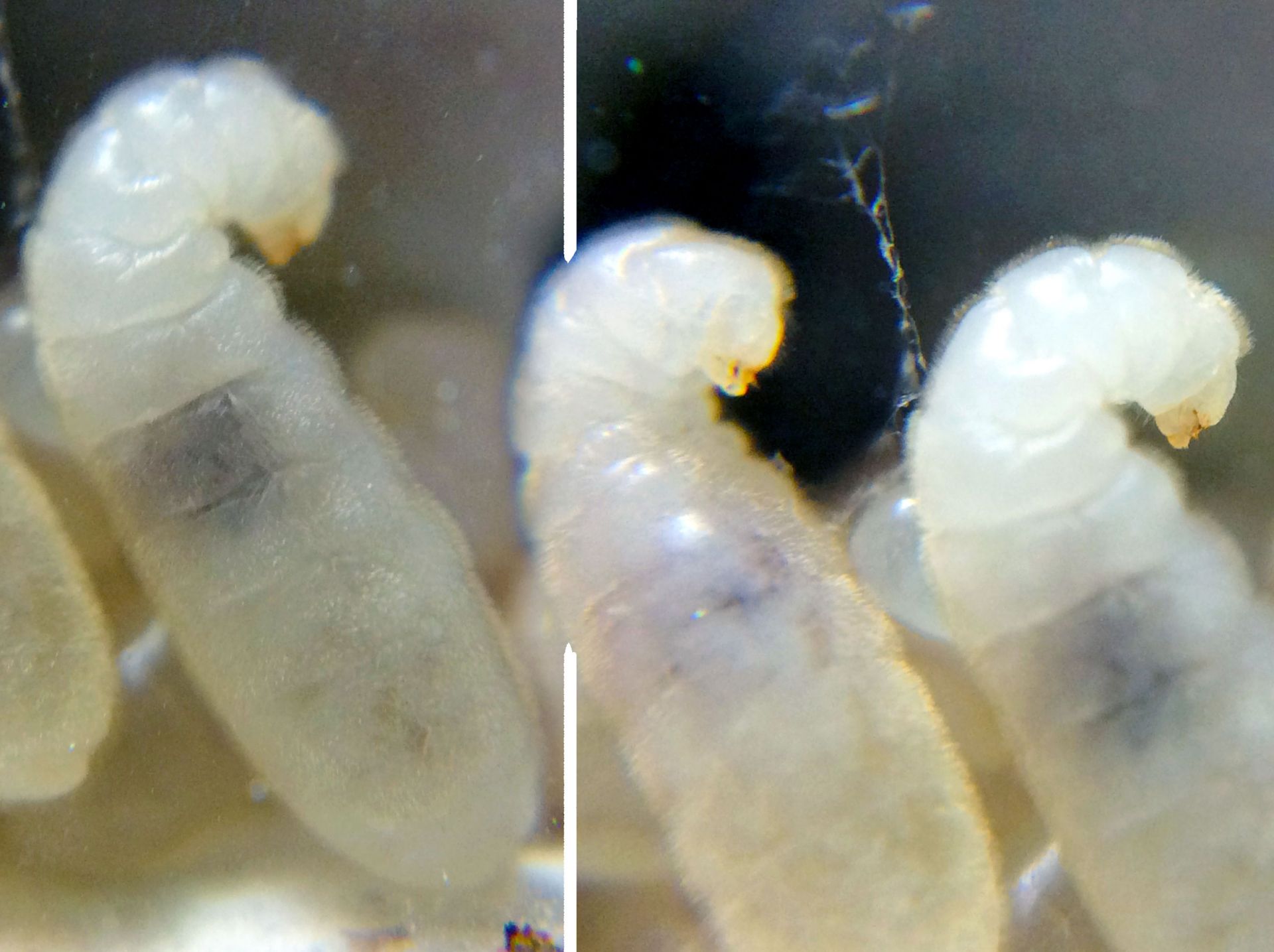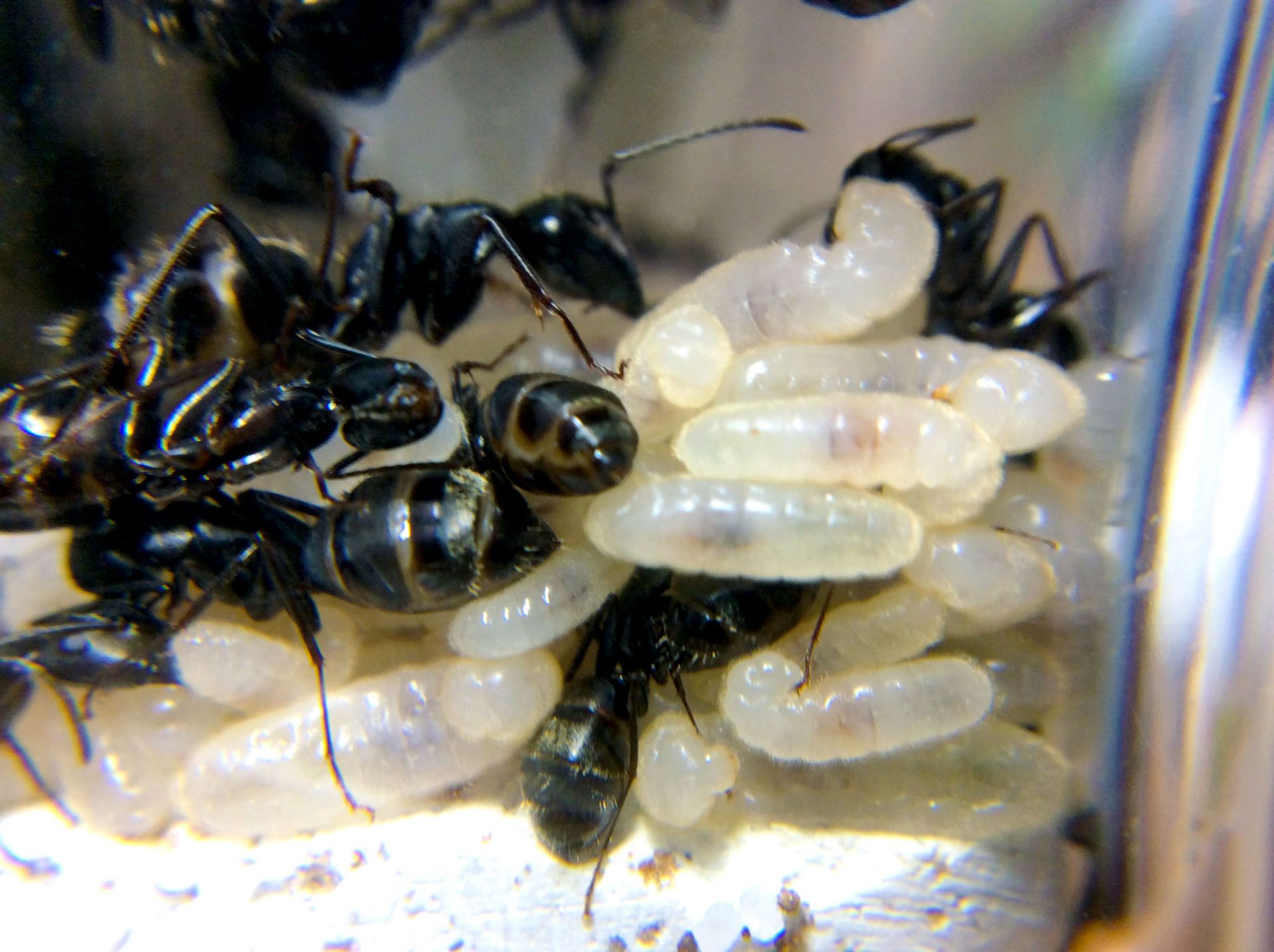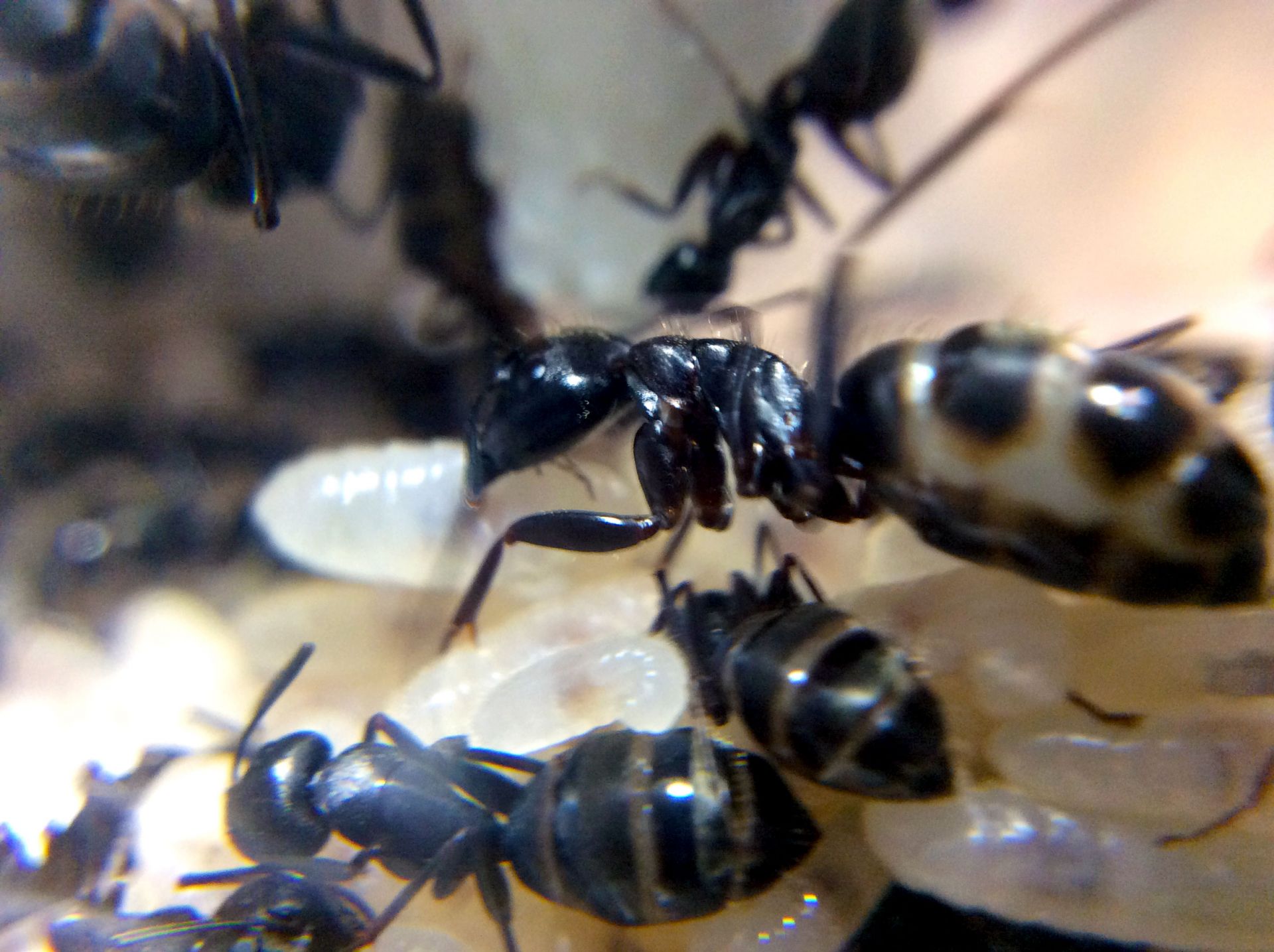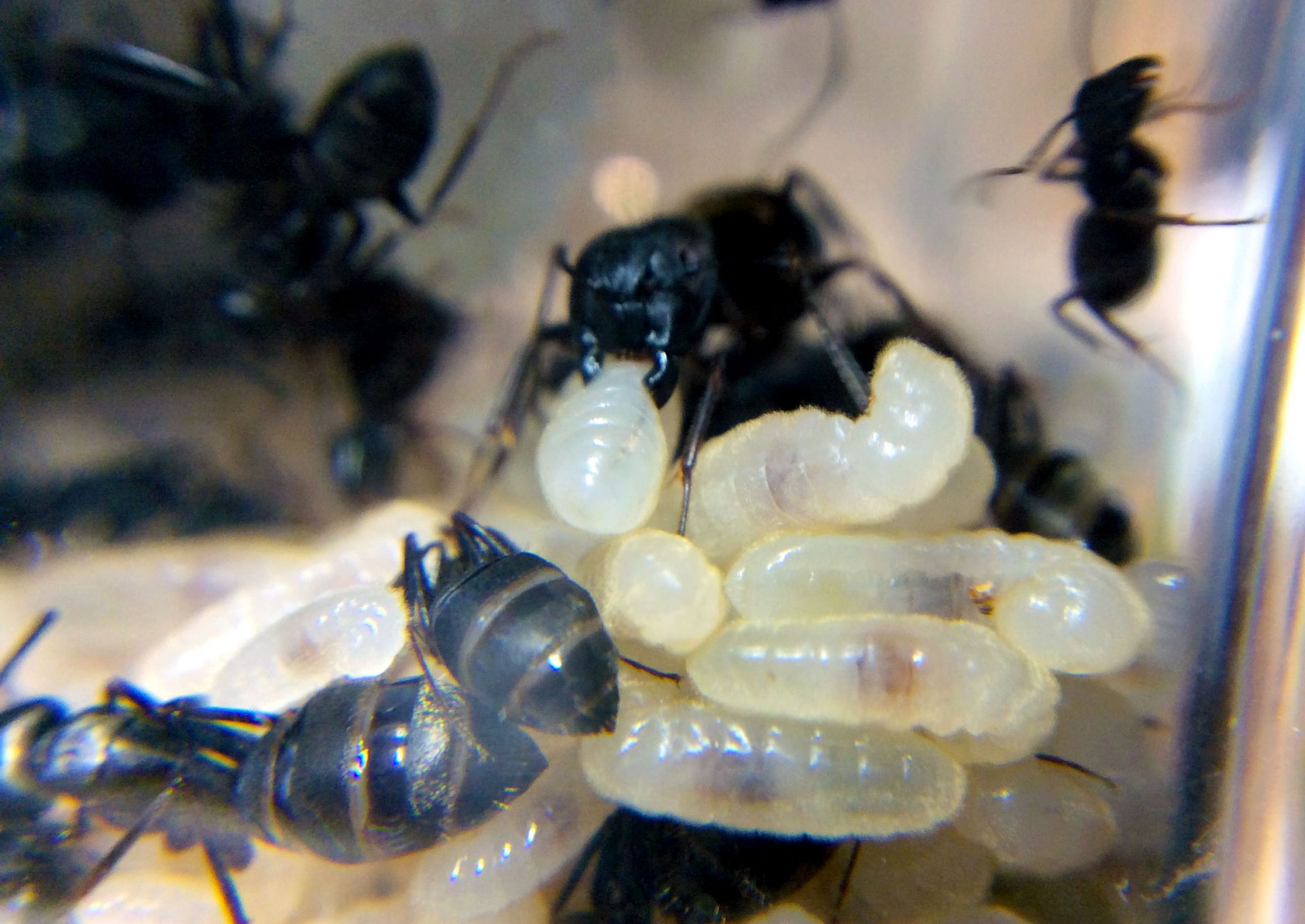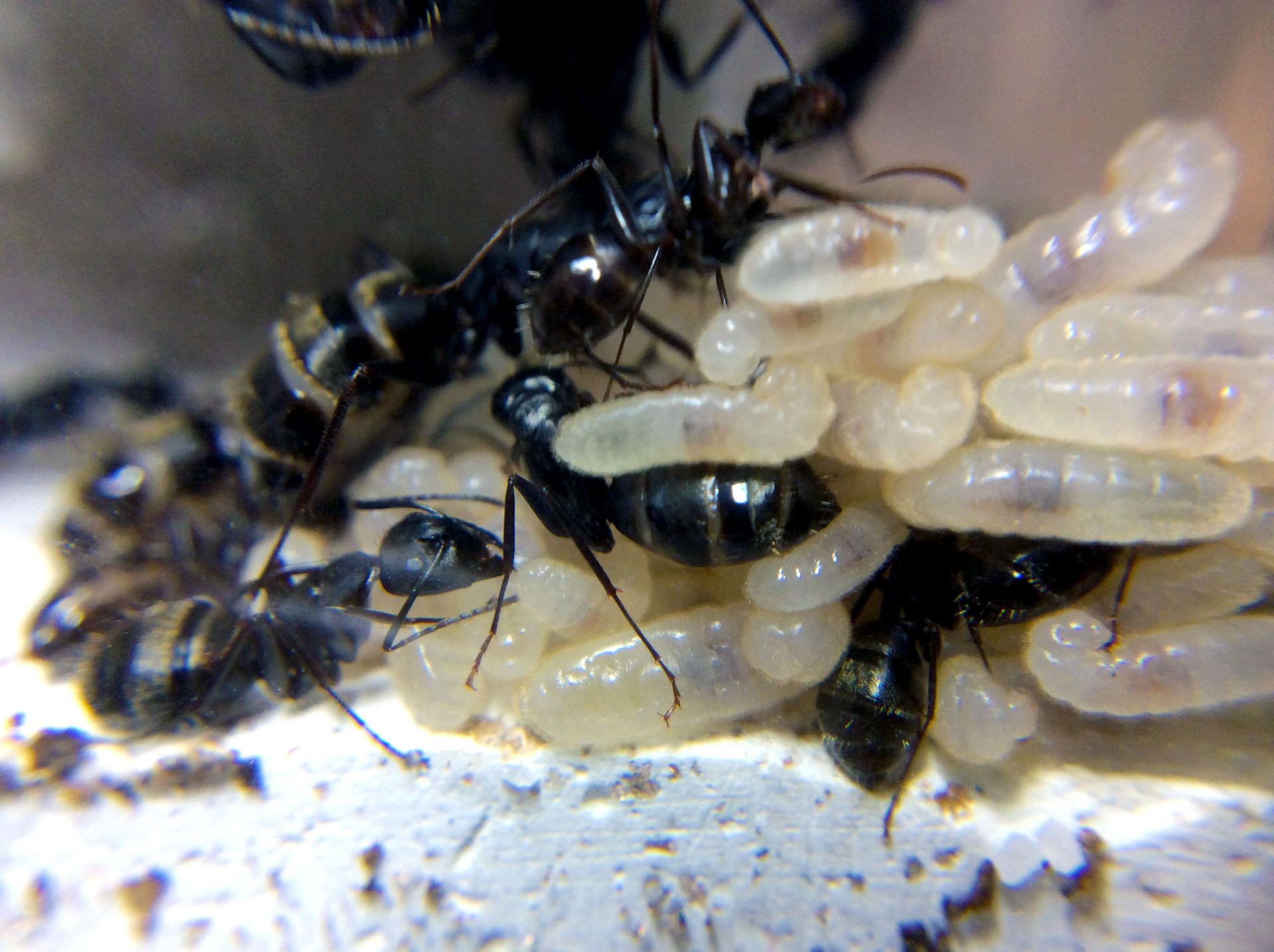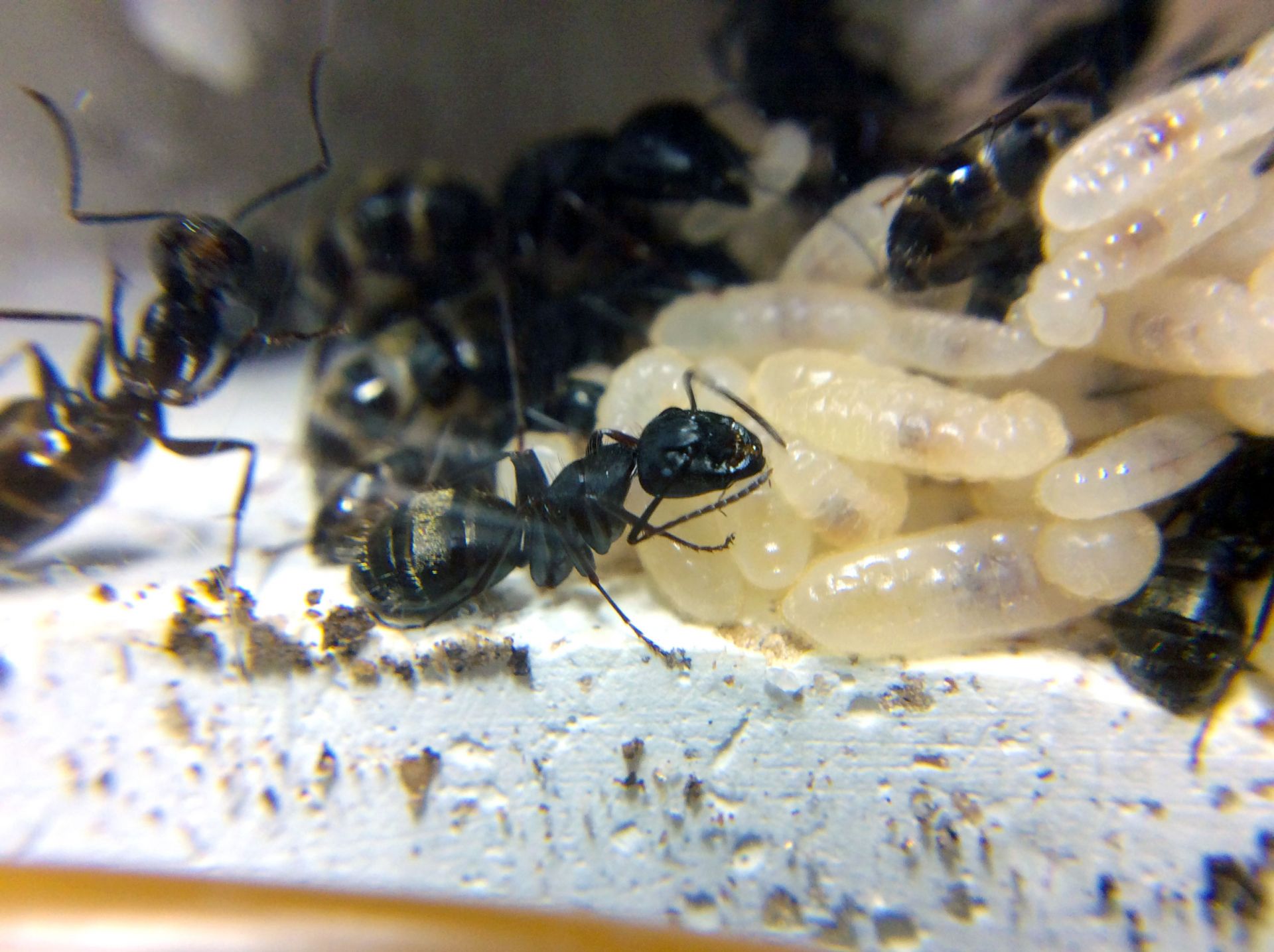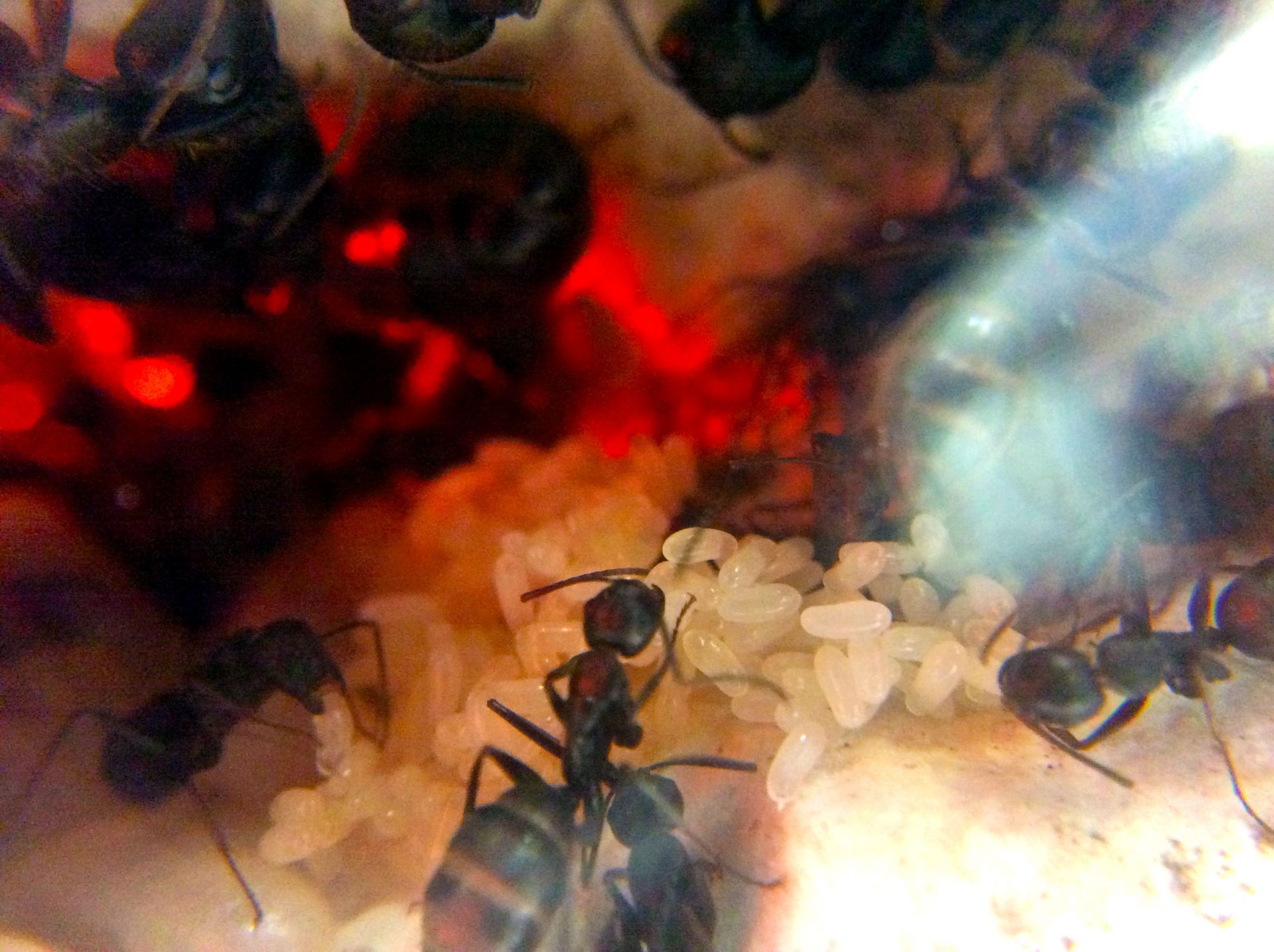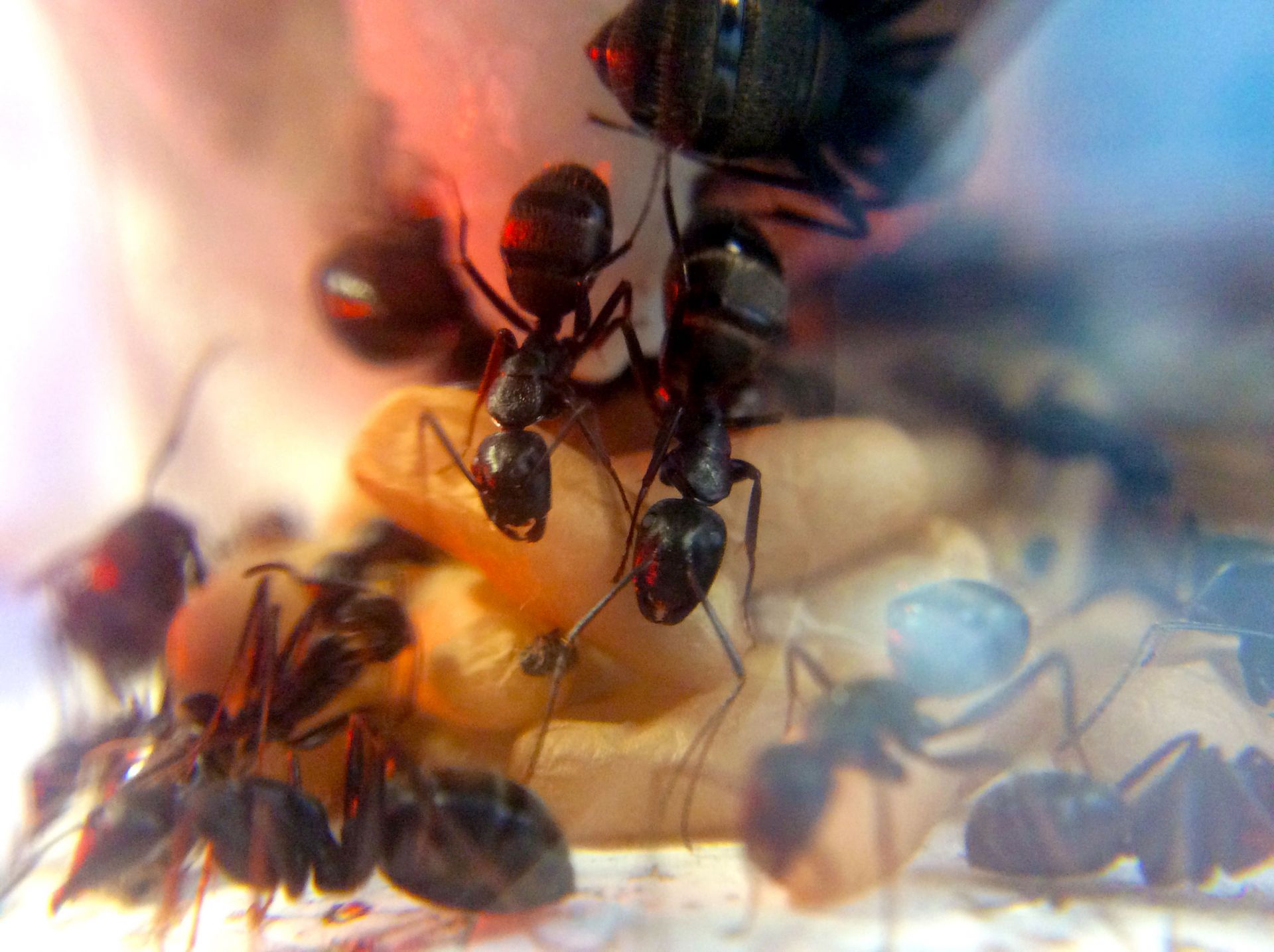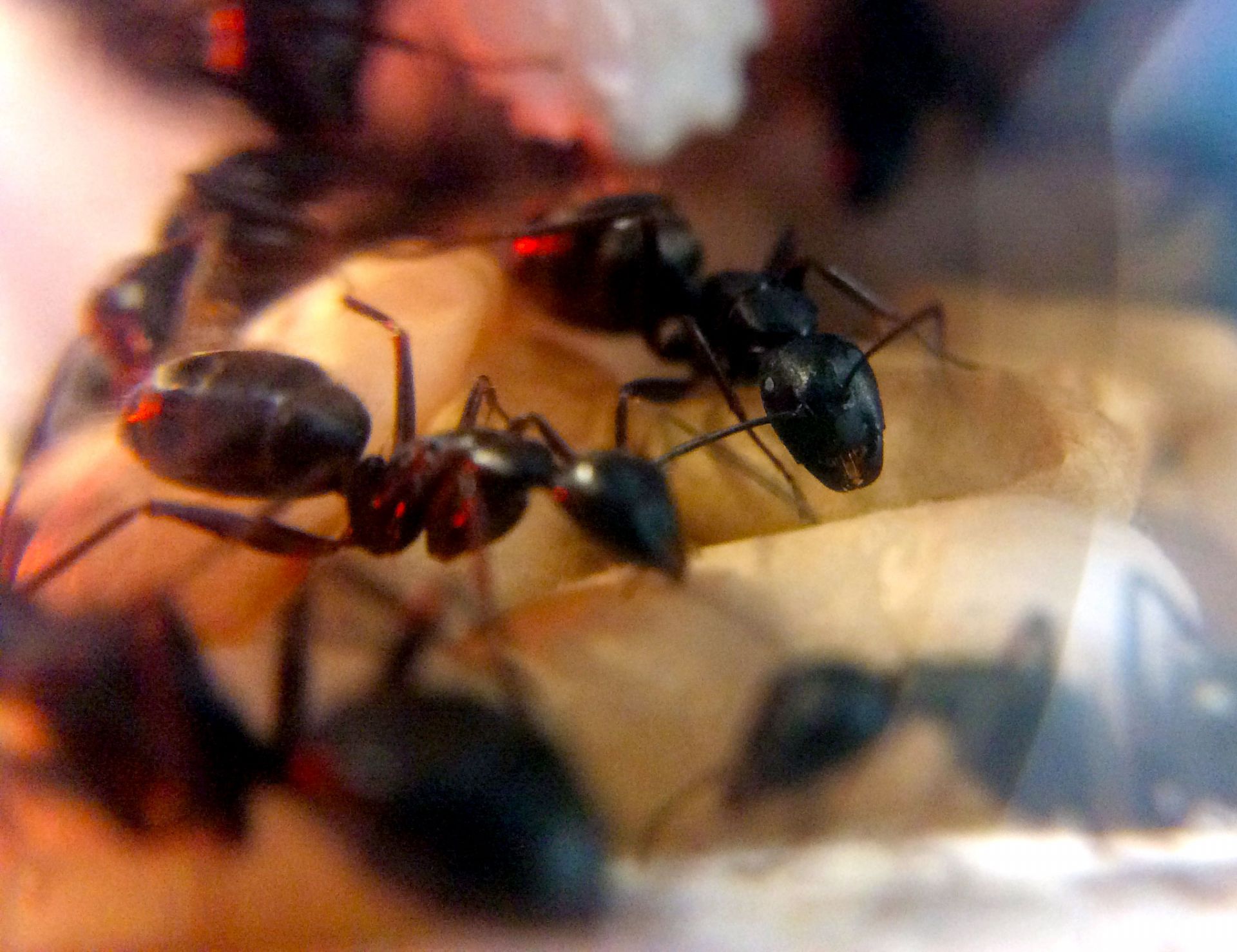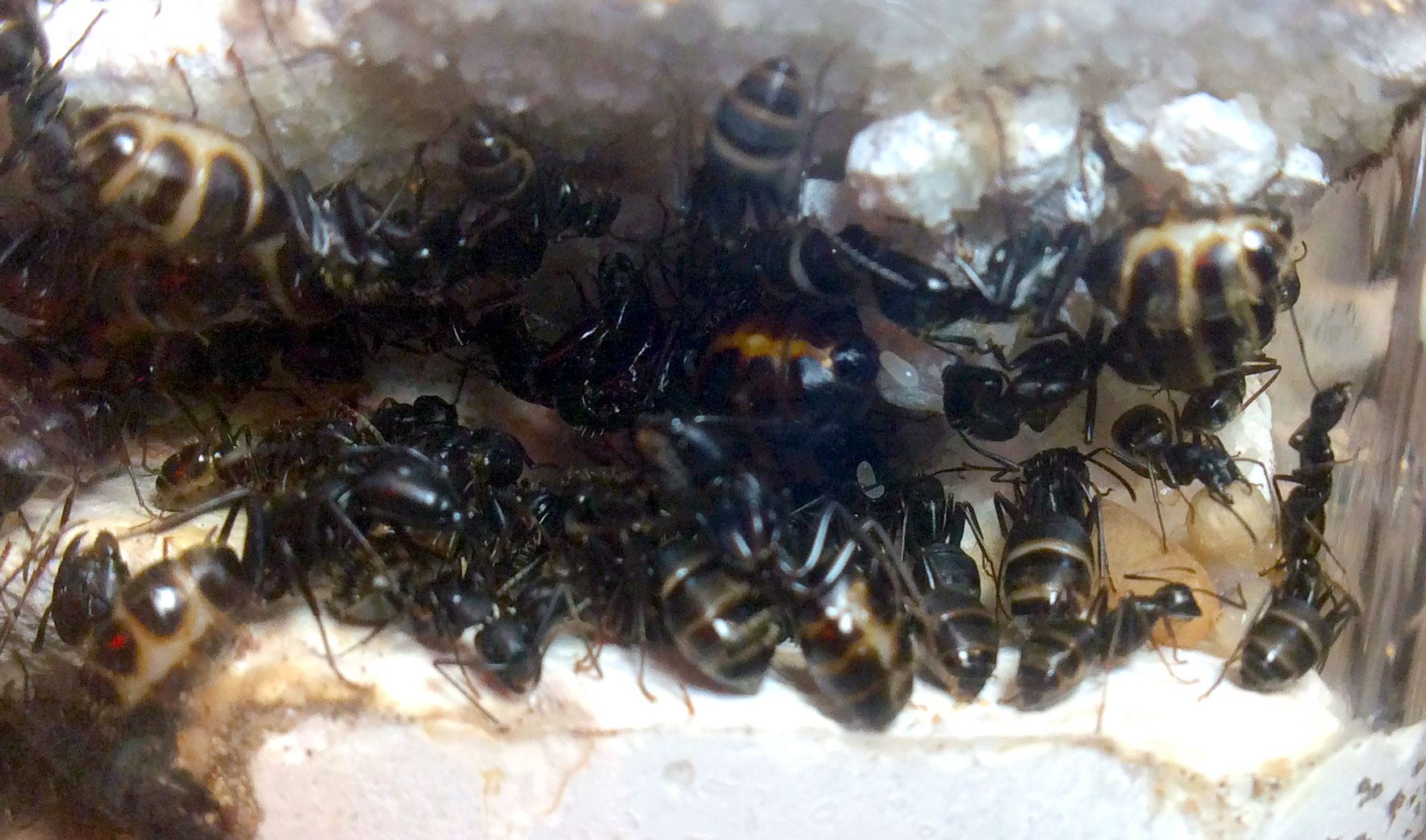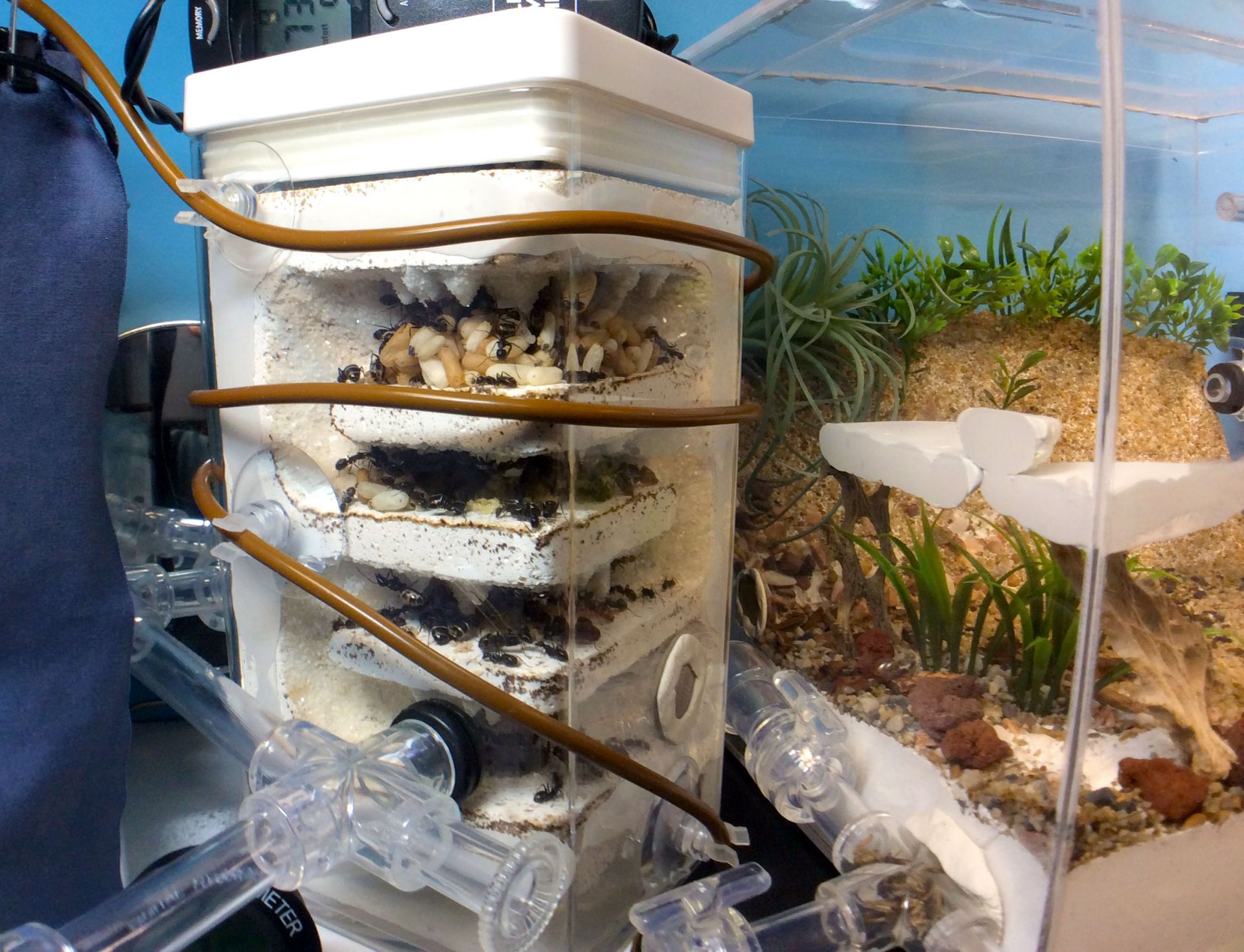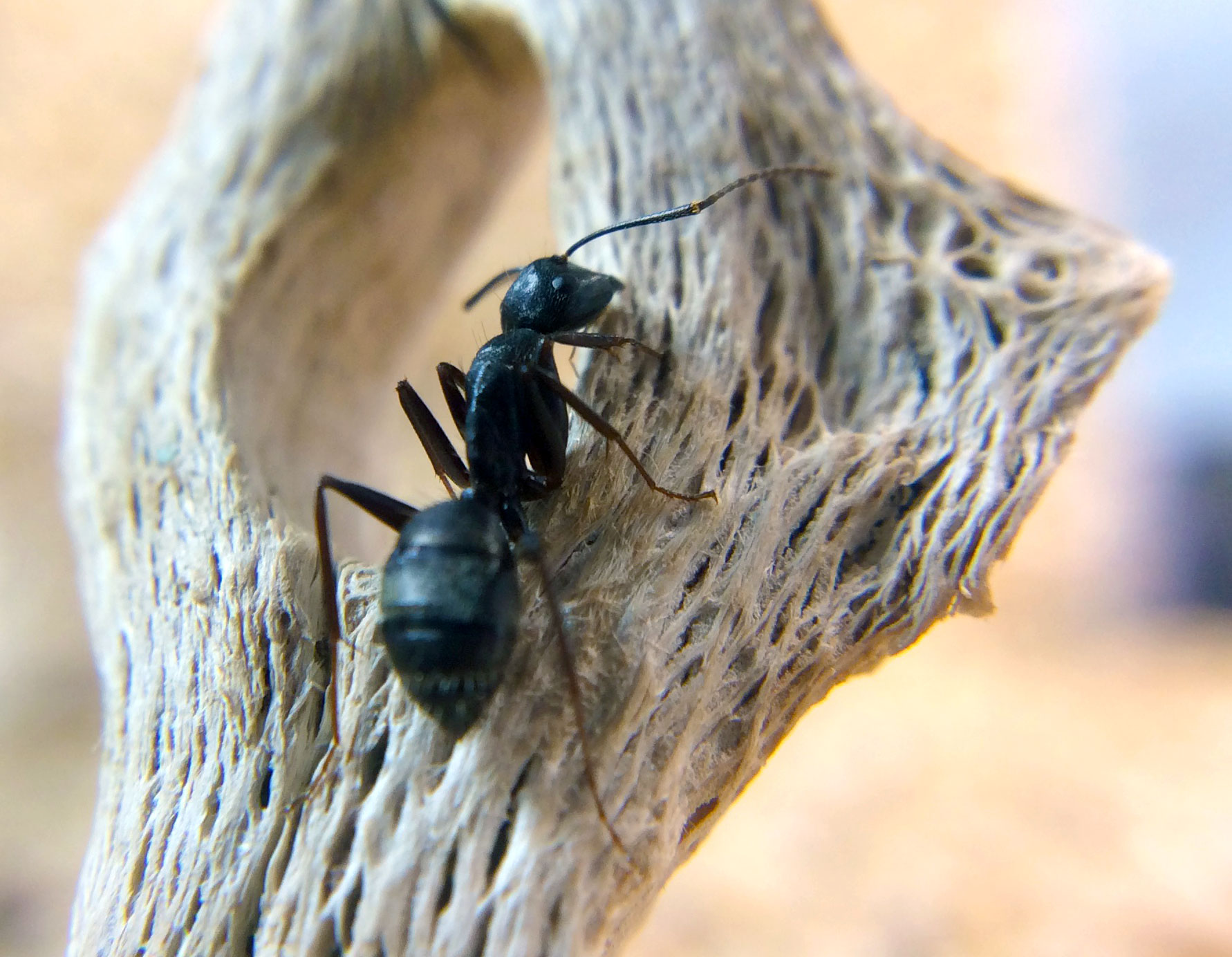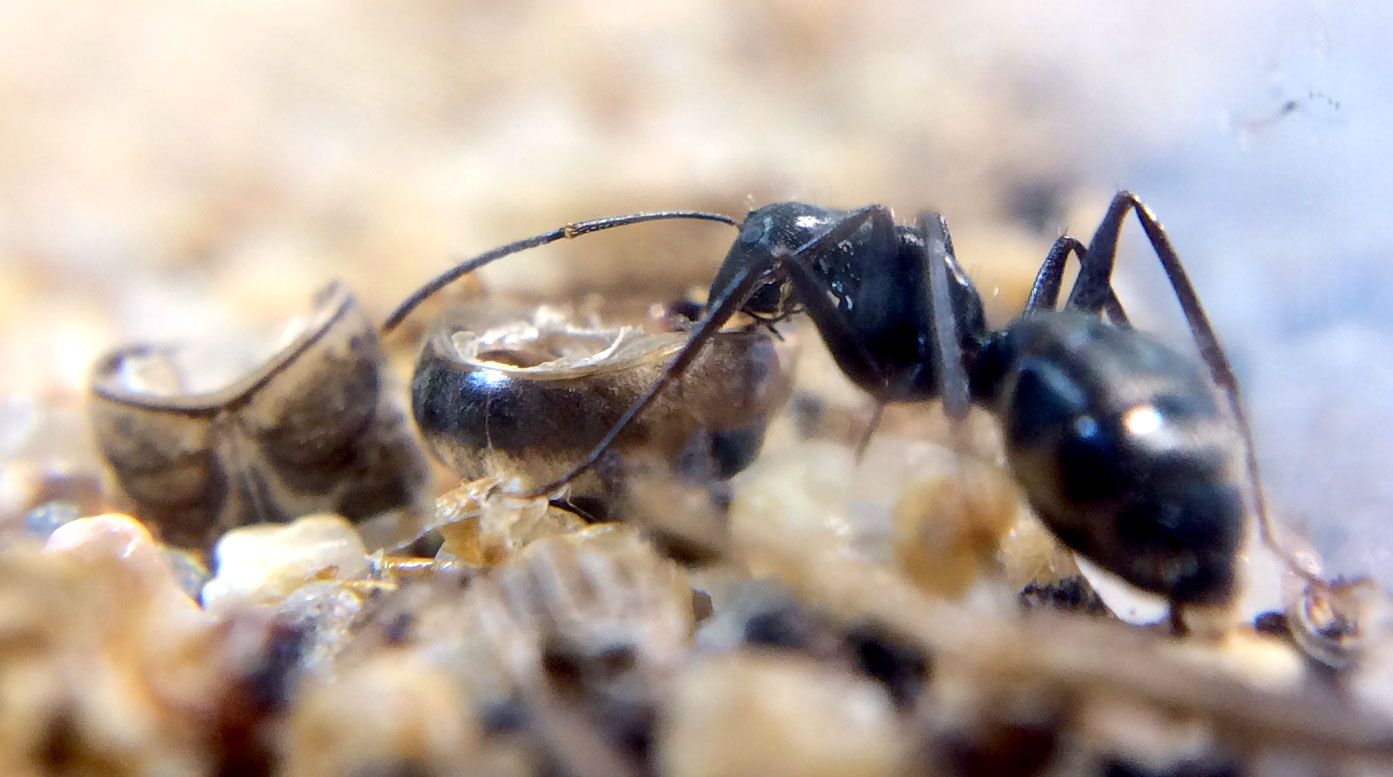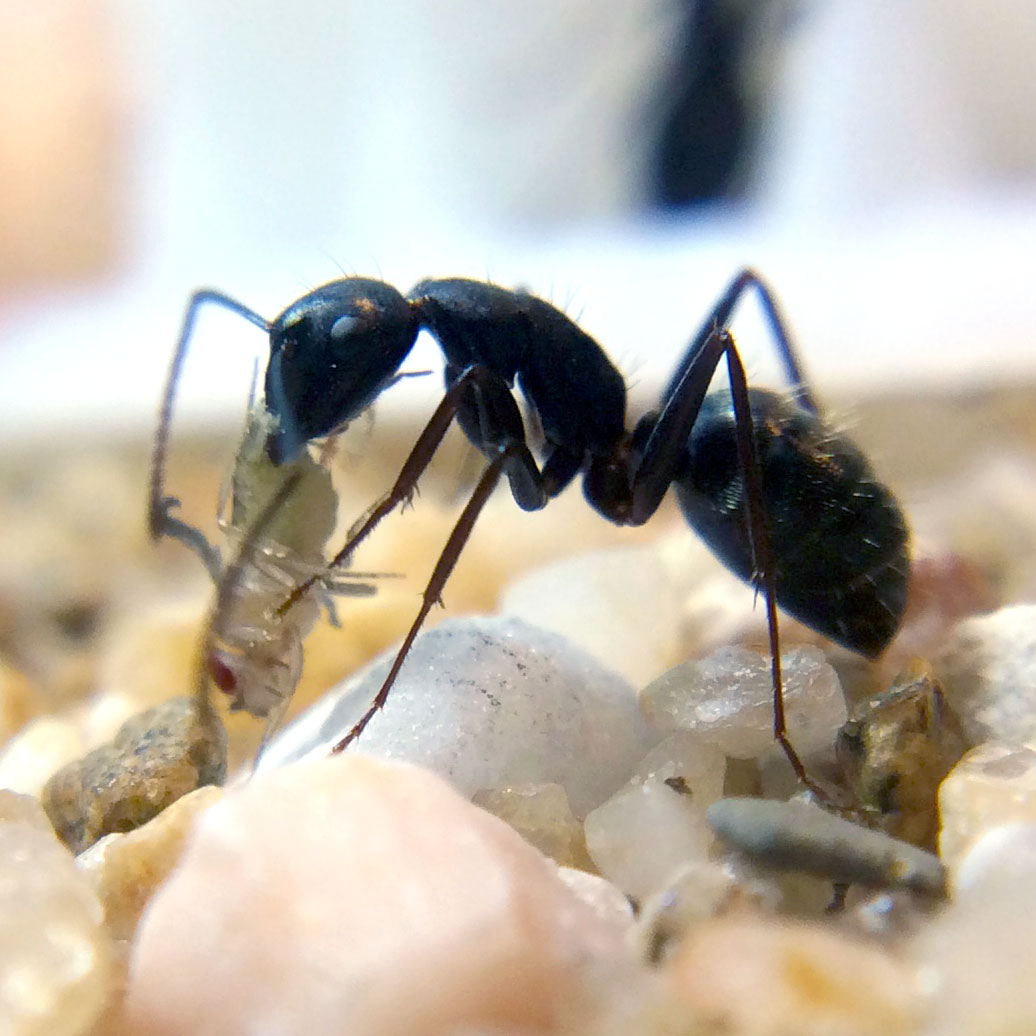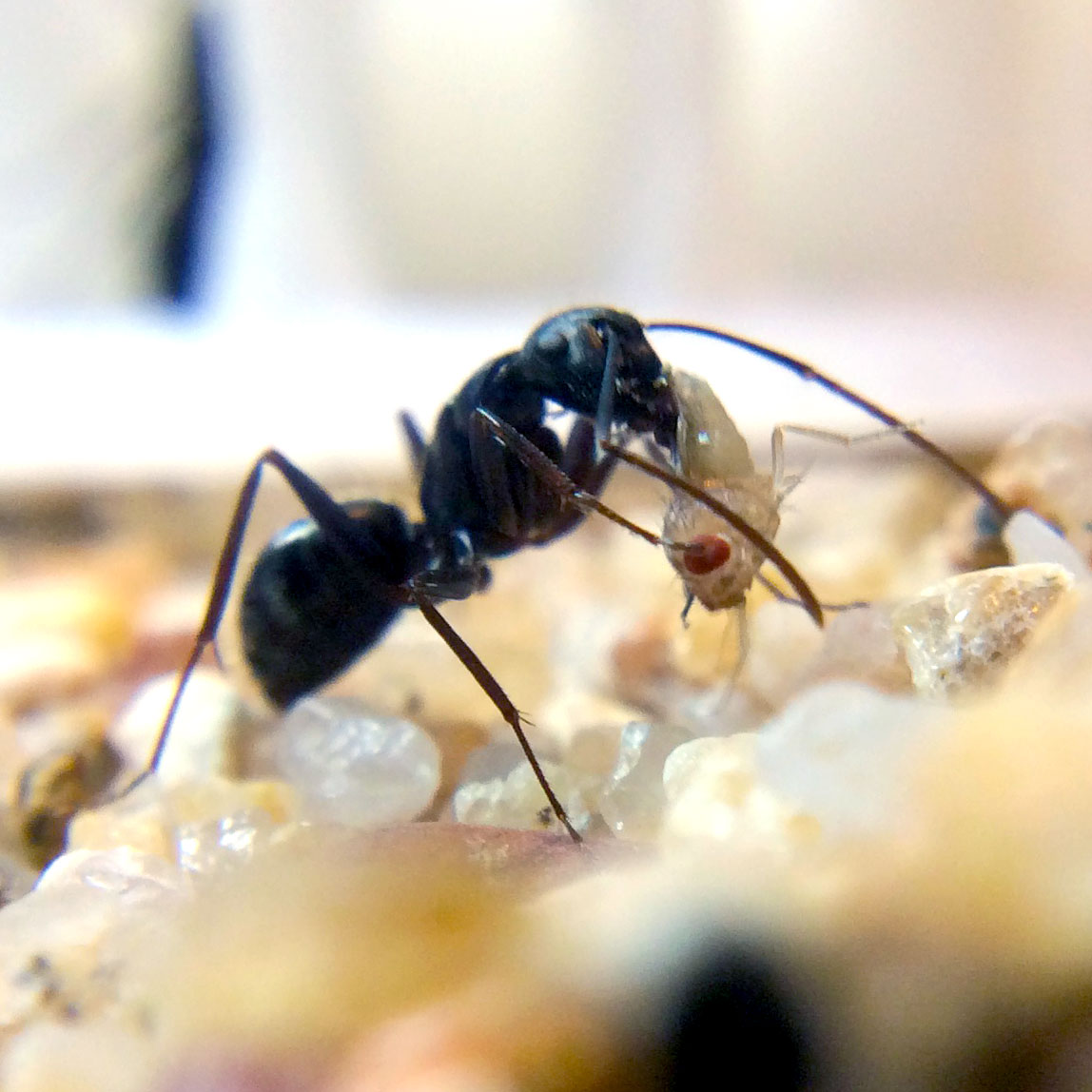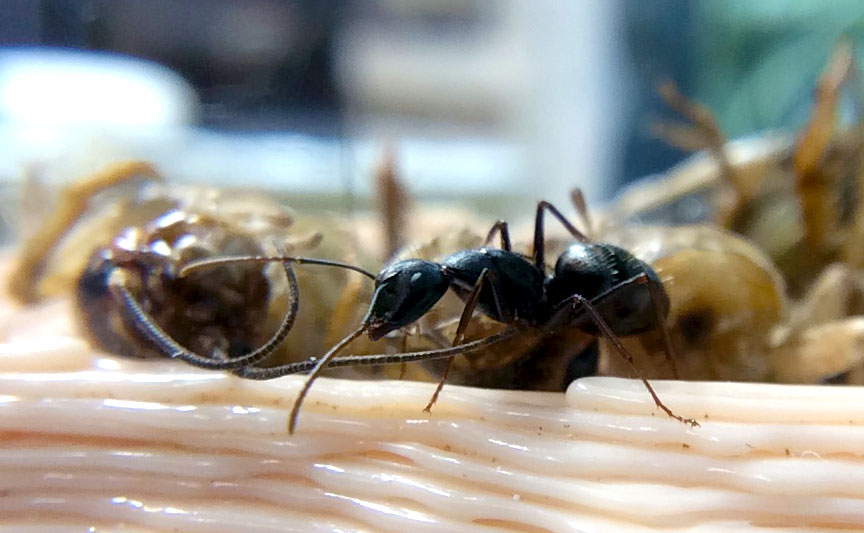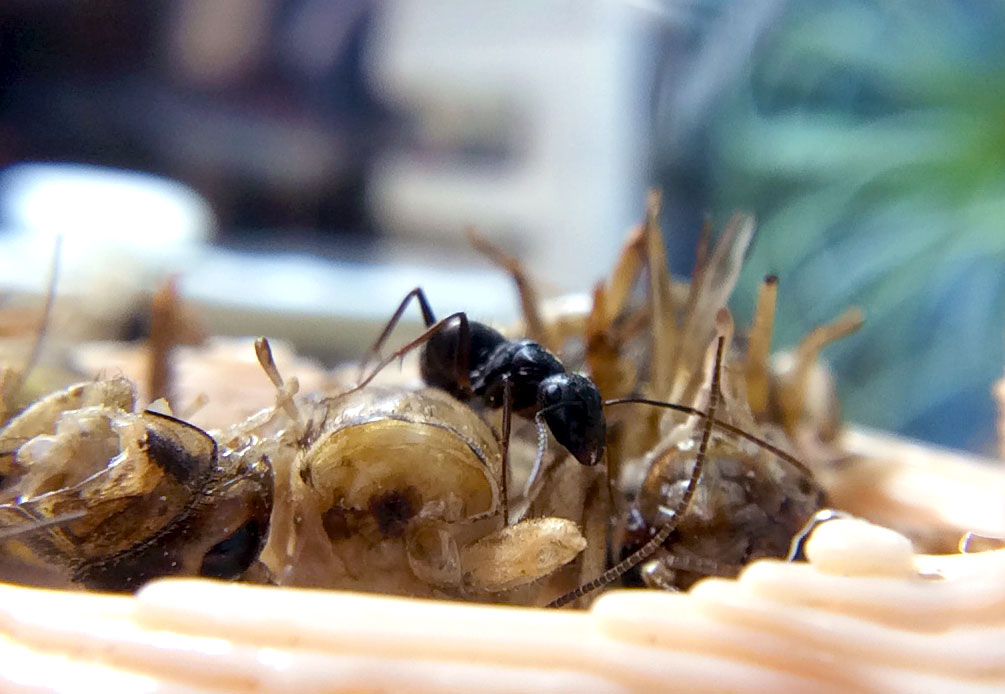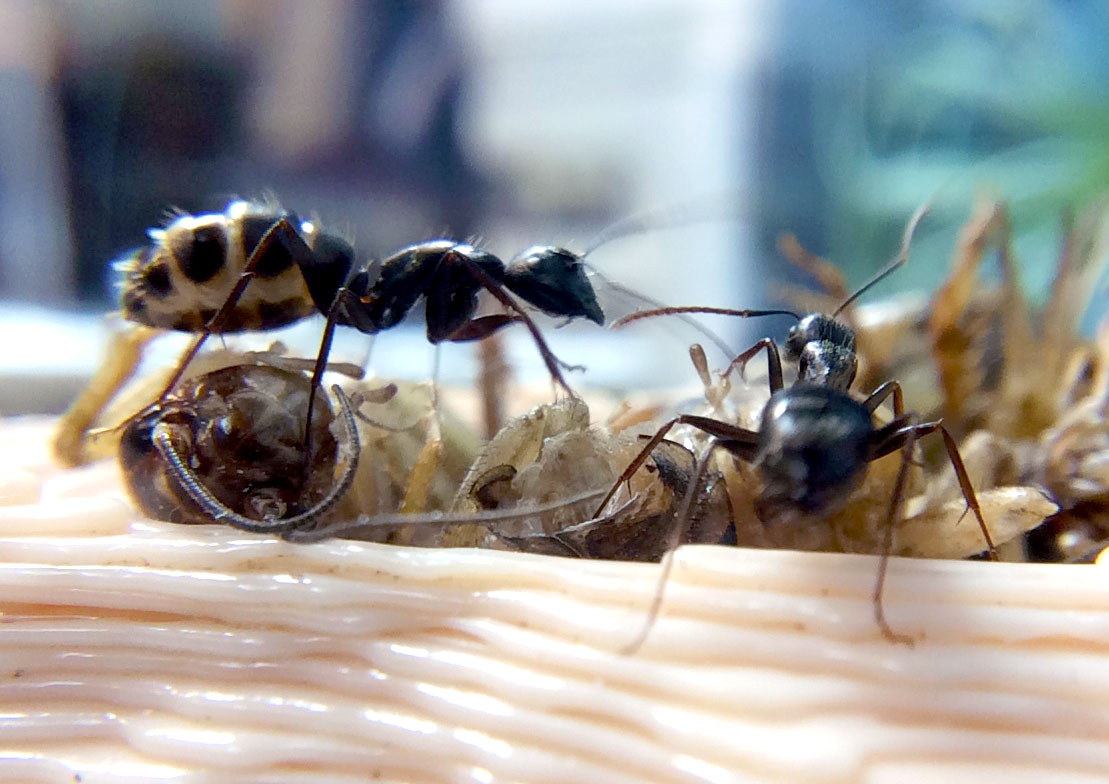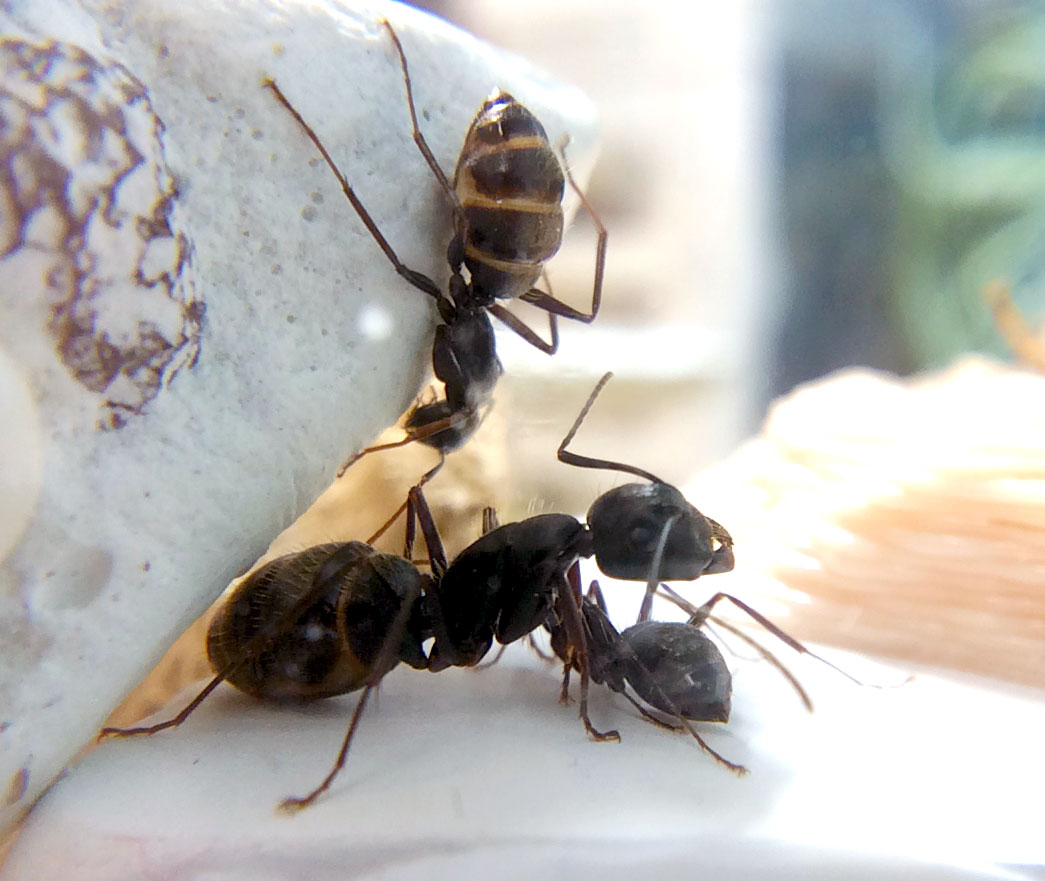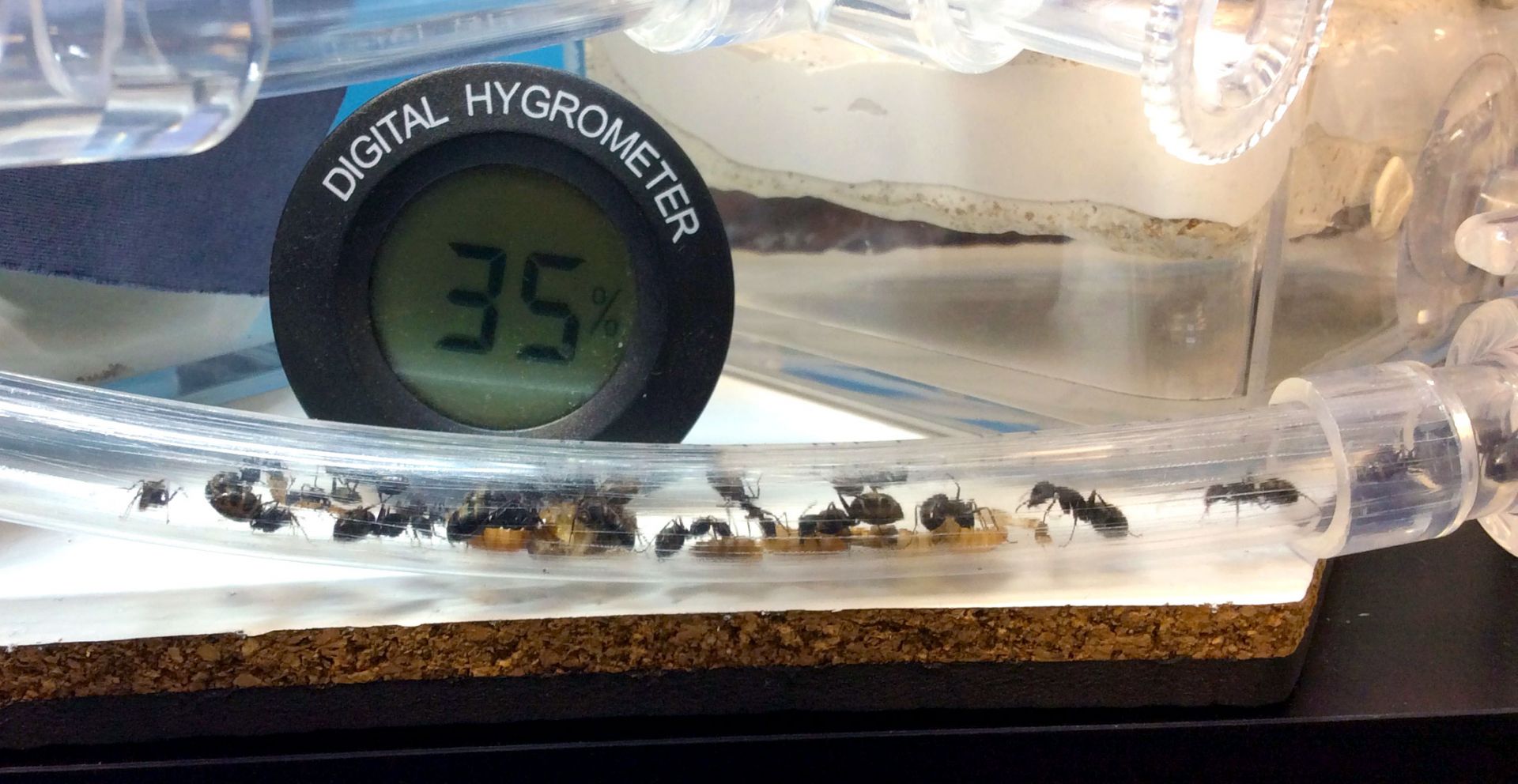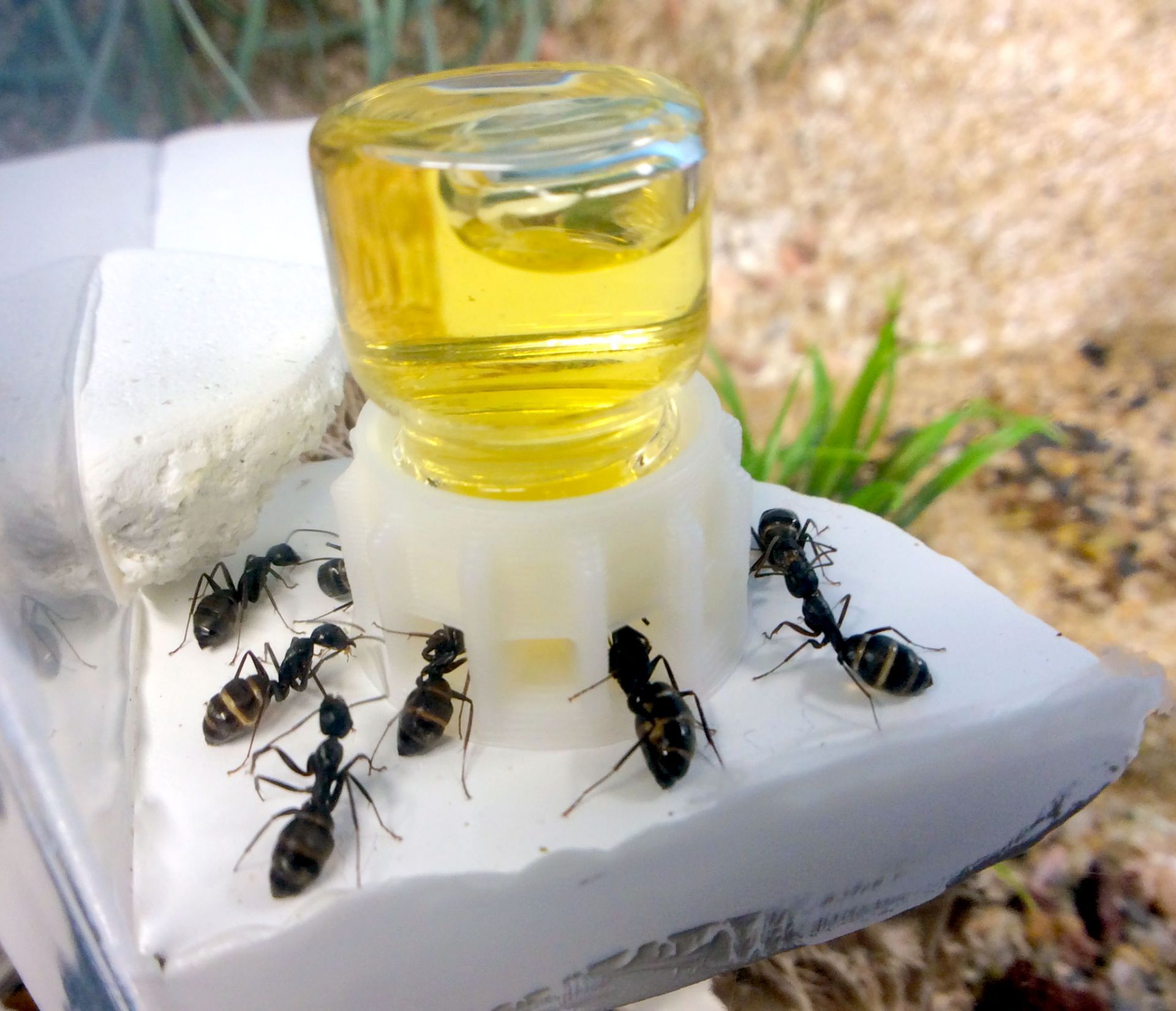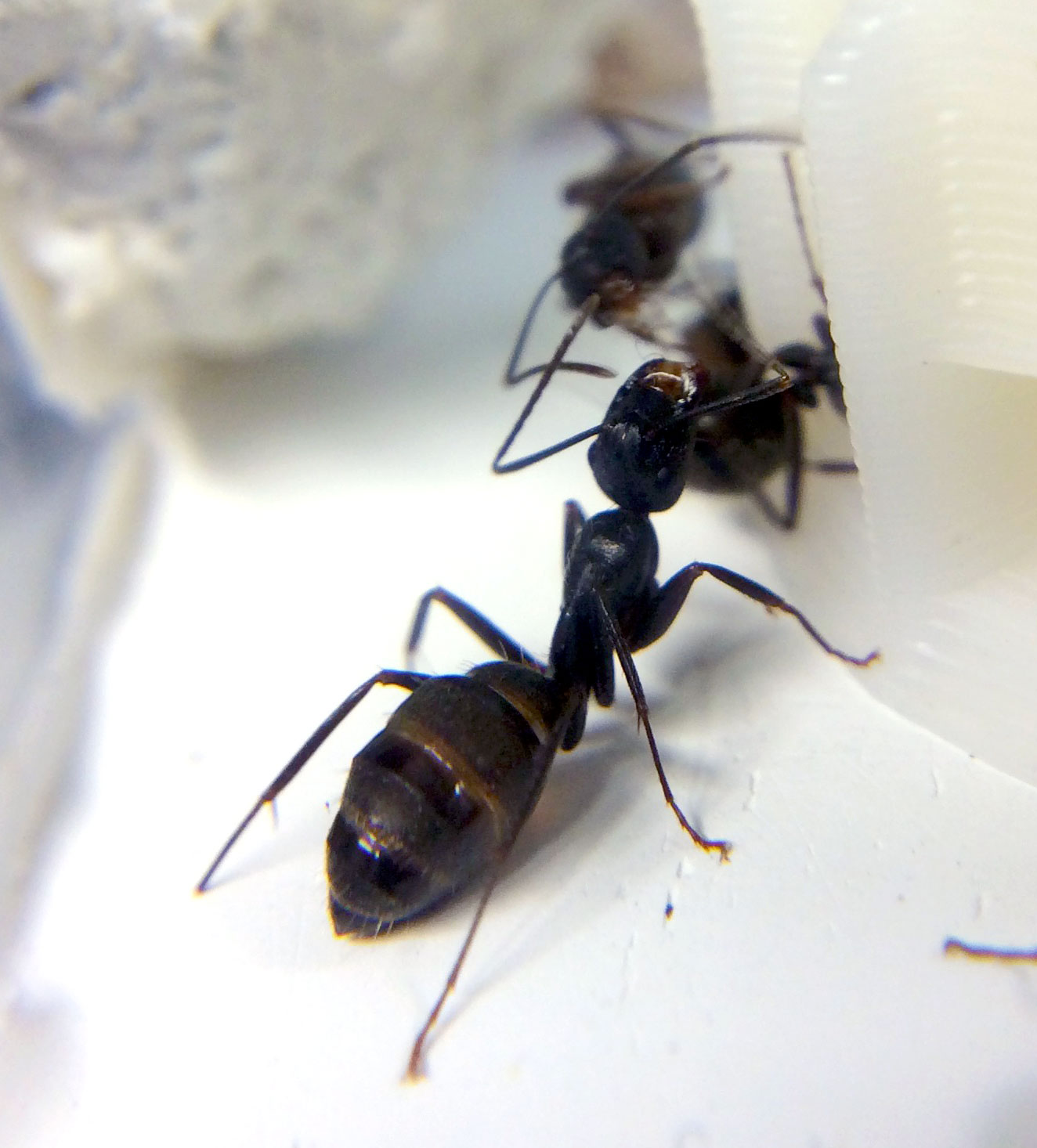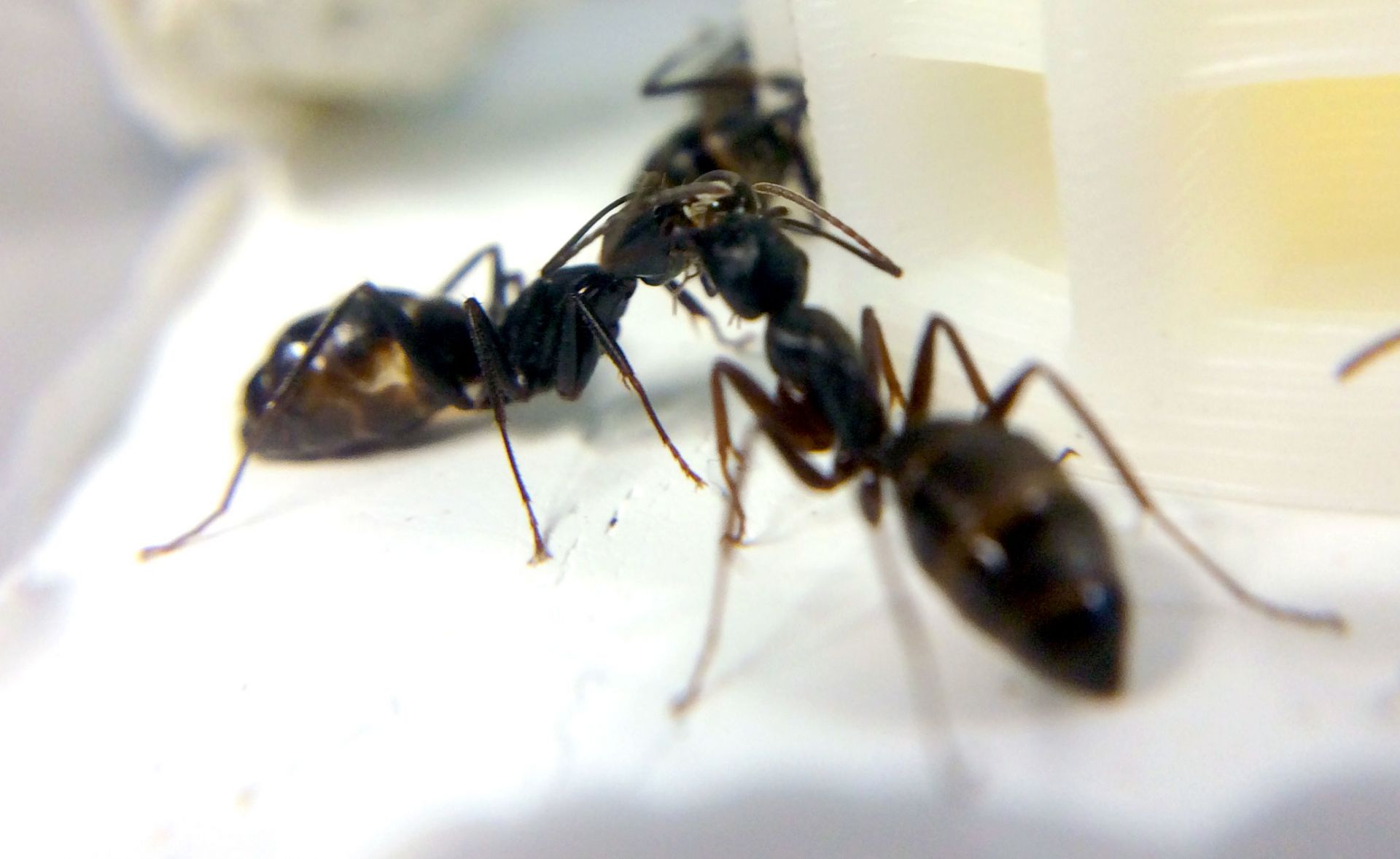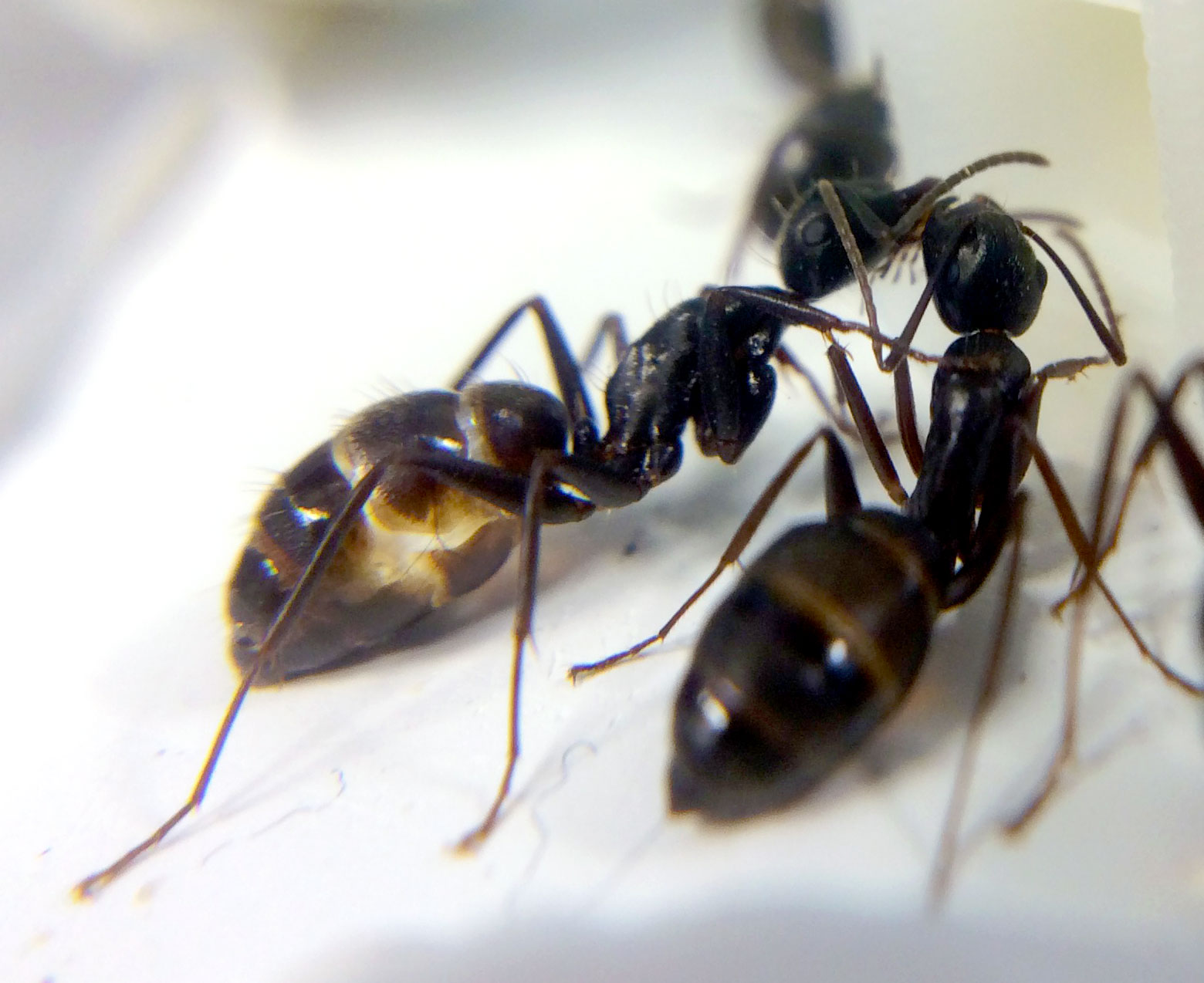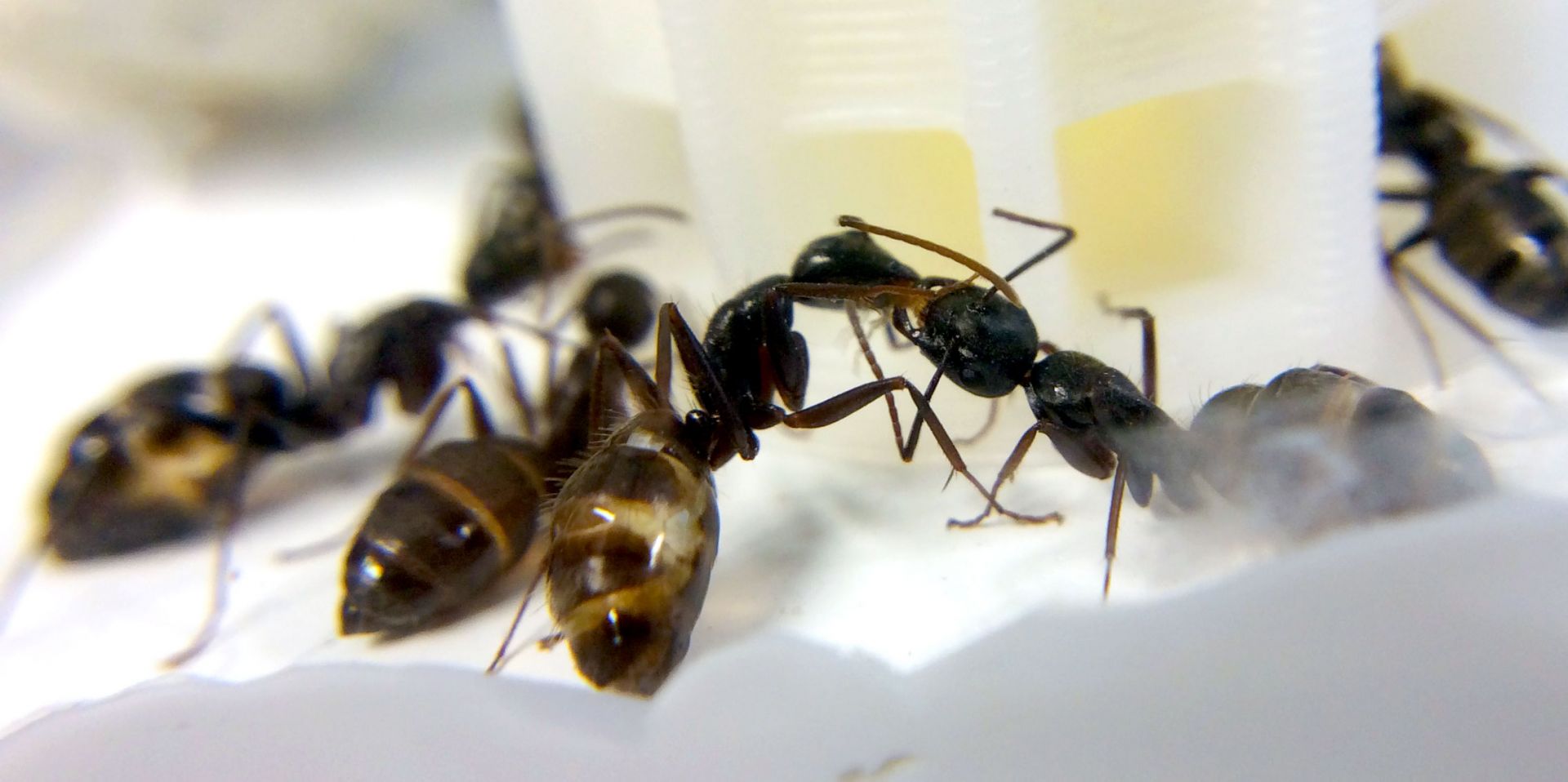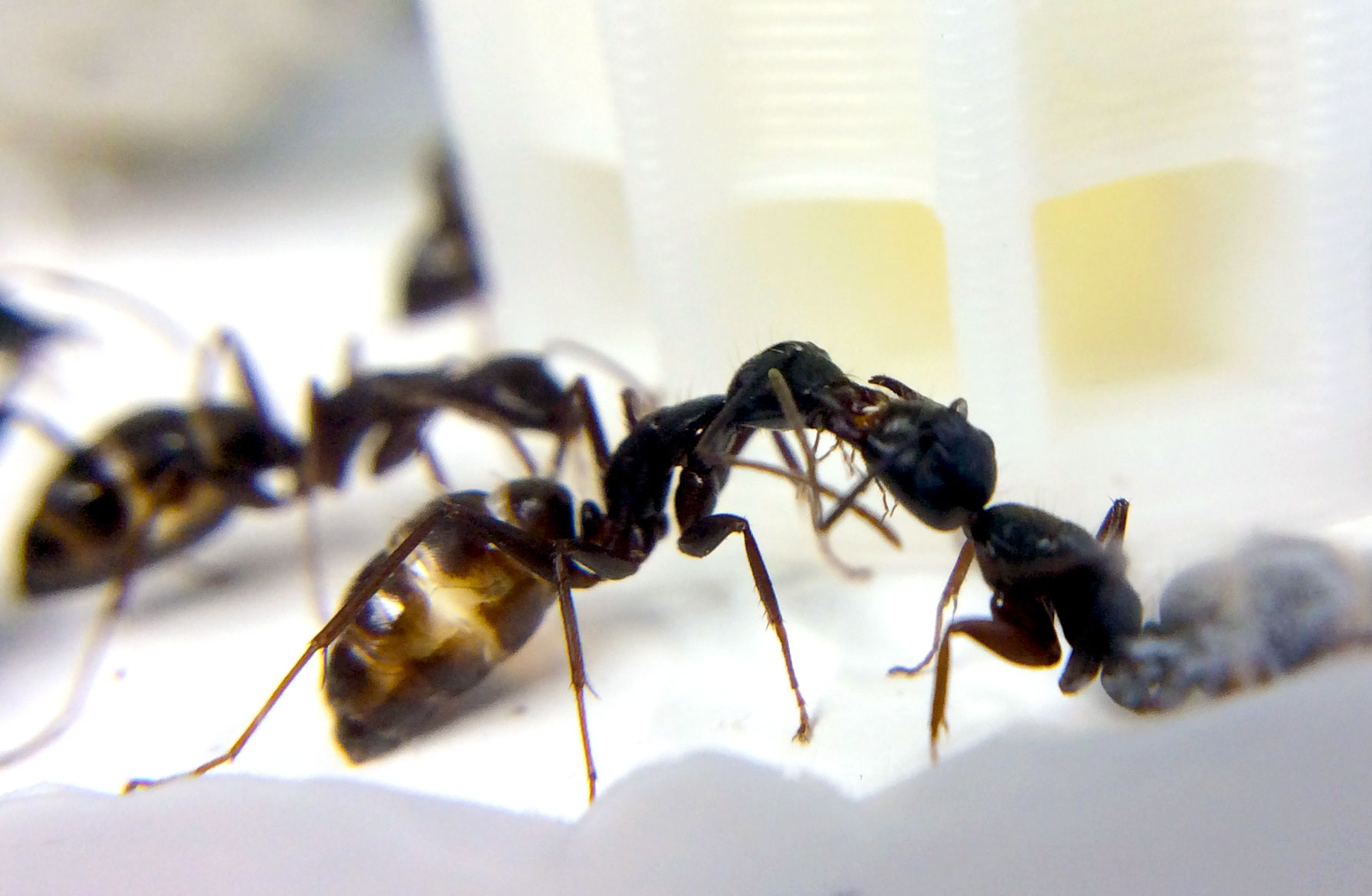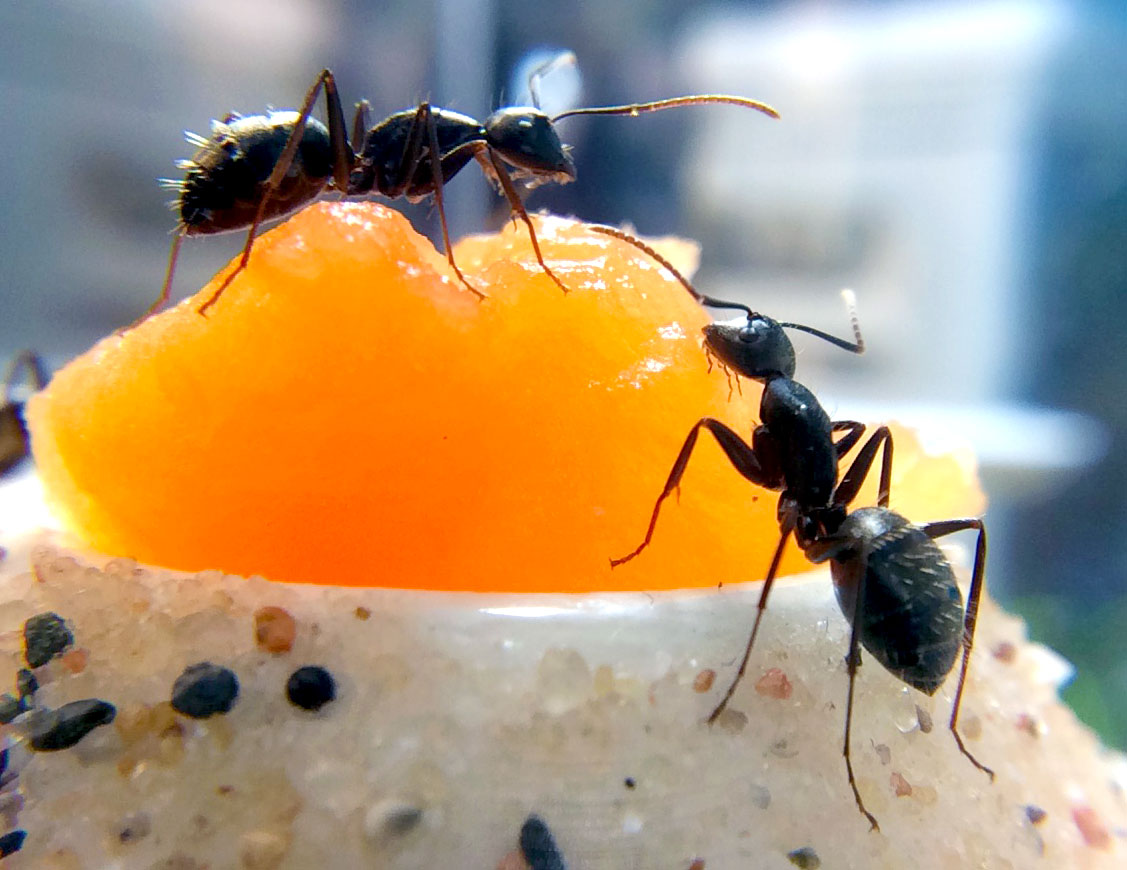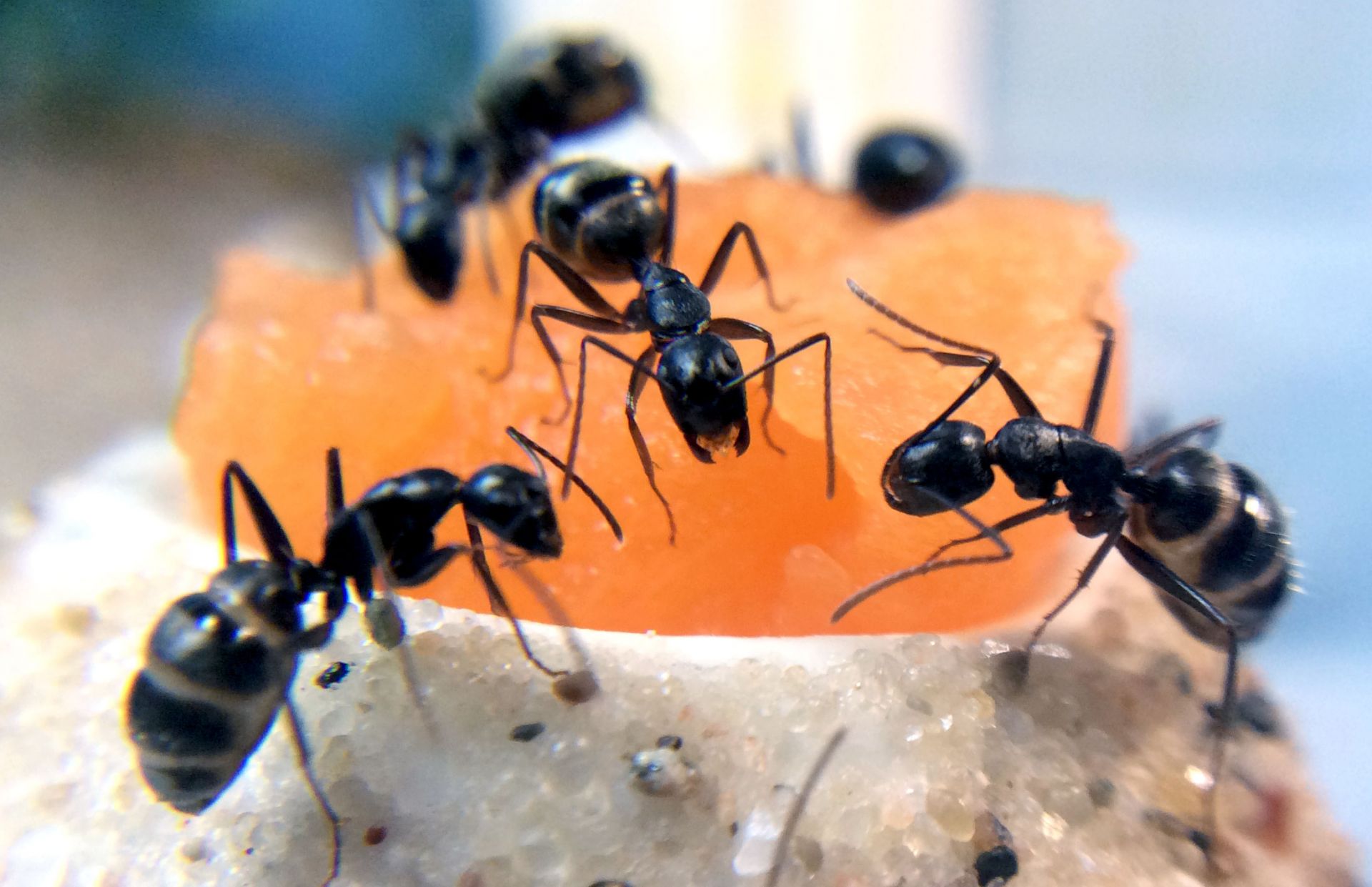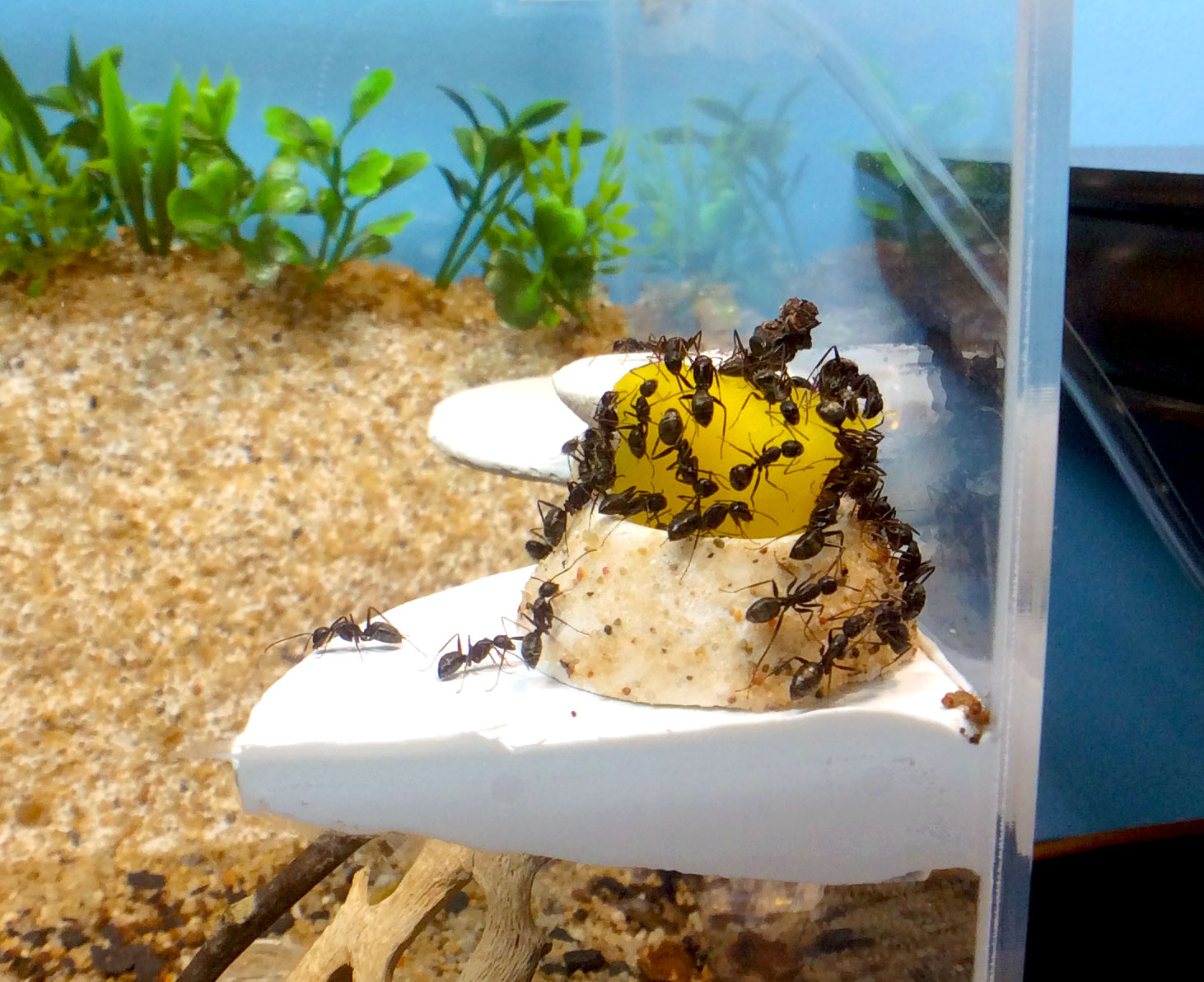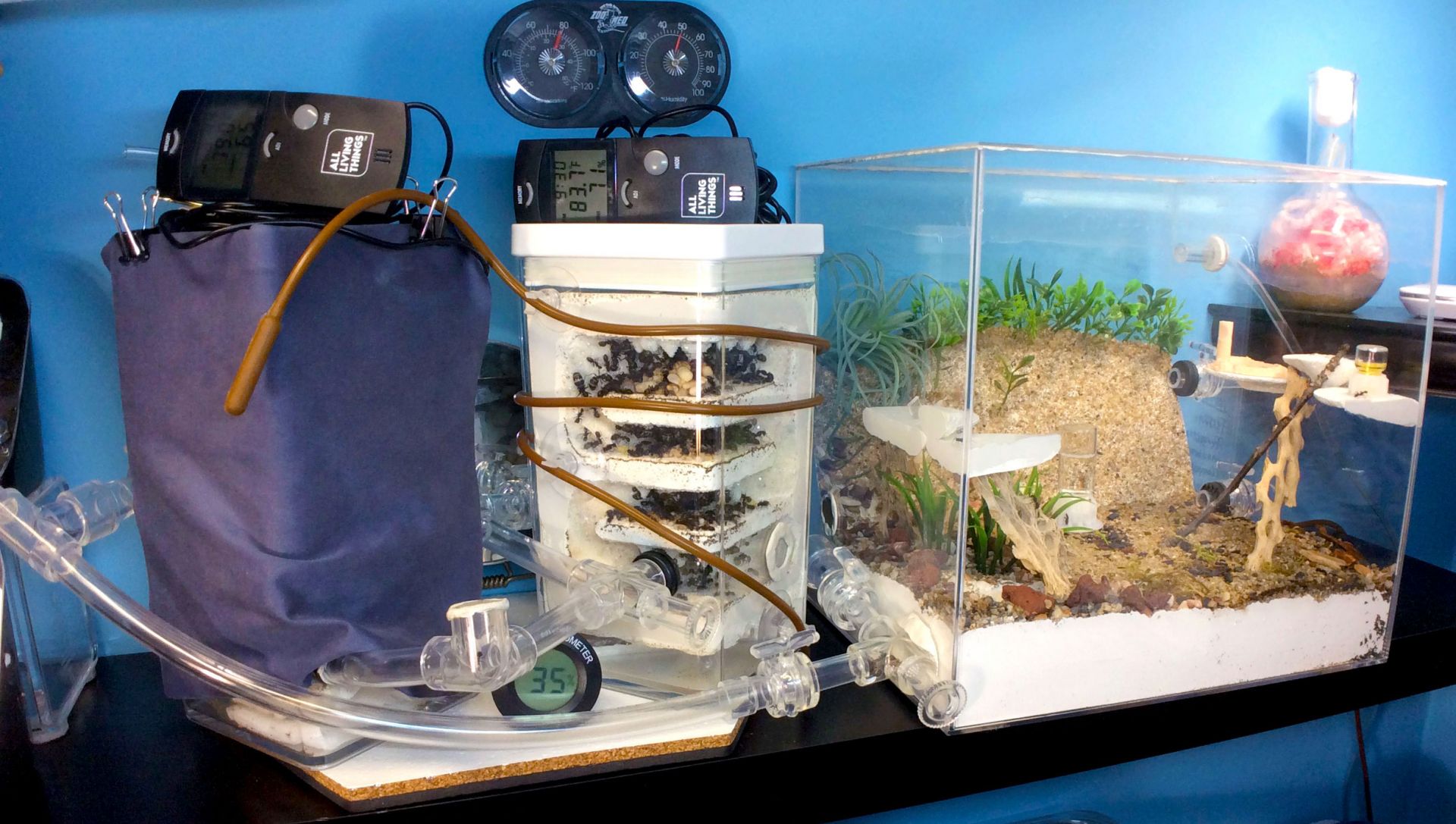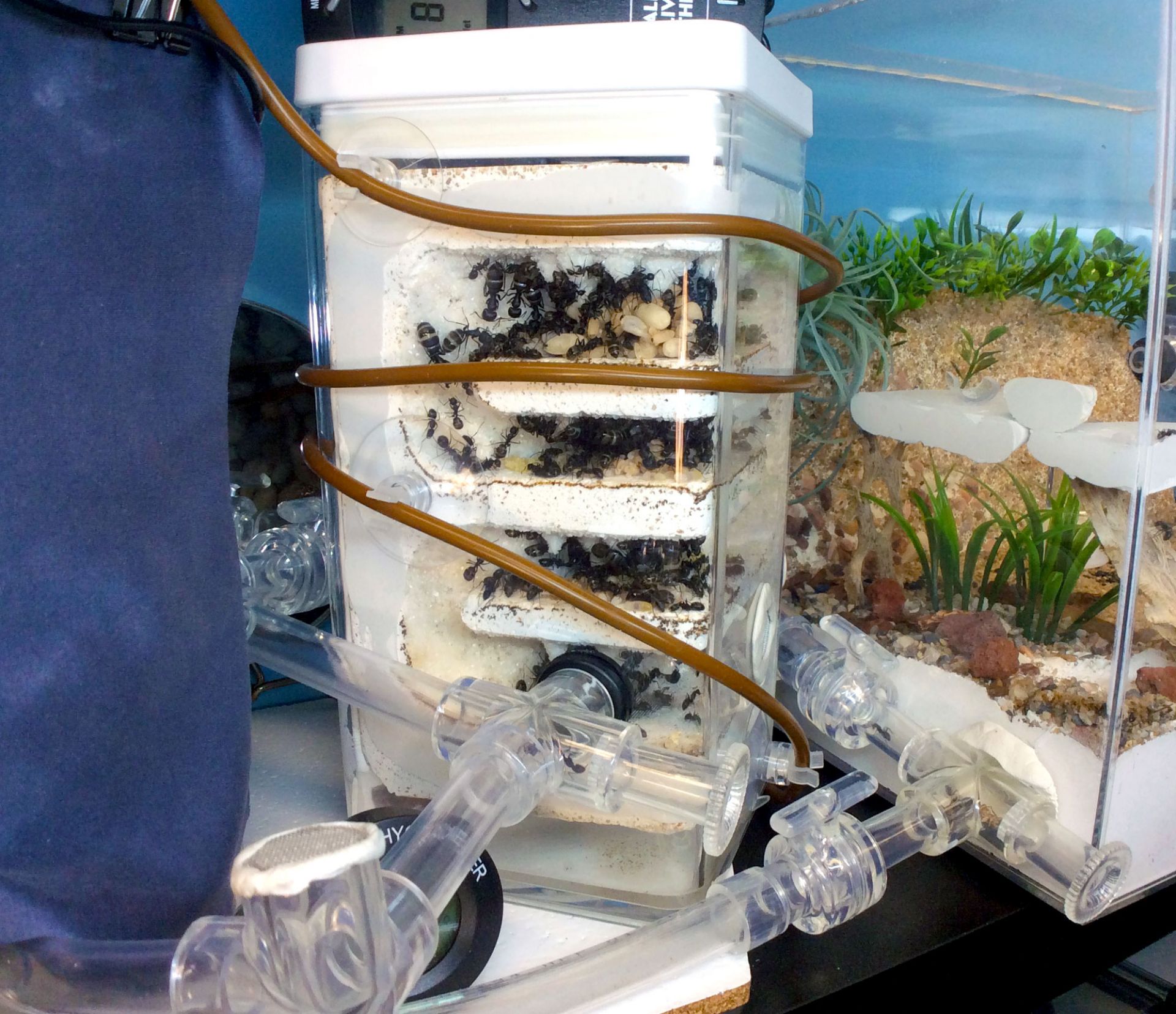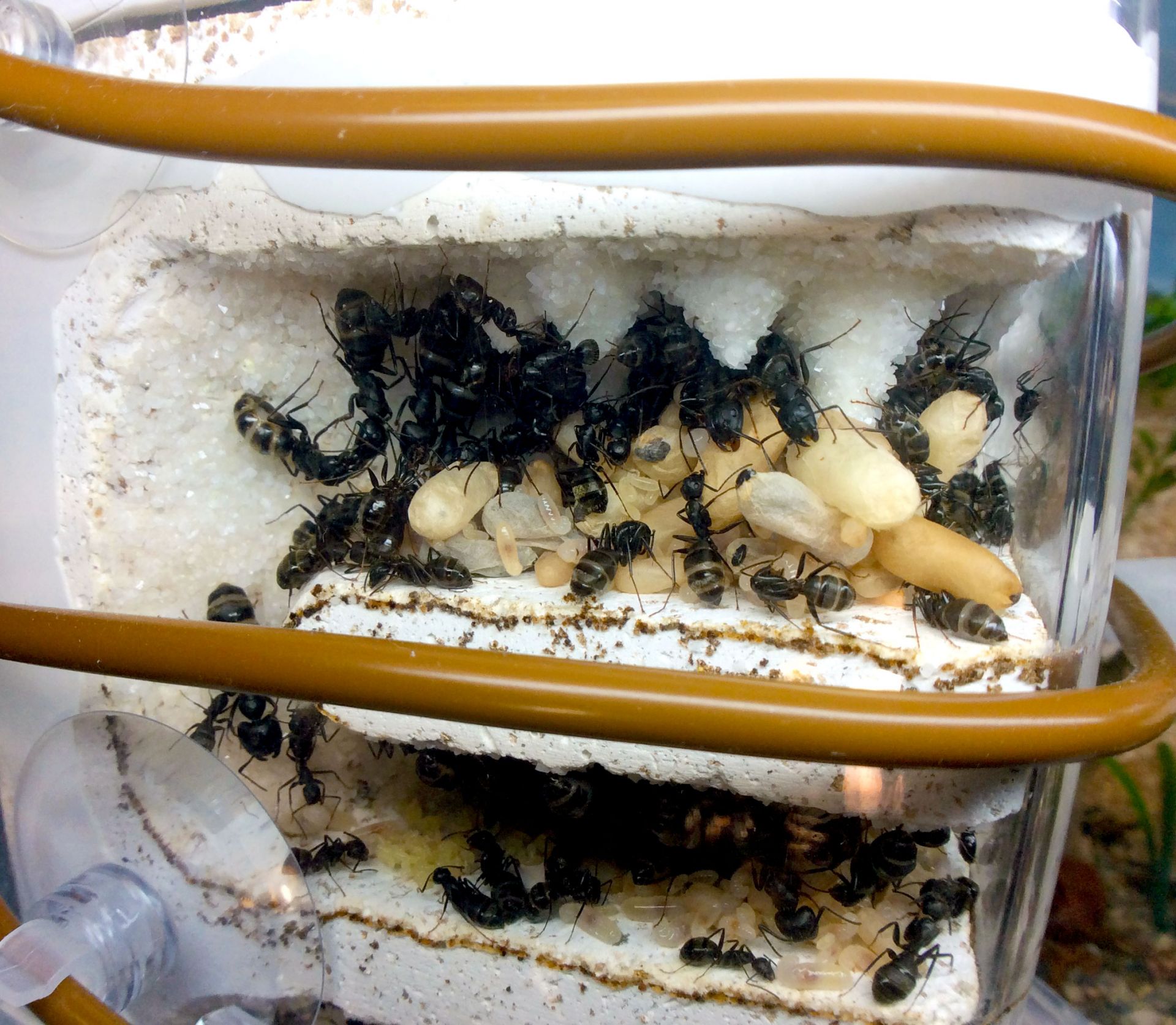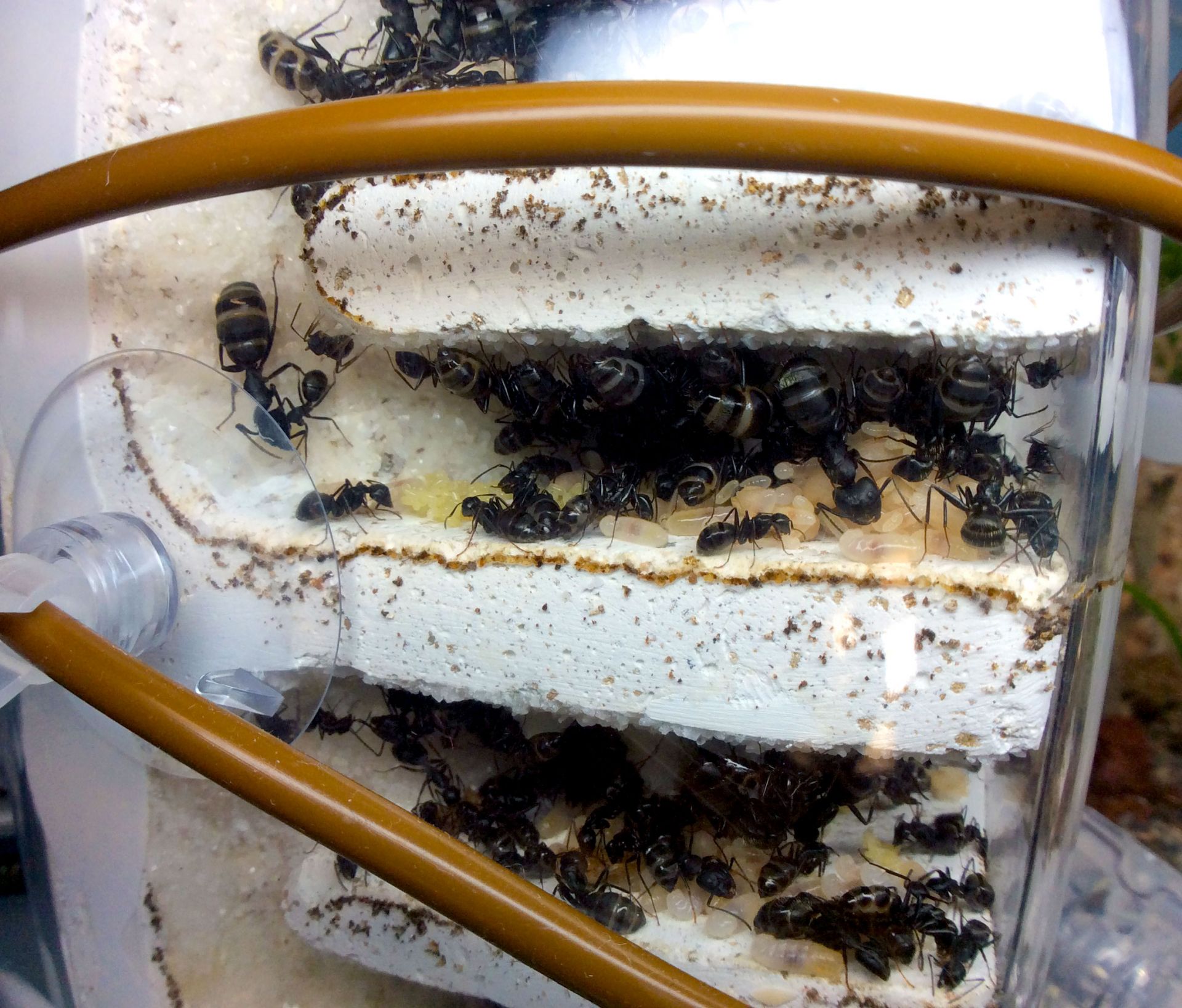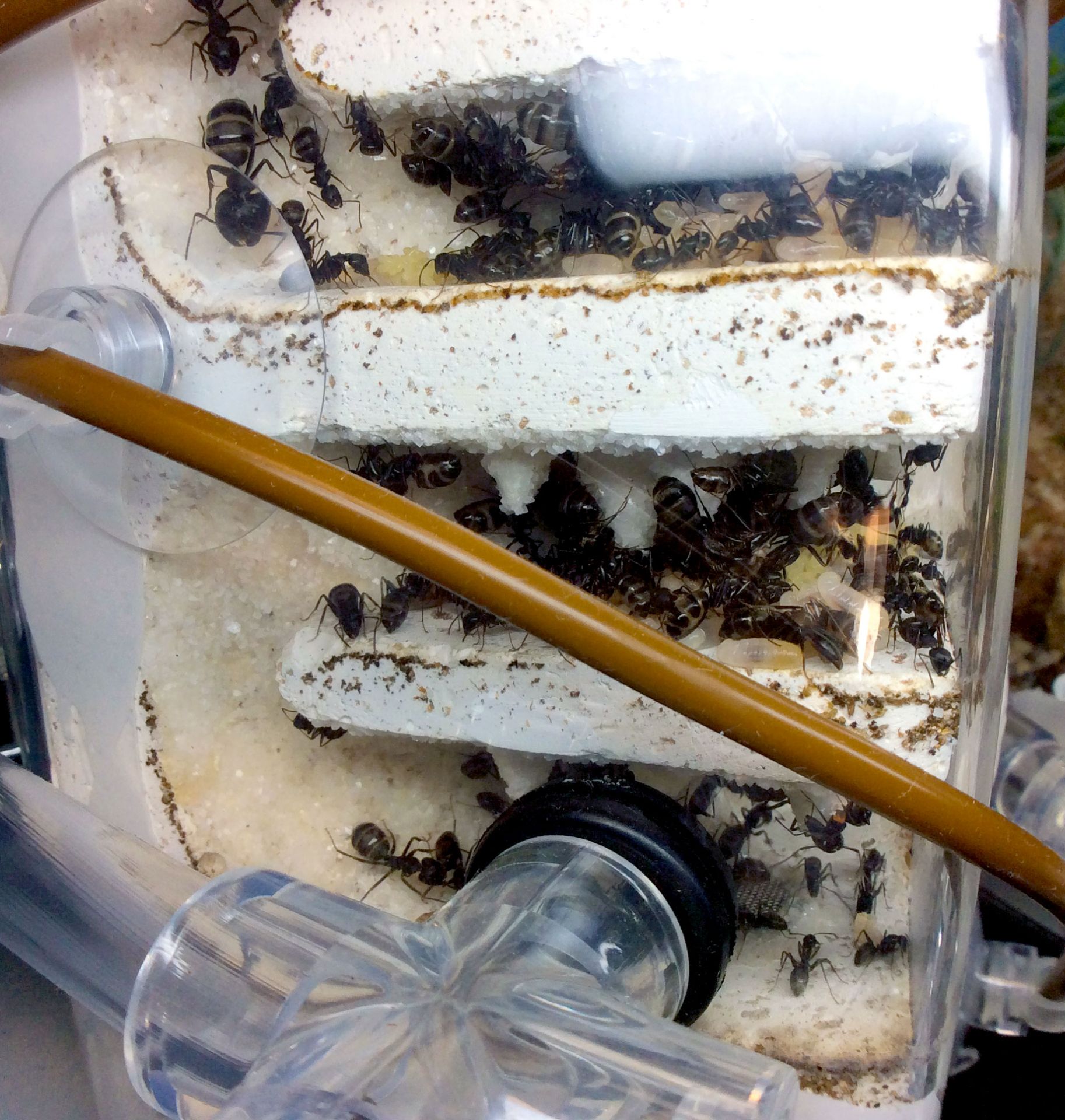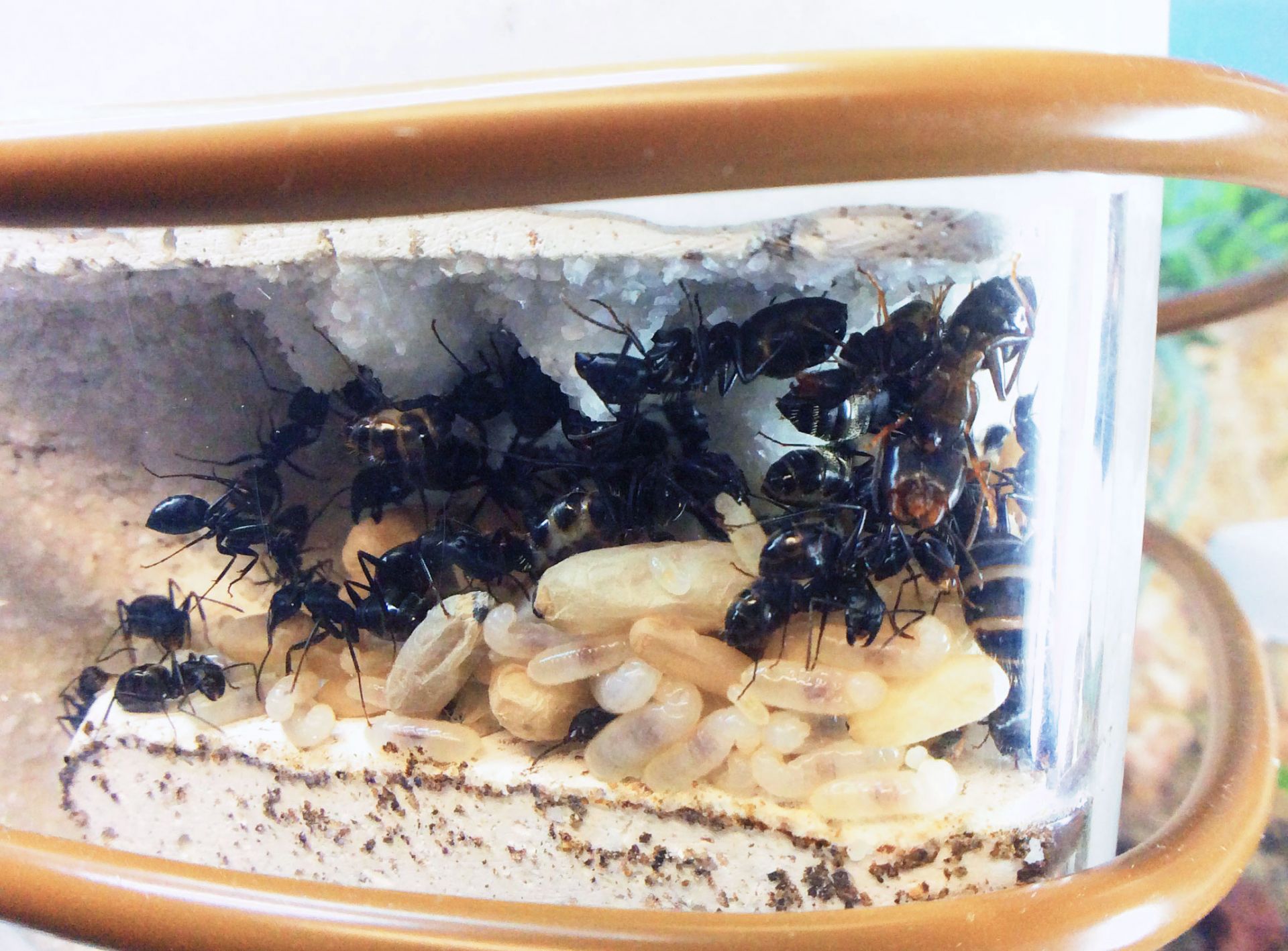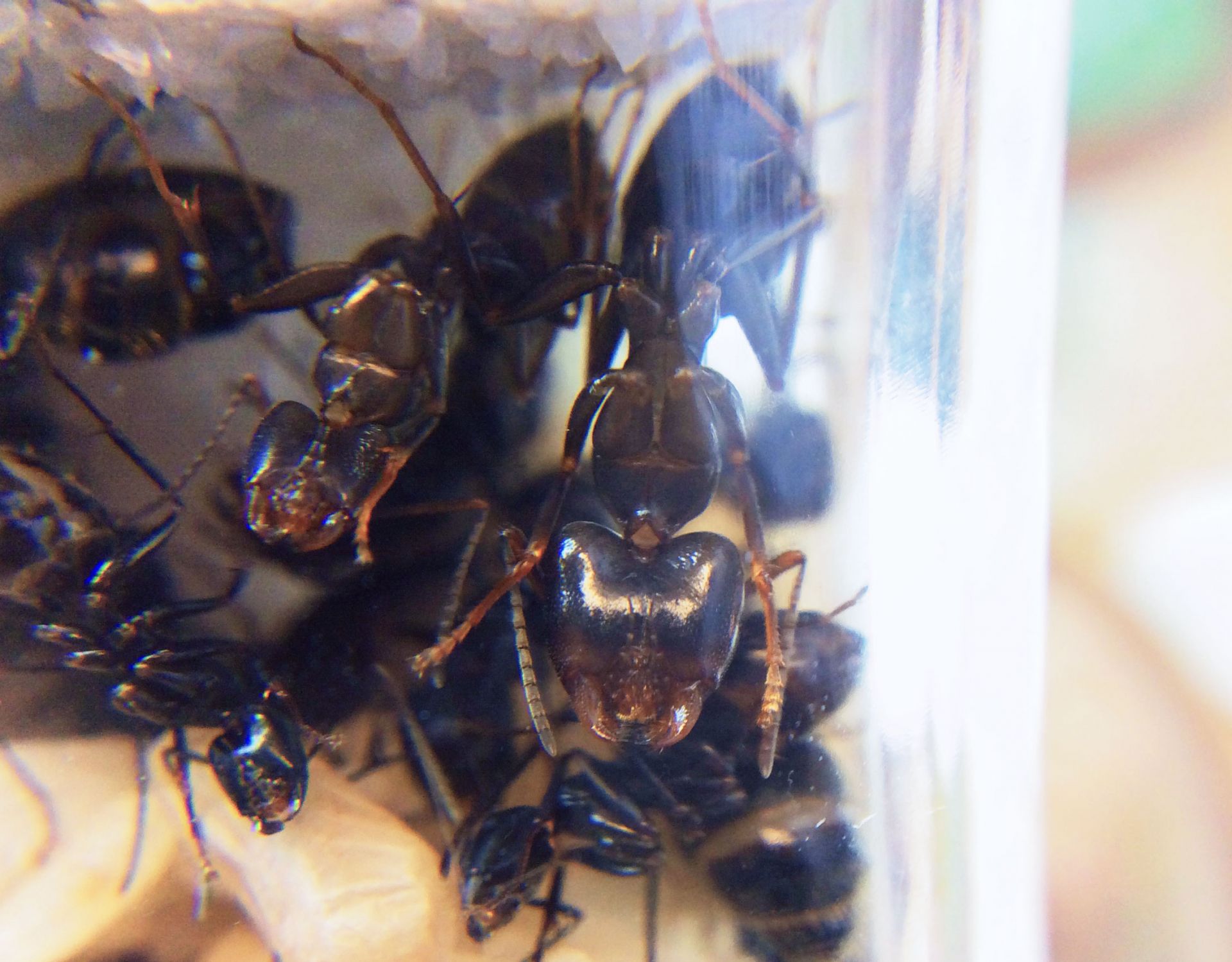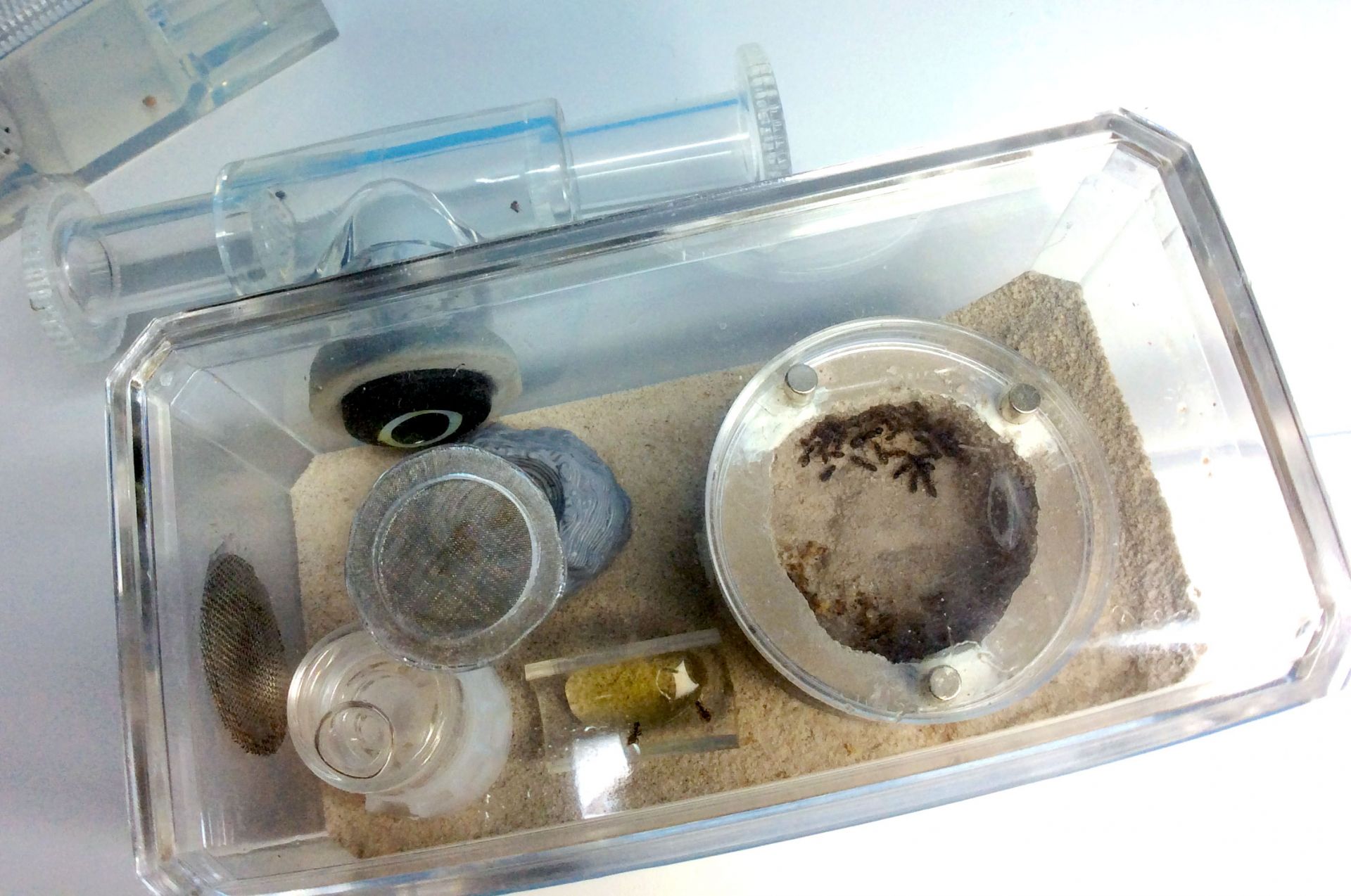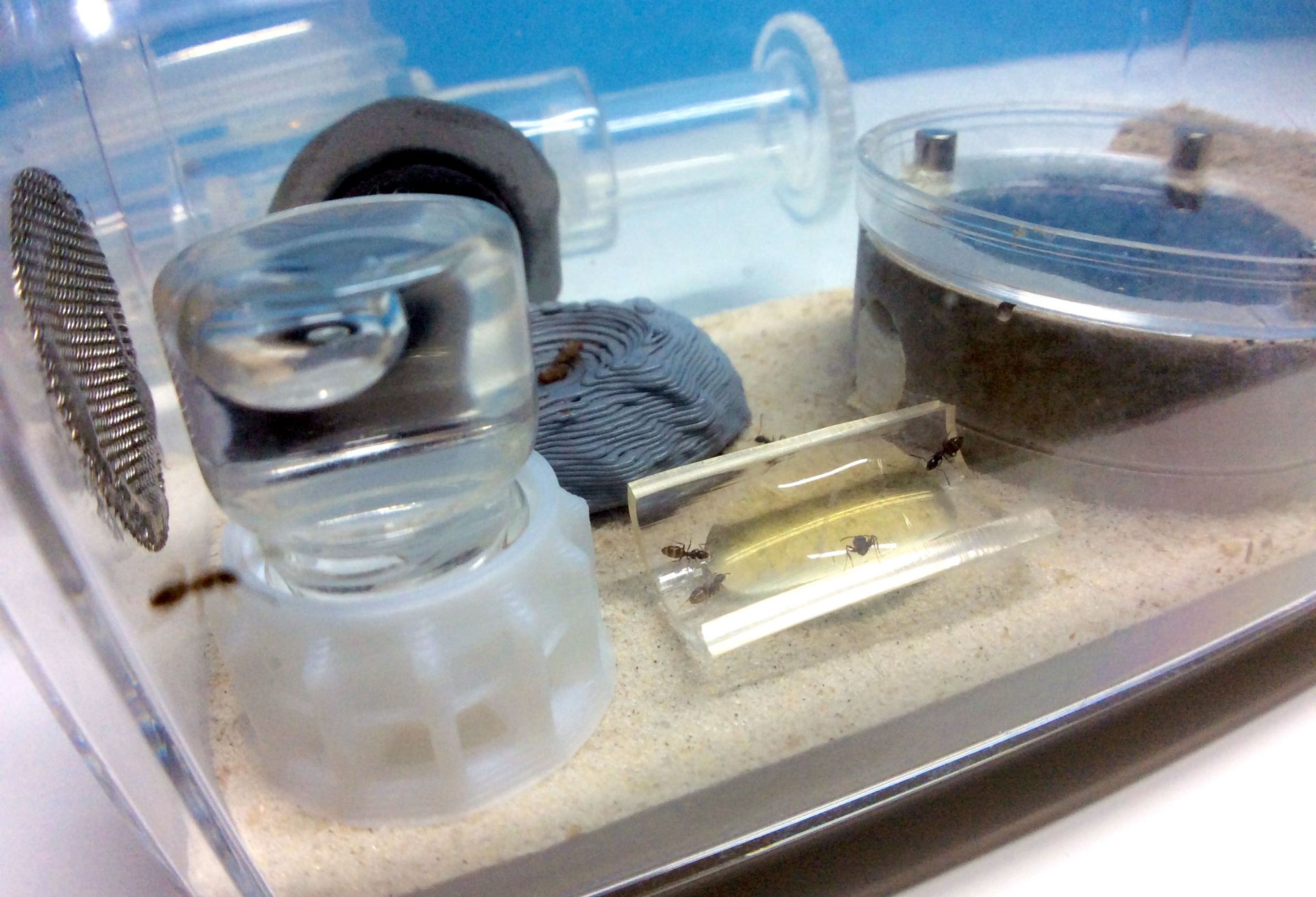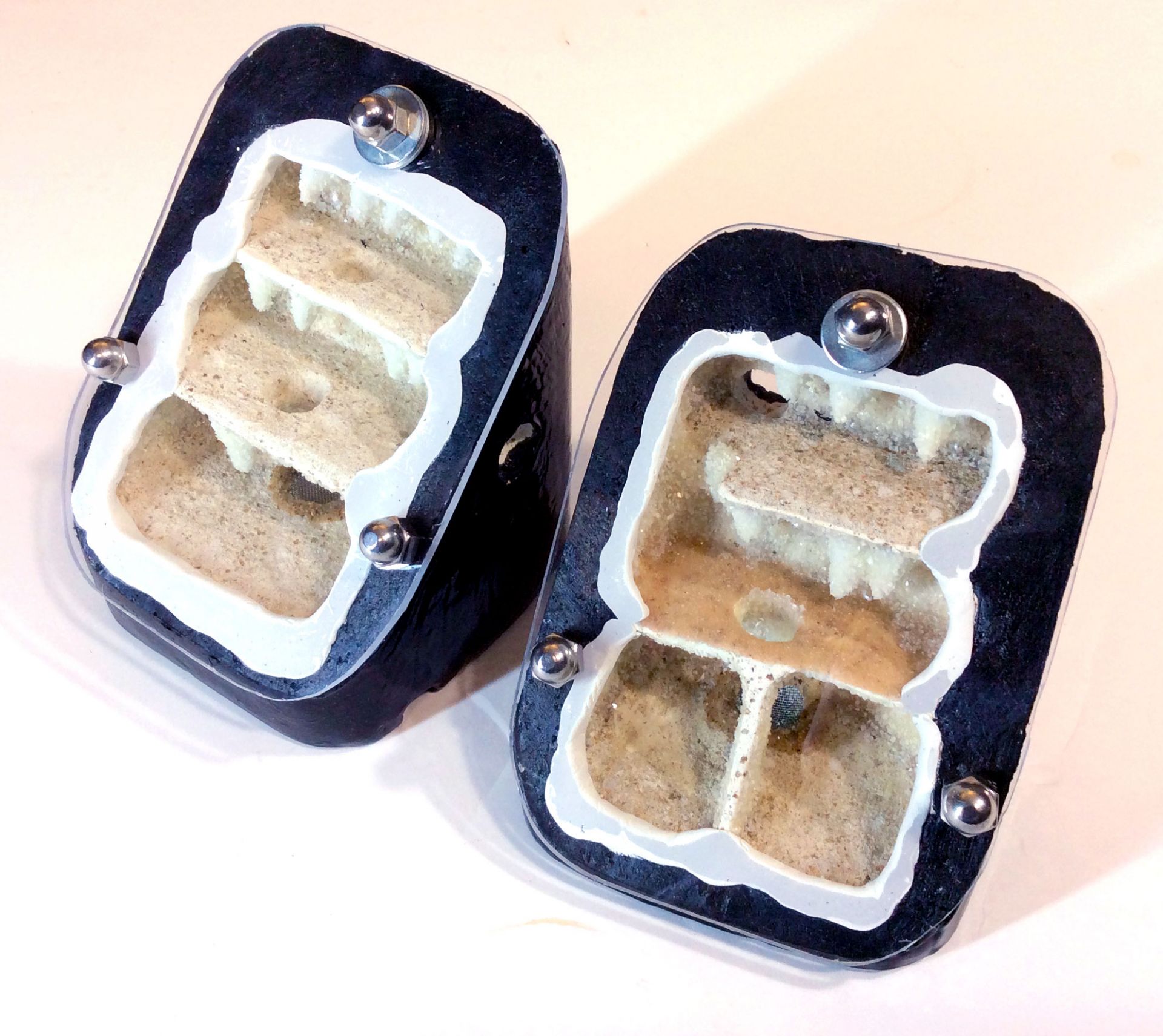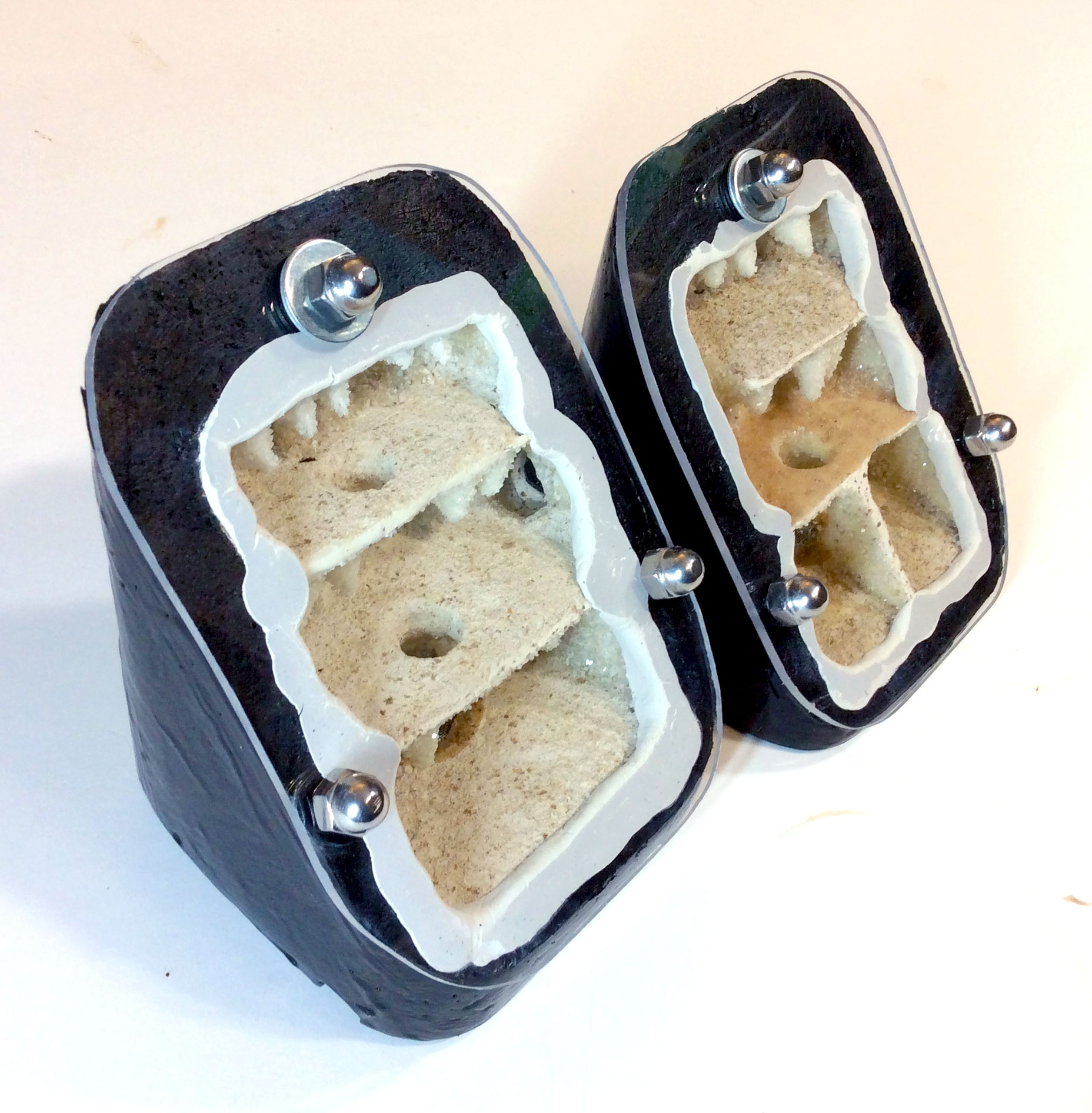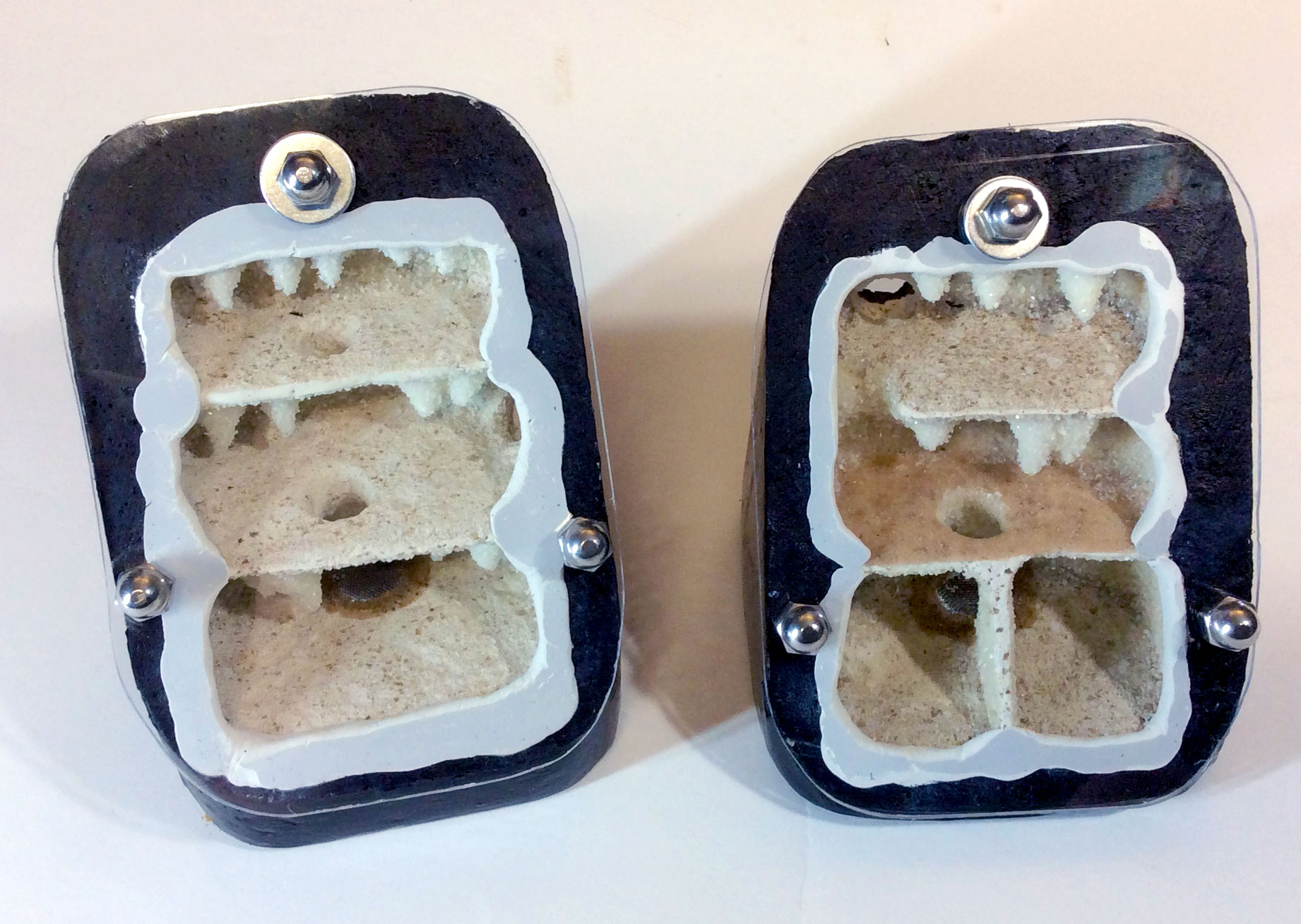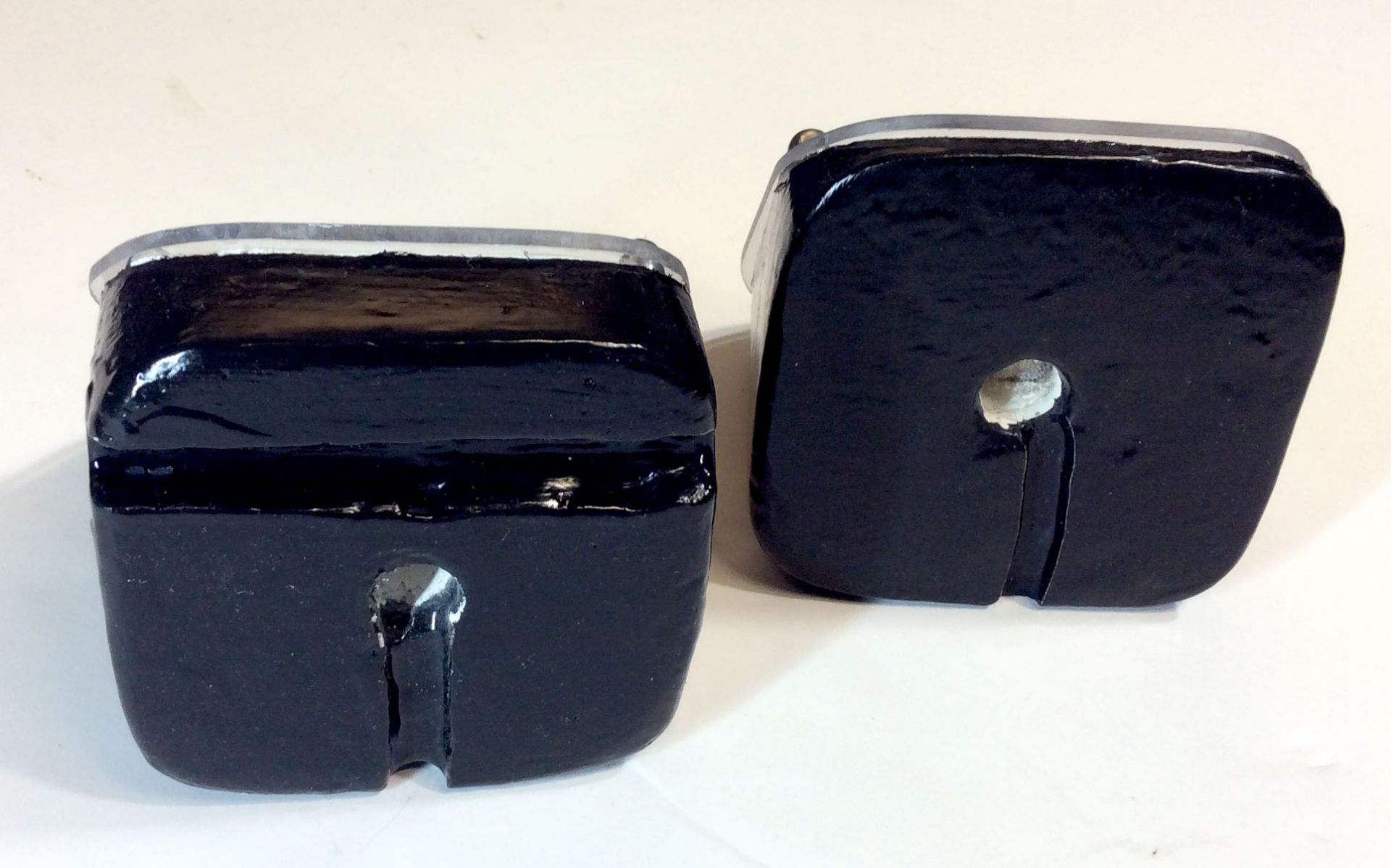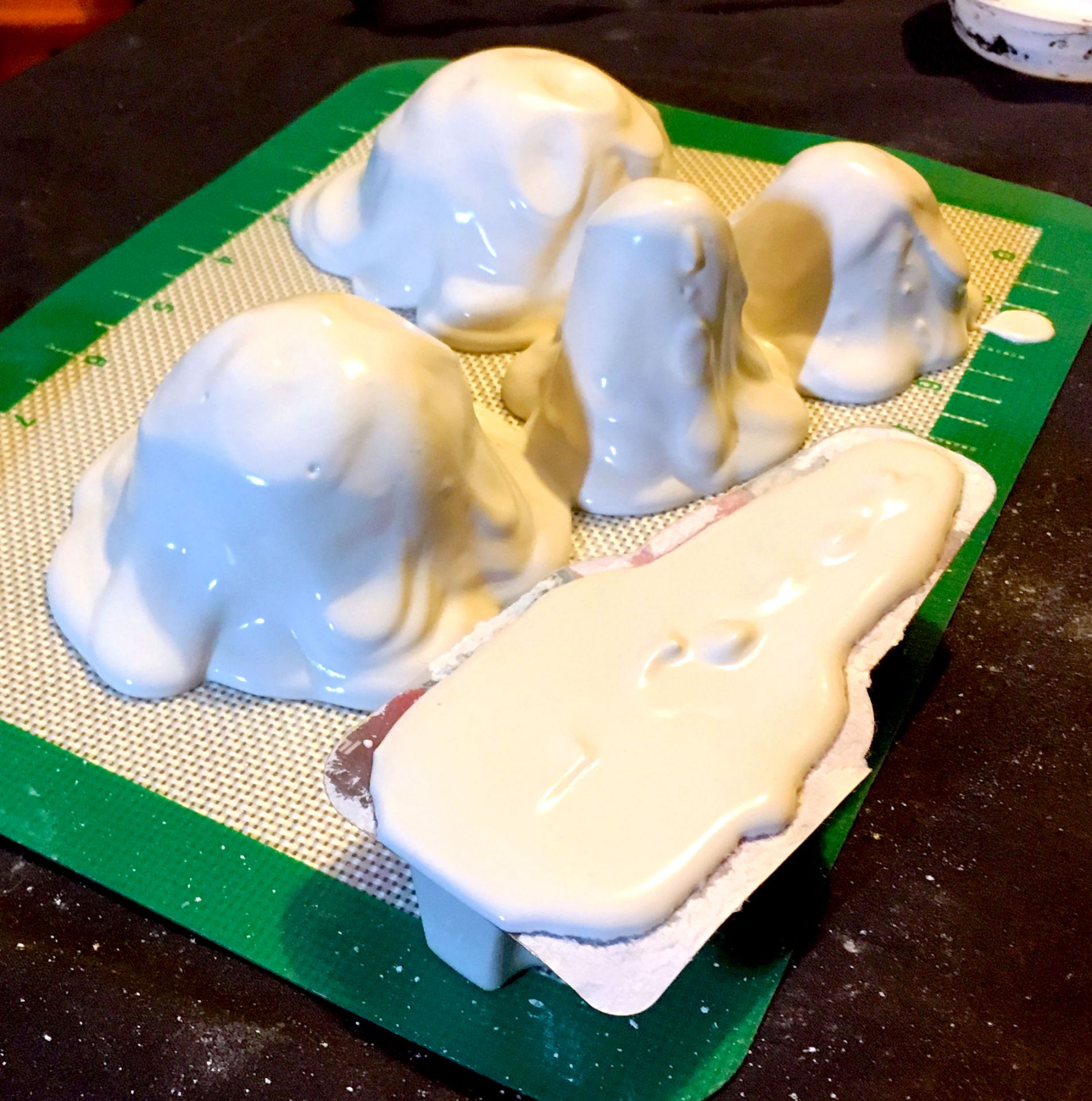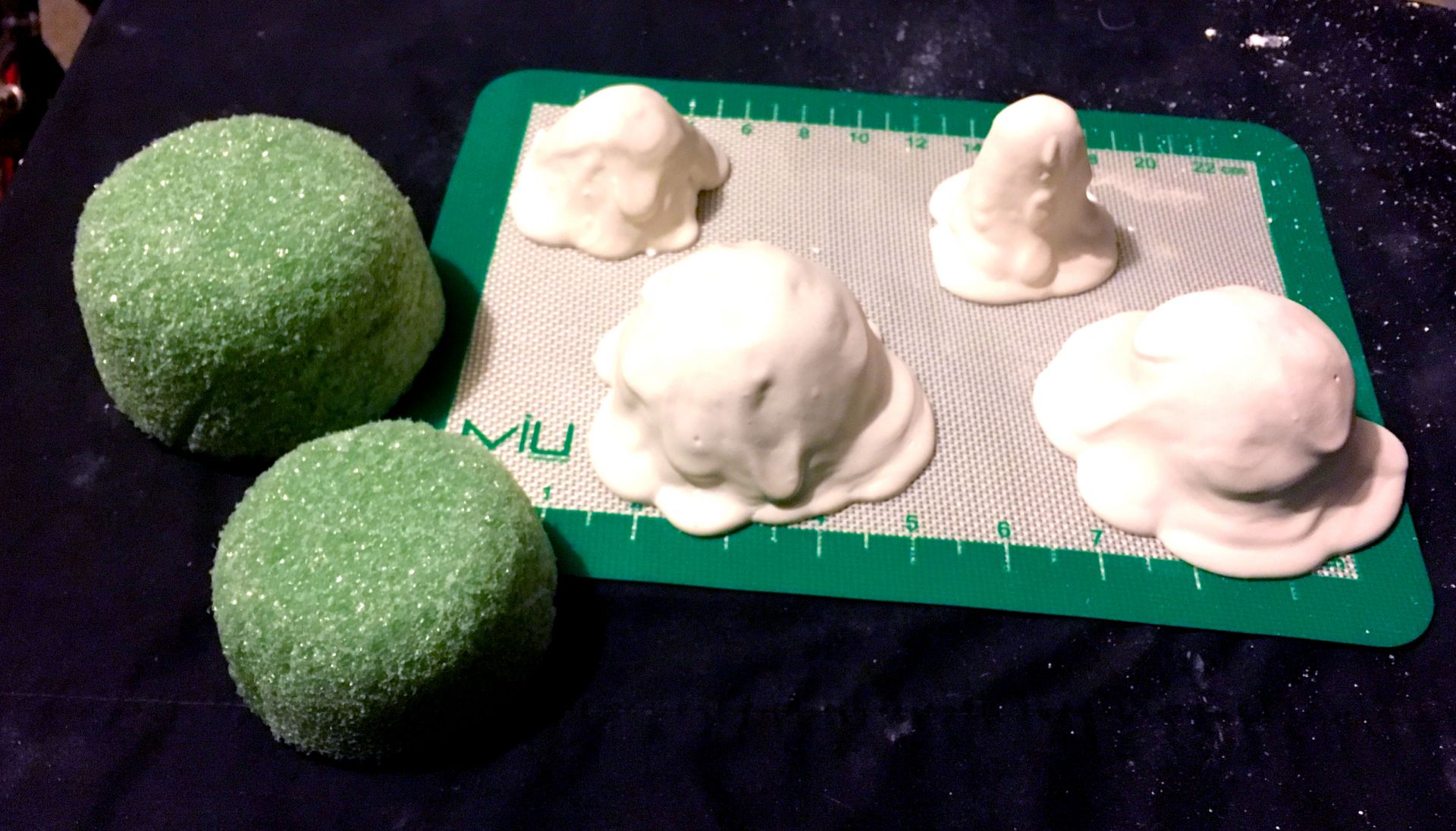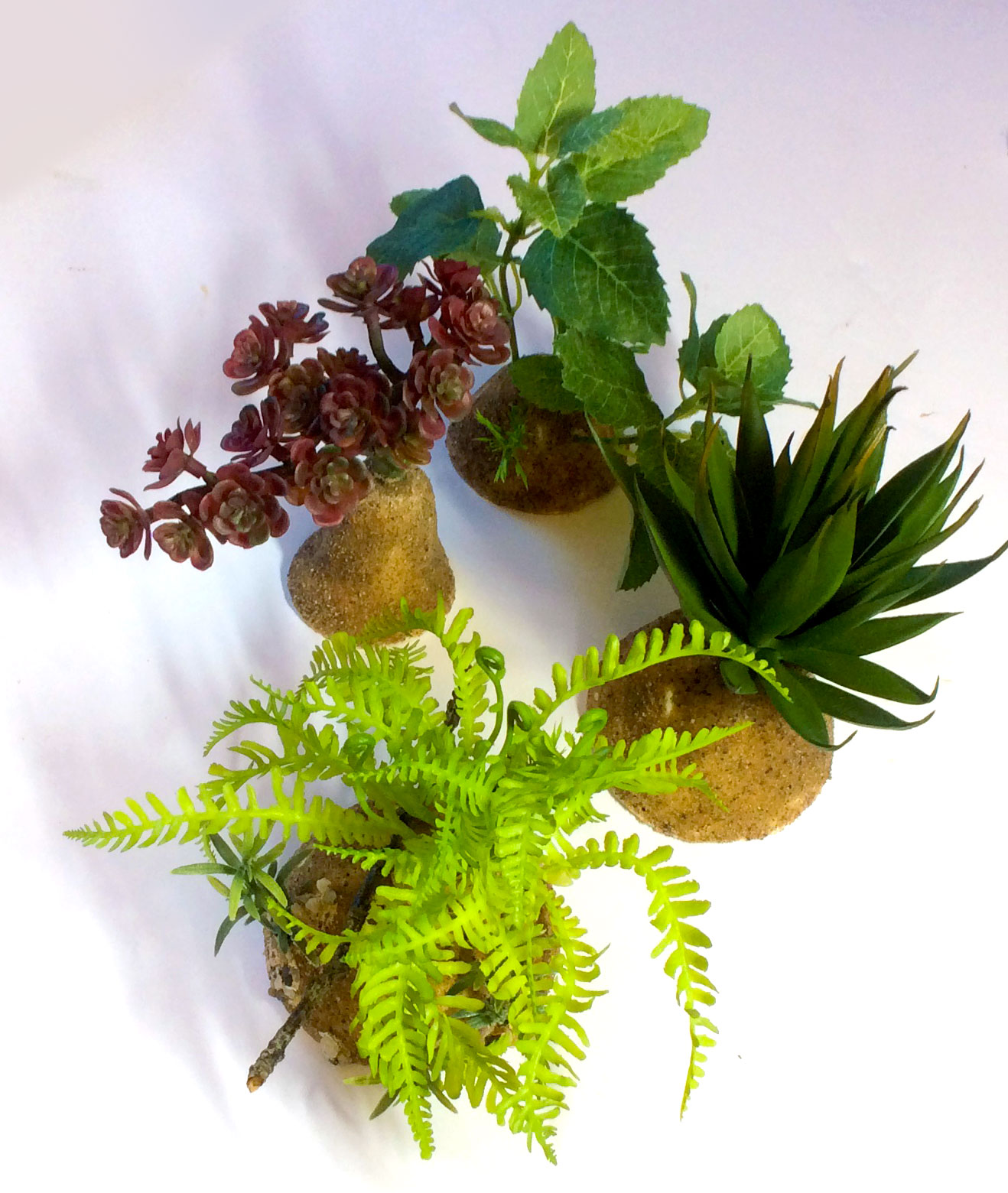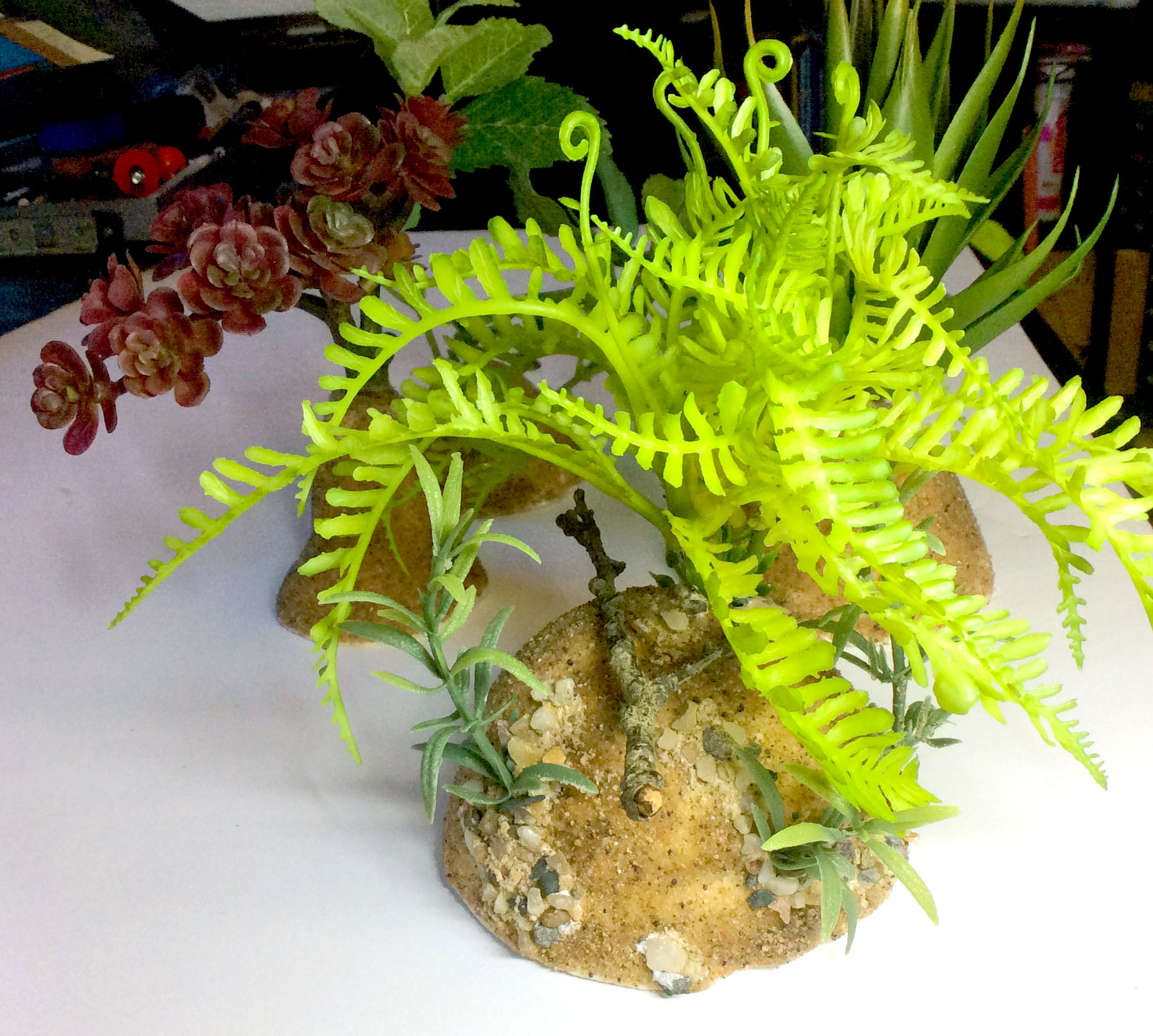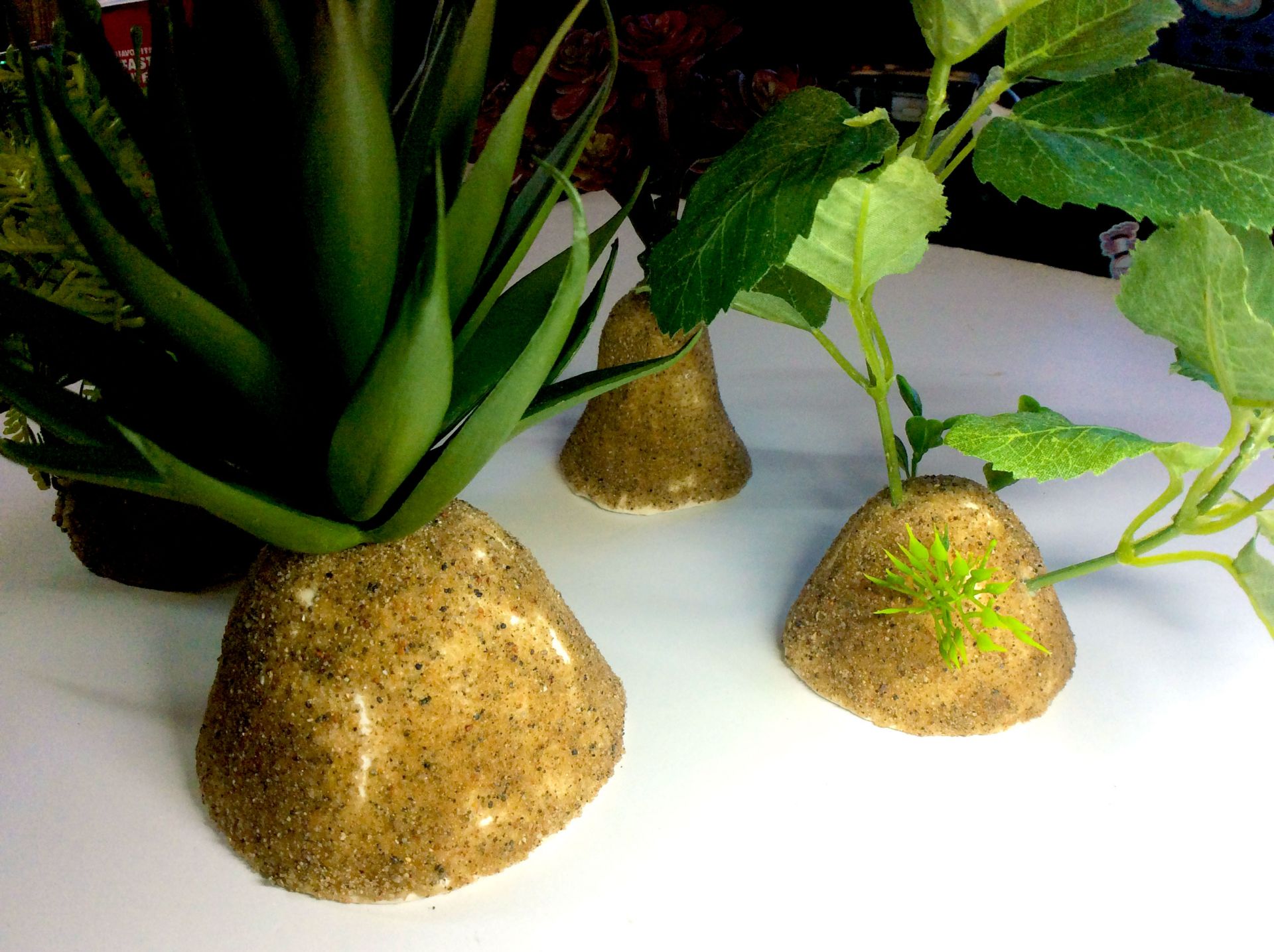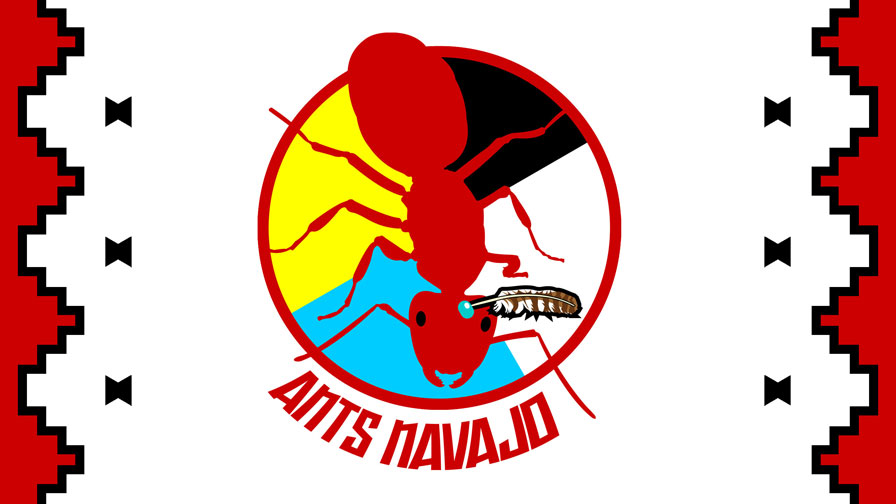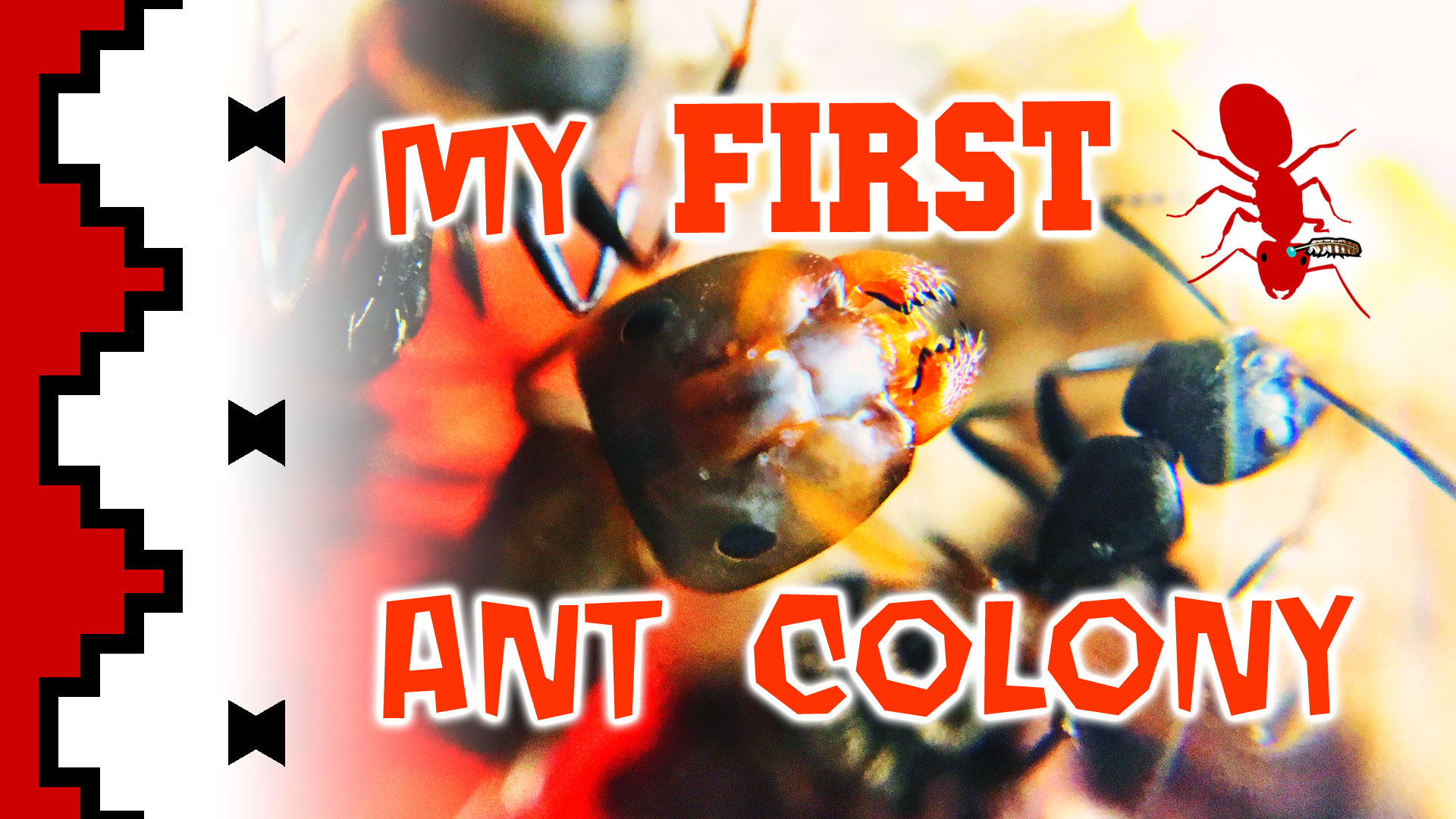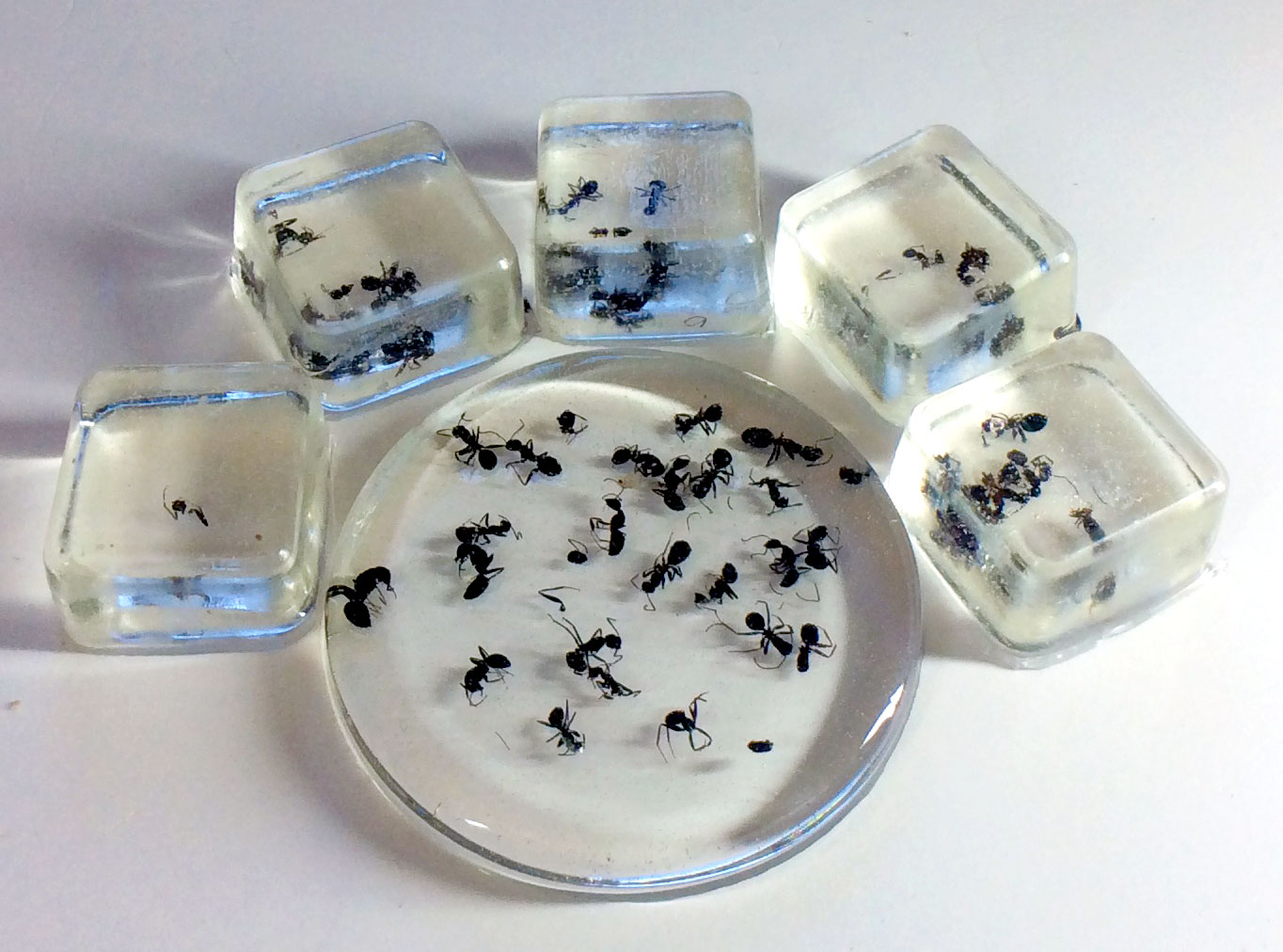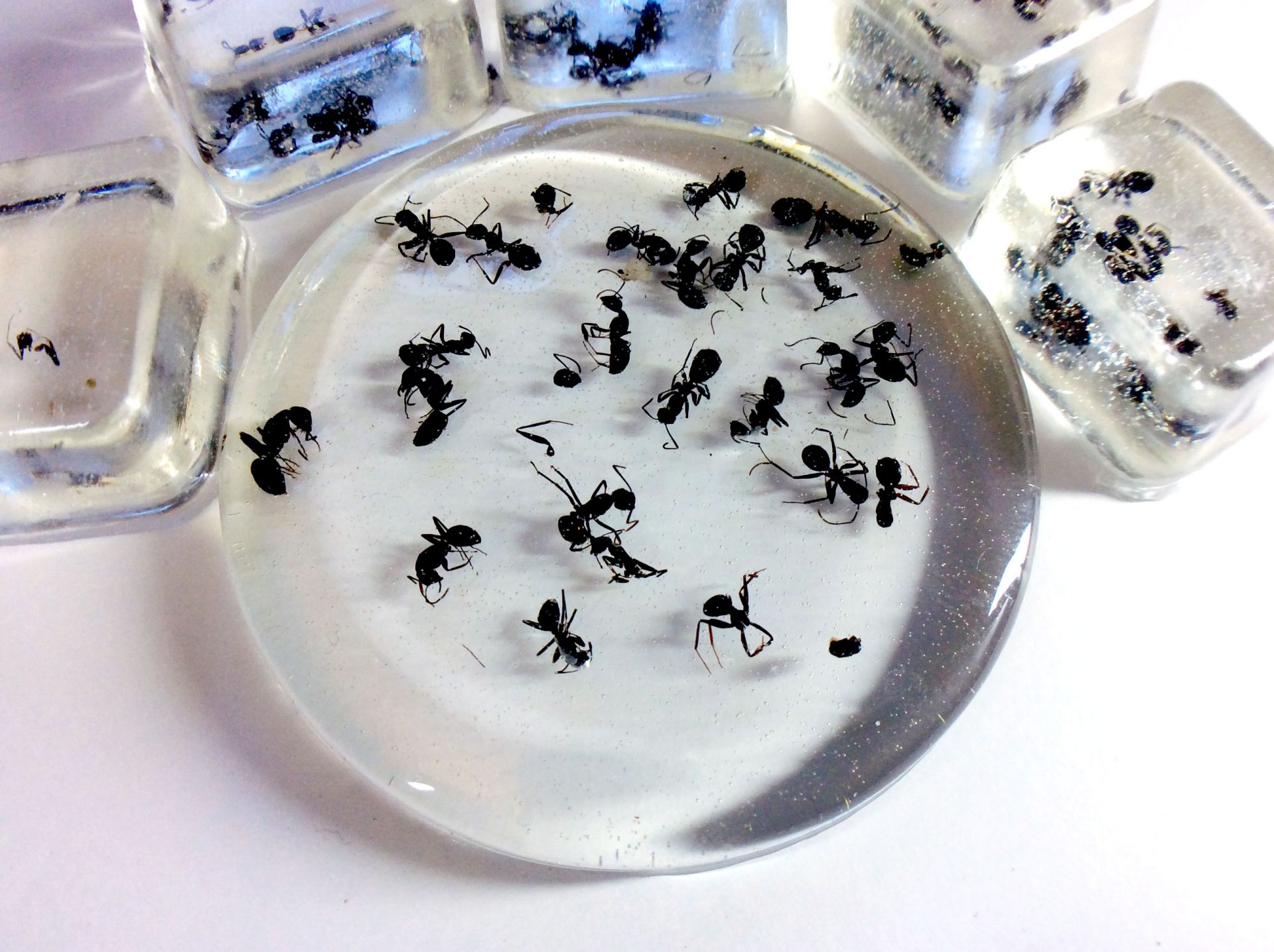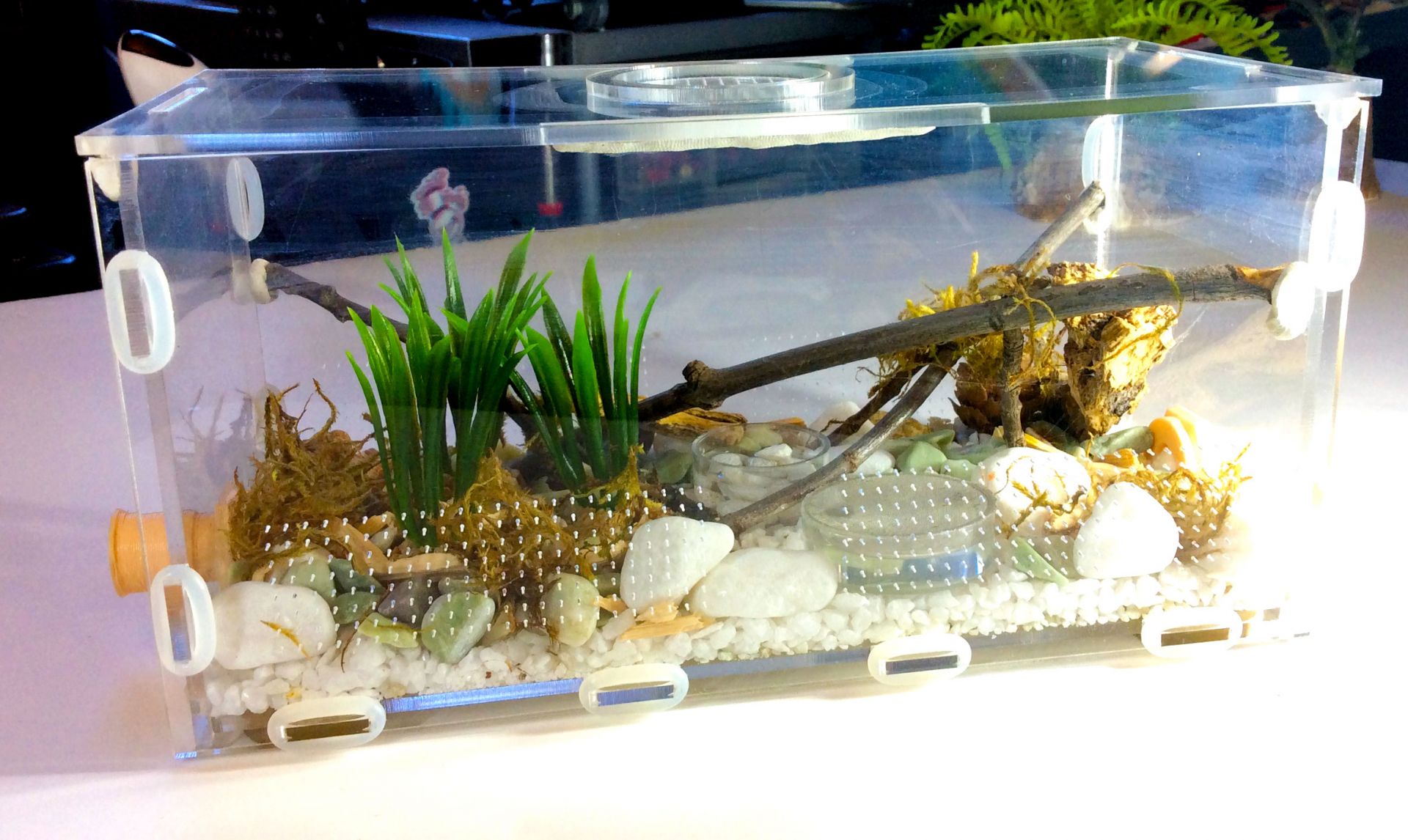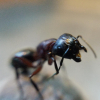While we welcome a new year of ant-keeping enthusiasm let’s hope those of us with our ants stored away are having a peaceful and restful diapause. Keep your colonies hydrated during this vulnerable time, folks!
My two Tapinoma sessile colonies, queens Sansa and Arya’s, are doing okay in their respective setups. Their brood is all larvae and not growing much, so I think they’re in a sort of diapause despite being in warm temperatures with less foraging and general activity. I have dropped my phone so many times that the the camera’s focus is now stuck so am dealing with blurry pics. I need to invest in some good equipment and would like to film my setups and builds but want to get some more ant-keeping experience first.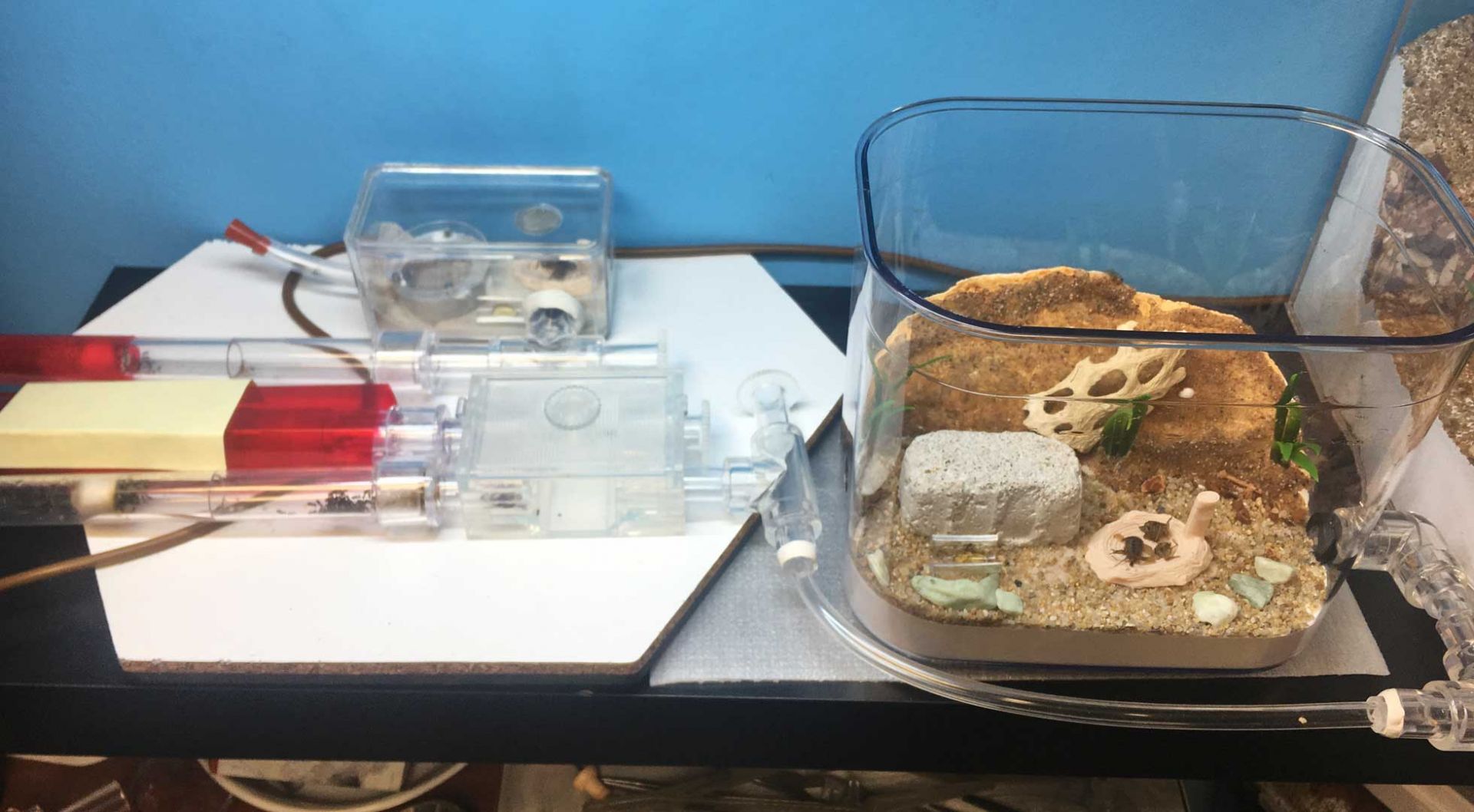
I have the one outworld lid open here during feeding, I sometime leave it open for several hours to air out any food smells or just to watch. Hot pepper infused olive oil is a great barrier, it’s been effective at keeping the ants at bay except the few that end up drowning in the thicker applications that collect and drip. I always have to wipe up excess oil to get a good barrier so I have to keep an eye on that. I’ve been reapplying the oil once a month by wiping away the older application with an alcohol wipe and using cotton swabs. Also the ants have been carrying sand throughout the formicarium, nearly covering up the entrance of both the nest and outworld.
I decided to go with Tar Heel Ants gear for my gals as I’ve finally acquired some of their products and felt them in hand; they’re good quality builds! I ordered from three ant stores and splurged on some ant goods that I’ll be saving for years to come, some of which will probably be popping up throughout my journal here.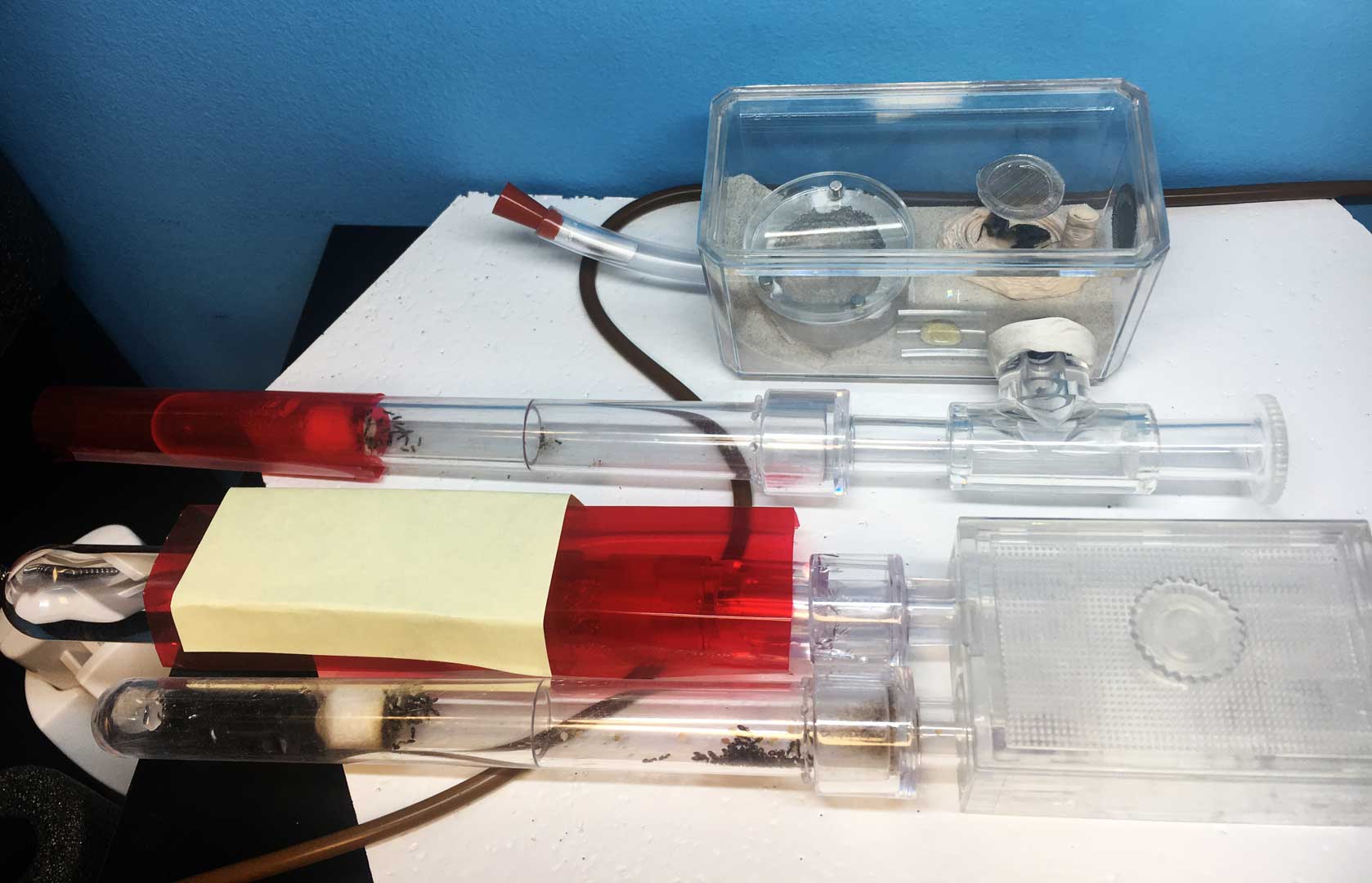
My smaller colony, Queen Arya’s, is connected to an Atom Nest that I modified with Milliput two part epoxy, a hole with pipe screen for extra ventilation and another one for tubing entrance via a rubber grommet. The nest area had fairly wide gaps between the lid and where the magnets were embedded which I had to shore up with Milliput and also sculpted the entrance of the hydrostone nest which had a hole too large for these ants to something fit for their tiny size. I’ve observed them scouting the nest and nestmate but they haven’t moved out of their test tube. The cotton ball is still moist and there’s a few drops of water in there but I’m just waiting for them to decide to move. I hope the Atom’s nestmate provides enough humidity and hydration for their needs. Queen Sansa’s colony is also in an empty test tube with a damp cotton ball and not moving. I decided to try out the Genesis Test Tube System and have that covered up with red film and a post-it and have seen ants visit it for water but I’ve been awaiting their move for a month. I have the heating cable close to the cotton ball in hopes that they move but nothing yet and I don’t want to toast their brood. The only water the colonies have access to is where I want them to move and its just been a waiting game.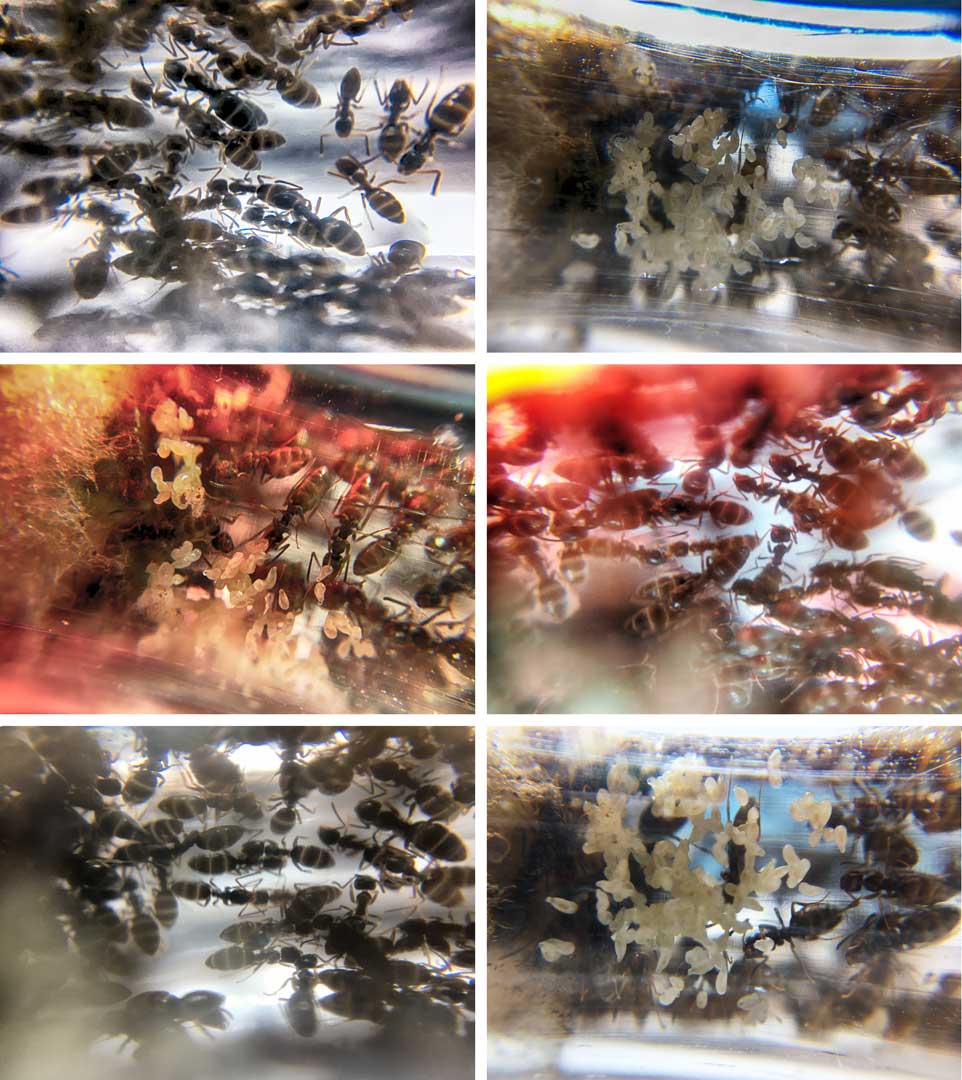
Their larvae have been fairly uniform, no noticeable growth or pupae yet. Also been losing a few ants every few weeks, it seems like normal die-offs as their bodies are found anywhere outside the nest like they died on that spot. Some of them are piled in thrash but most of the bodies are randomly strewn about and I clean up the ones I can. I’m anticipating fast growth this year though so am planning another move later in the year into larger nests.
Queen Elizabeth’s Camponotus pennsylvanicus colony is currently in a cabinet situated in a corner of a garage. I check up on them almost every night since the winter is warmer this year and was wondering if they’d exhibit any different behavior than last year which was colder.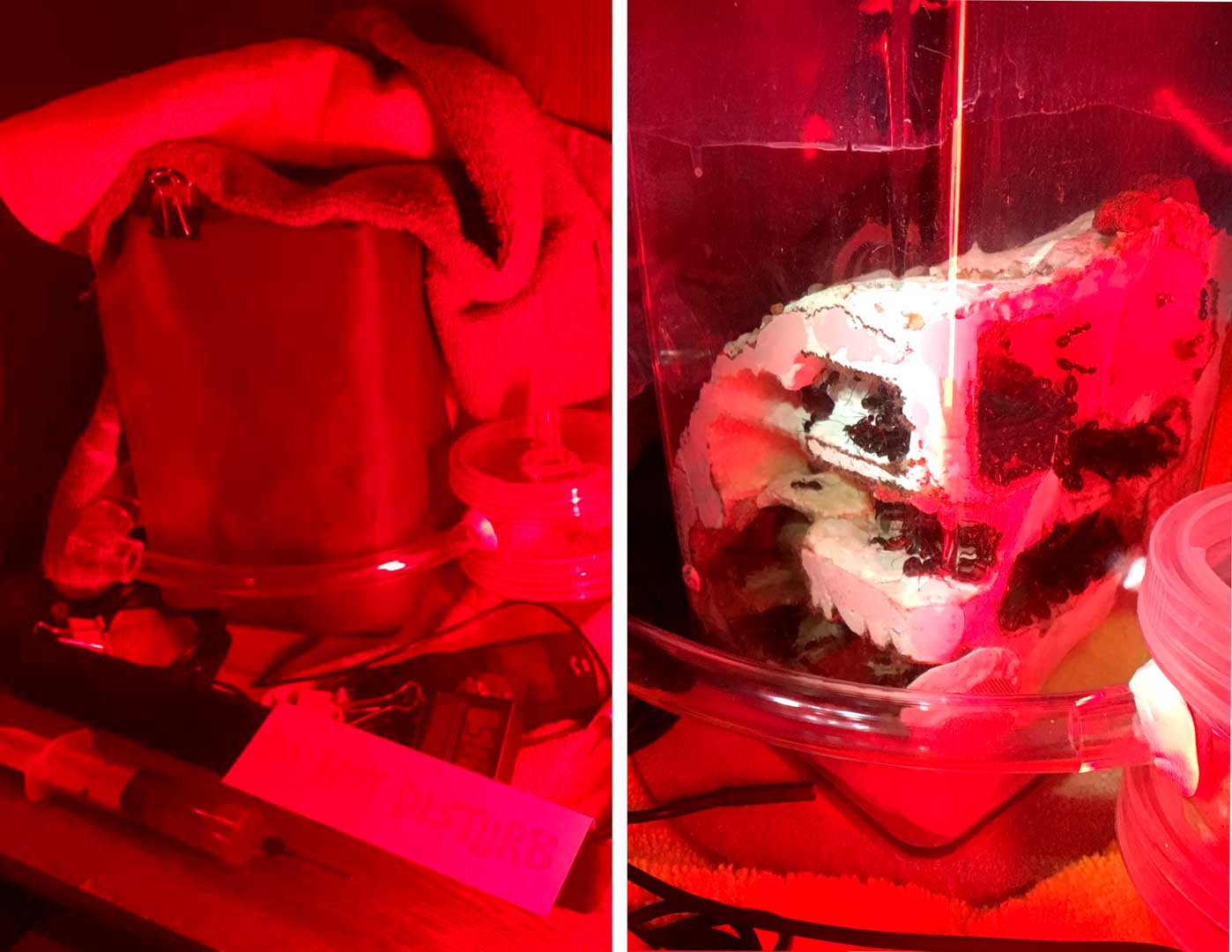
Half the colony seems active whenever I peek in, so it seems they hadn’t all gone into full diapause mode and I wonder if that’s due to the warm fluctuating temperatures here in the NE this season. Last year the whole colony seemed inactive but I had far less numbers then. I need to keep observations to compare to next year’s diapause. Because of warm weather last week, I decided to give them a small byFormica feeder of Sunburst Ant Nectar along with the usual water refill and half is gone so far. The lowest temperature readings I’ve gotten is 39 degrees F, the highest was 63 degrees F as of this week since I put them away in November. Last year, lowest was in the mid 30s but we still got some winter time I guess. I imagine climate change will benefit some ant species and not others; us Camponotus keepers need to observe how they handle warmer winters and their subsequent brood growth.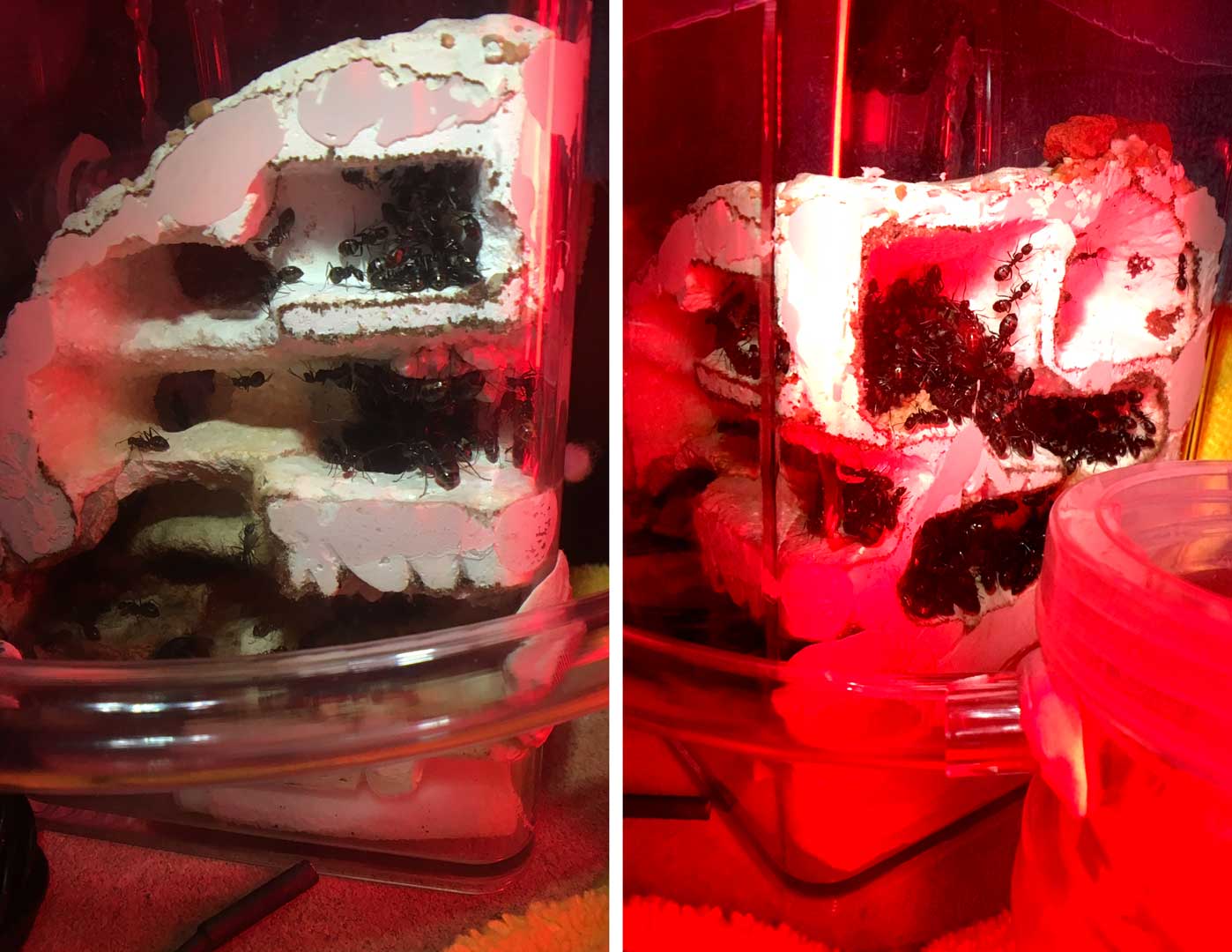
This is Boog’s Bug BUILDS so here’s some updates on the formicaria I’ve got brewing over here! I’m sticking with grout and the same type of container for my C. pennsylvanicus colony so that my two nests look nice sitting next to one another. I placed a wood board diagonally down the working container to mold the grout, I'll use a brand new container for the final one. I let the grout cure for 36 hours then took it out to carve out the levels.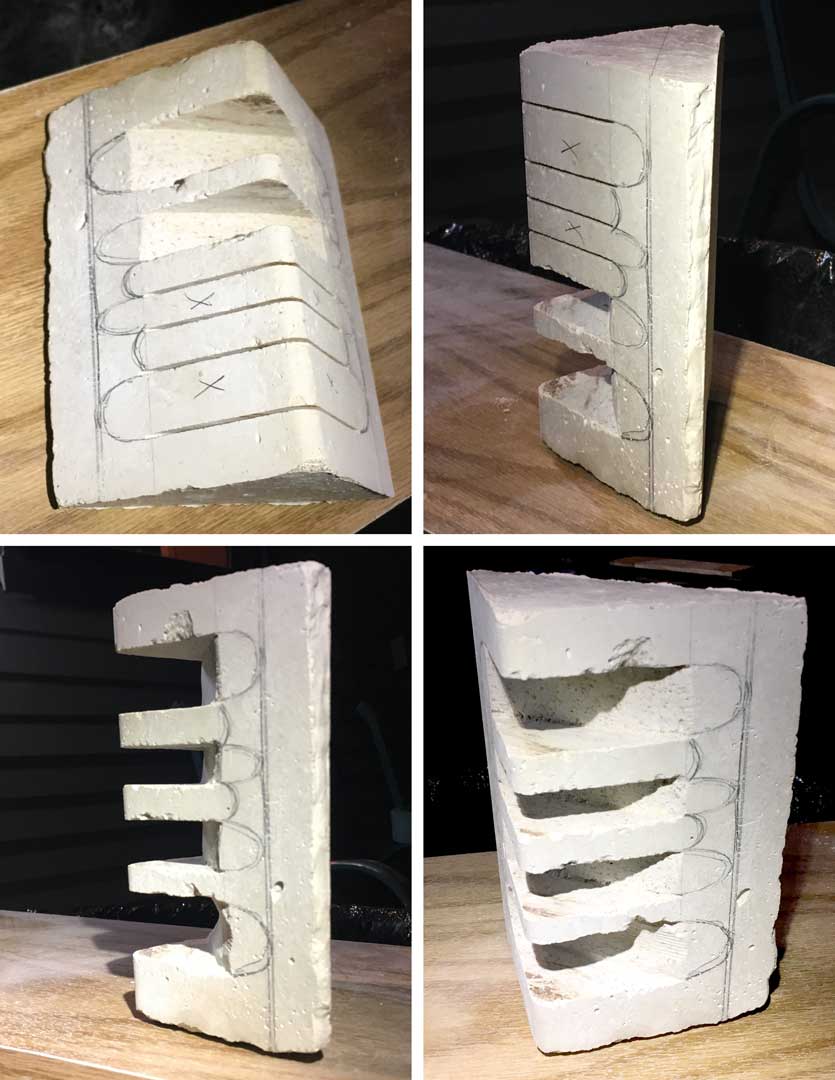
I used a mitre box and saw to get straight cuts which took some careful handling with the fragile curing grout and wore a mask and safety glasses. I then used a Dremel to carve away the curved areas of the nest then used two part epoxy to apply a layer of white sand to the back walls of the nest.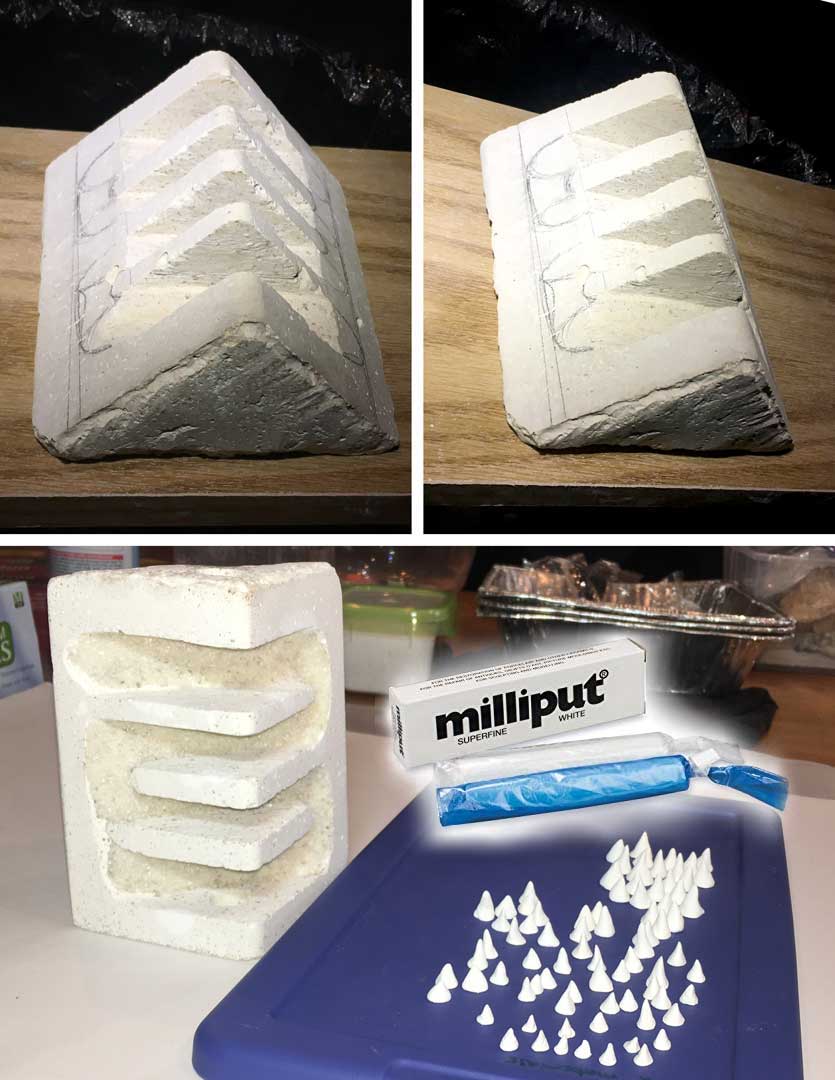
I then made a lot of cones of various sizes from superfine white Milliput with my fingers which I will use for stalactites (cramped up hands are not fun).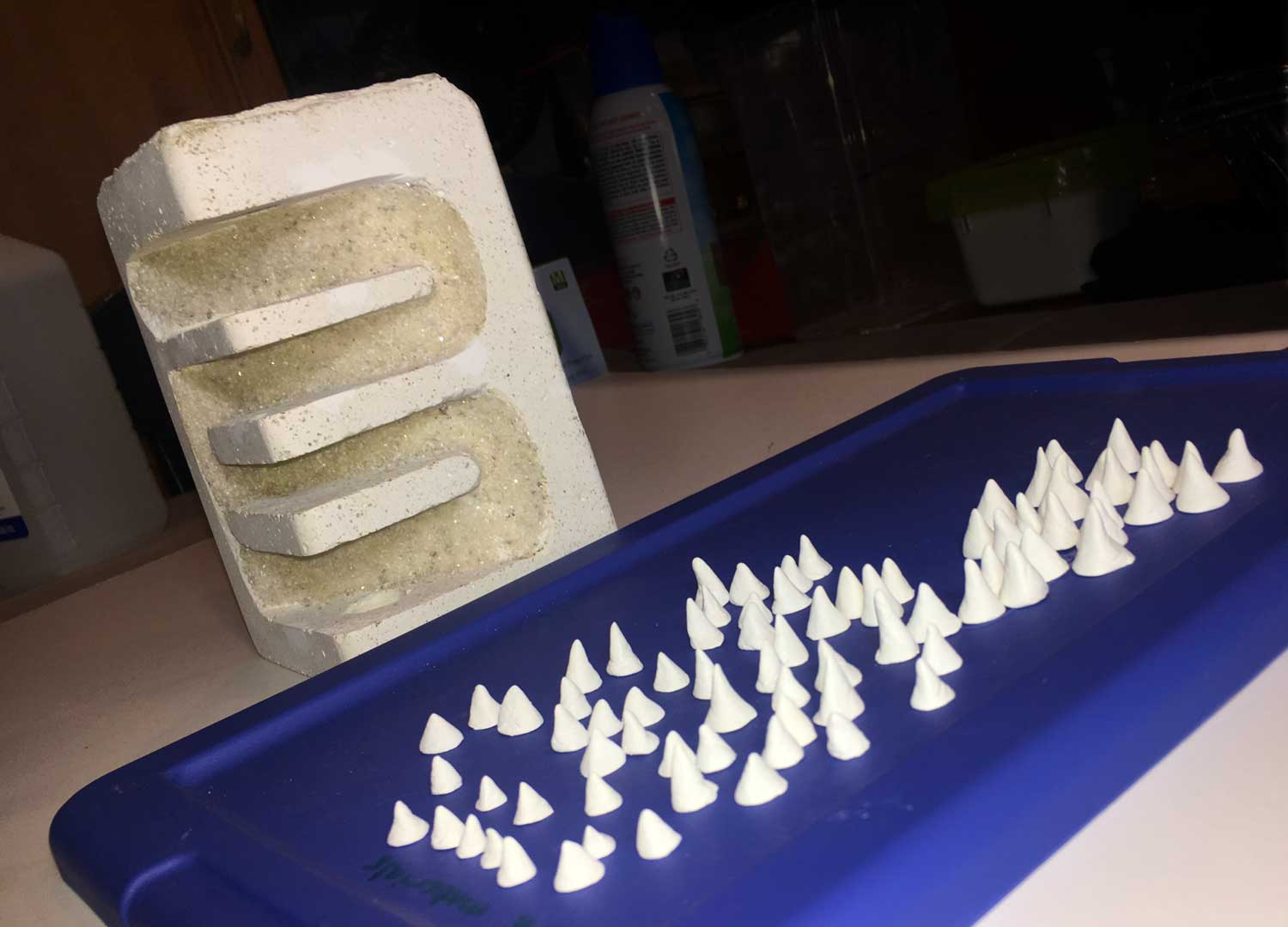
I let the cones cure for several days, I then sanded and drilled their bottoms a bit so that the adhesive could have an area to grab. I like the white nest to contrast with the black ants and my goal was to have grout floors with epoxied sanded walls and stalactites. The exposed grout ground hopefully is absorbent while the epoxied walls hold in humidity and the stalactites provide more surface area for ants to hang from. The nest layout is snaked upwards, one side is closed off on each level and I drilled two holes through the bottom and top.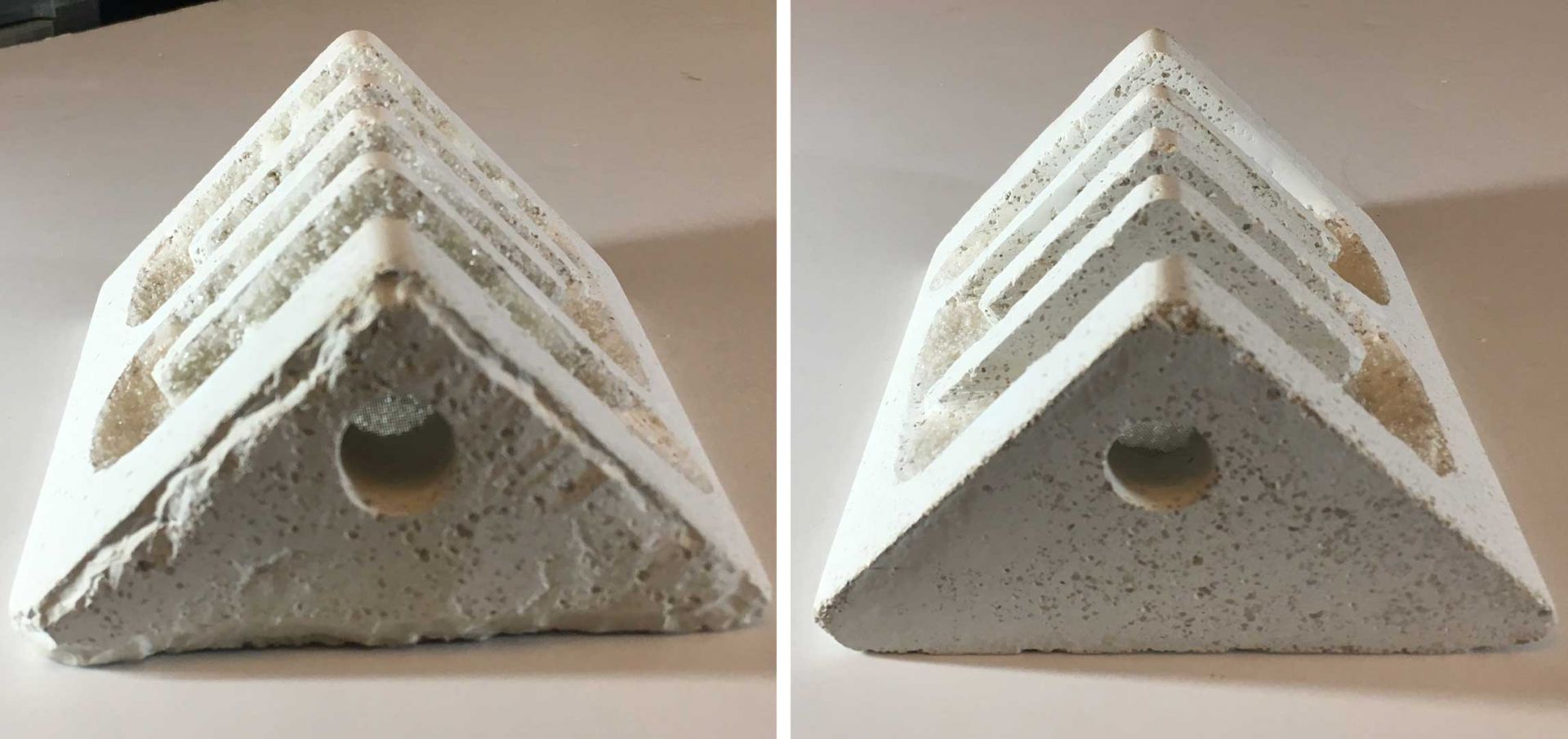
The plan is for the bottom hole to be for evaporating hydration/humidity and the top hole for ventilation. I epoxied in two pipe screens over the holes while also placing the cones where I wanted them, then finished epoxying the stalactites with sand. I had to move level by level and carefully but quickly place everything because I would mix the 5 minute epoxy in batches. After everything cured, I'm pretty happy with how my new grout nest is turning out.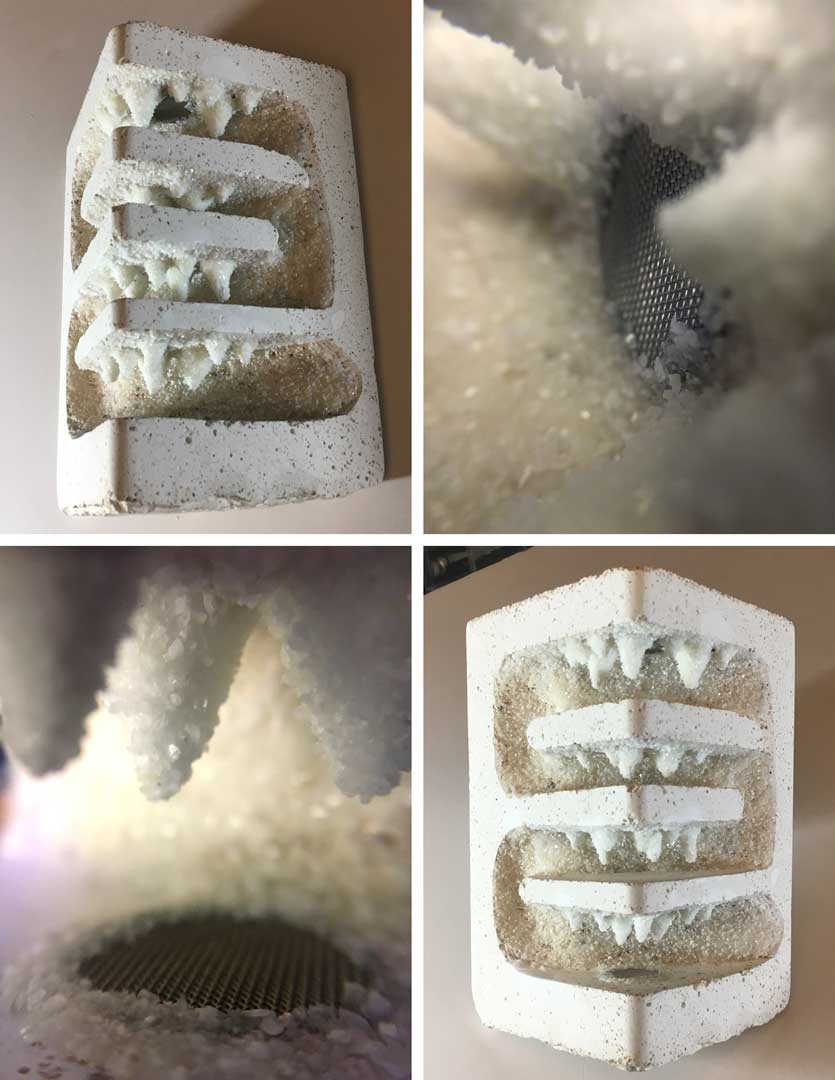
I really enjoy watching my ants hang upside down so I provided more areas for them to hang and hopefully the stalactites allow for more ants in a given area. For the grout mix, I used about 1/3 vermiculite to help with hydrating and maintaining moisture.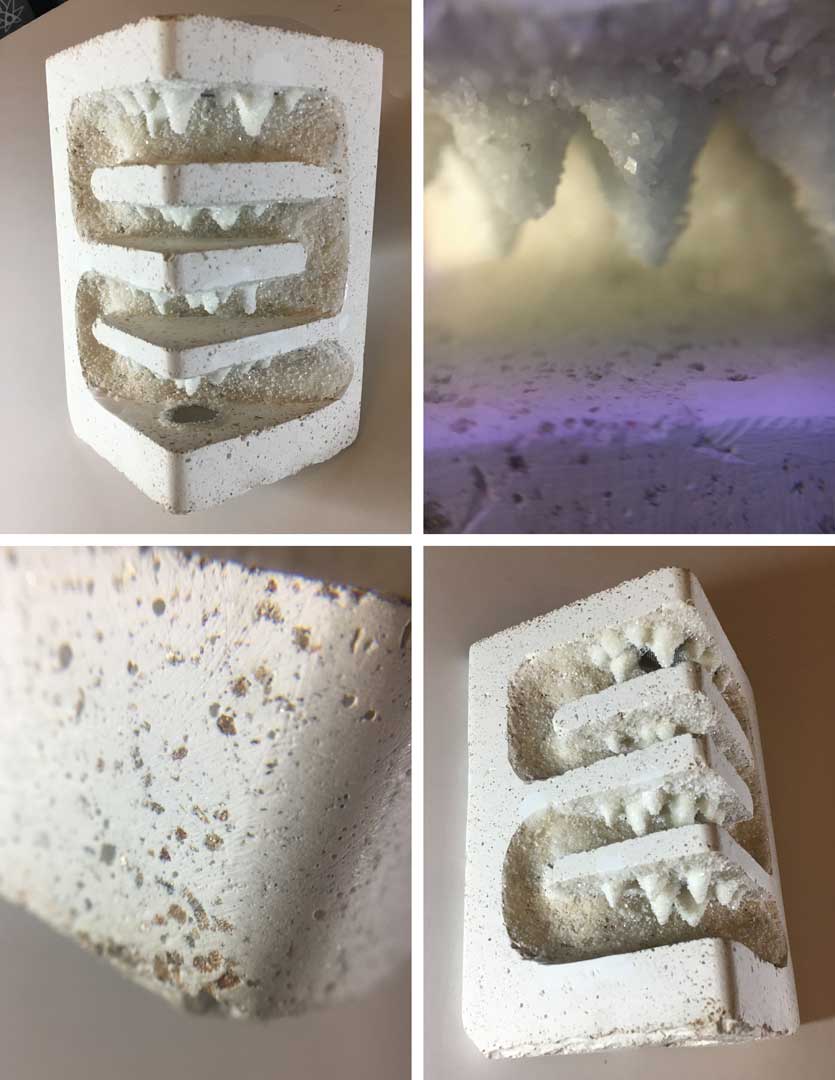
I suggest trying out epoxy and sand for your nests and out worlds, it’s a hassle to get the application right but the results are some sturdy sand-textured walls. Just wear a mask in a well ventilated area when using!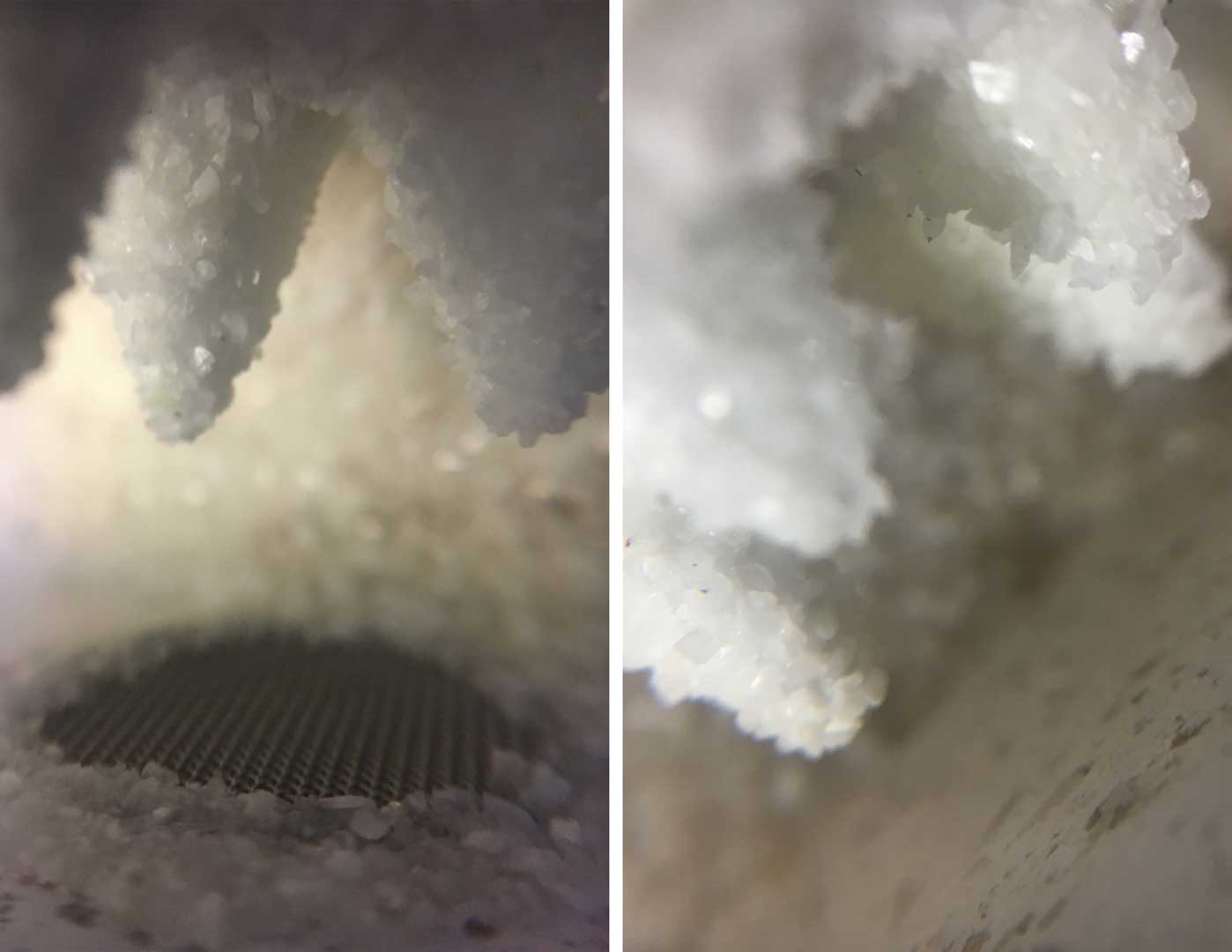
That nest can hold a couple hundred of my Camponotus but I need a bigger nest in case I get some explosive growth this coming year. I’m digging these vertical grout nests so am making an even larger one. This time I’m doing a cylinder with two nest areas so that I could open it according to their size needs. I had a layer of vermiculite at the bottom of a round container, carefully built chambers and tunnels with Sculpey polymer clay against the sides that I brushed over with vegetable oil then poured the grout mix in. Again, I added about 1/3 vermiculite to the grout mix. I had to destroy the container to get the cured nest out so had to purchase another container that matched. If you’re planning on making a nest with certain containers, make sure to have duplicates just in case to use as a mold during the making process.
I’m planning to also do more stalactites and sand textured walls/ceilings to this nest. If you look closely, you can see bright white patches where I used superfine white Milliput to fix edges, holes and broken sections I had to silicone back. Chunks at the bottom broke off because of how I poured the grout mix over a layer of vermiculite which I did to help with hydration. I sculpted the epoxy putty in place and made sure the fit with the container was good and sanded the patches to a finish.
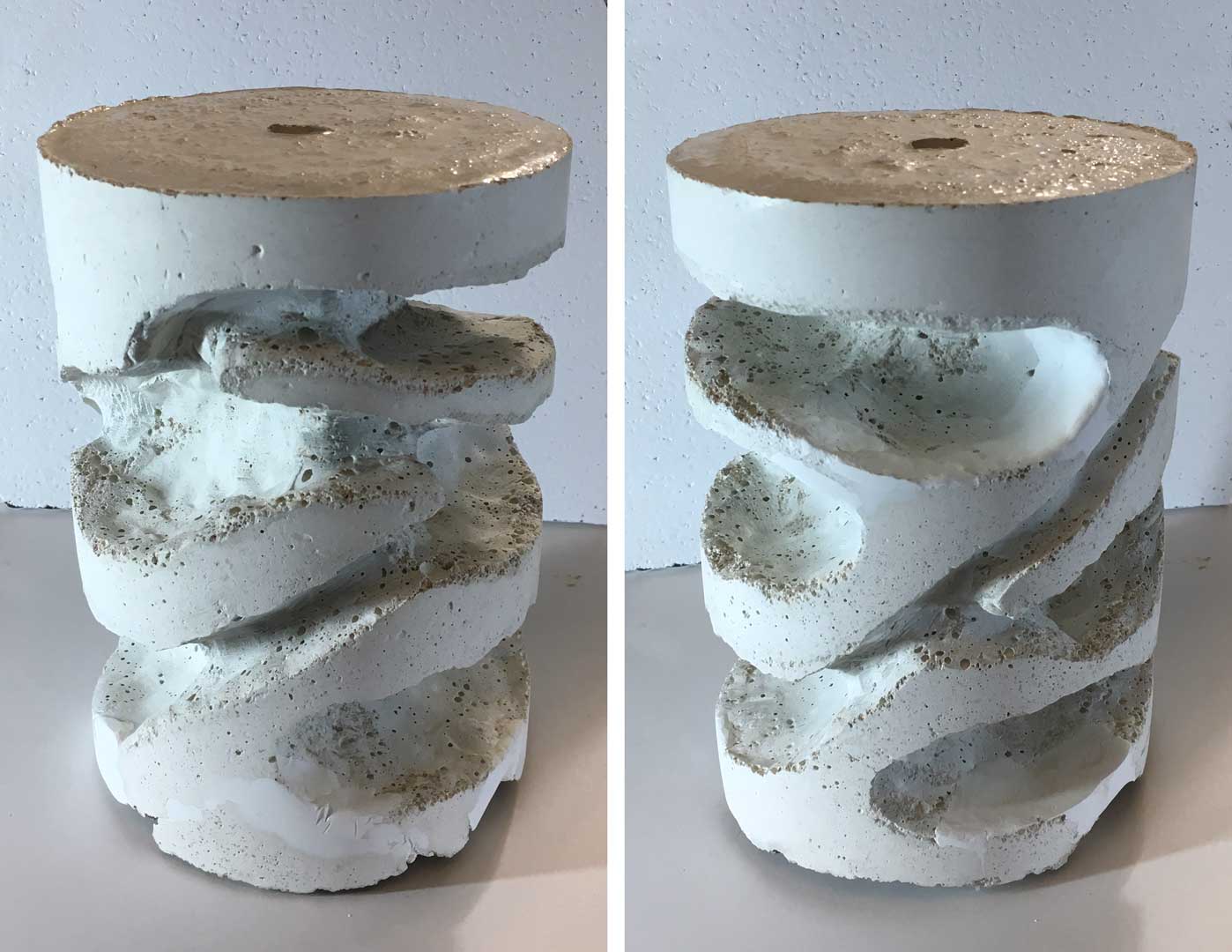
So half the nest is cut off from the other side, I’ll open one side first and then leave the larger chambers for later colony growth needs. I estimate this one can hold a thousand of my Camponotus! I read that this species can grow very quickly in their third year and I want to have my DIY formicaria ready. There is a center hole all the way through, I’ll probably use a layer of cotton at the bottom that I’ll hydrate from the top here. I’ll also need to drill four holes in the grout for the pipe screens used for hydration and ventilation.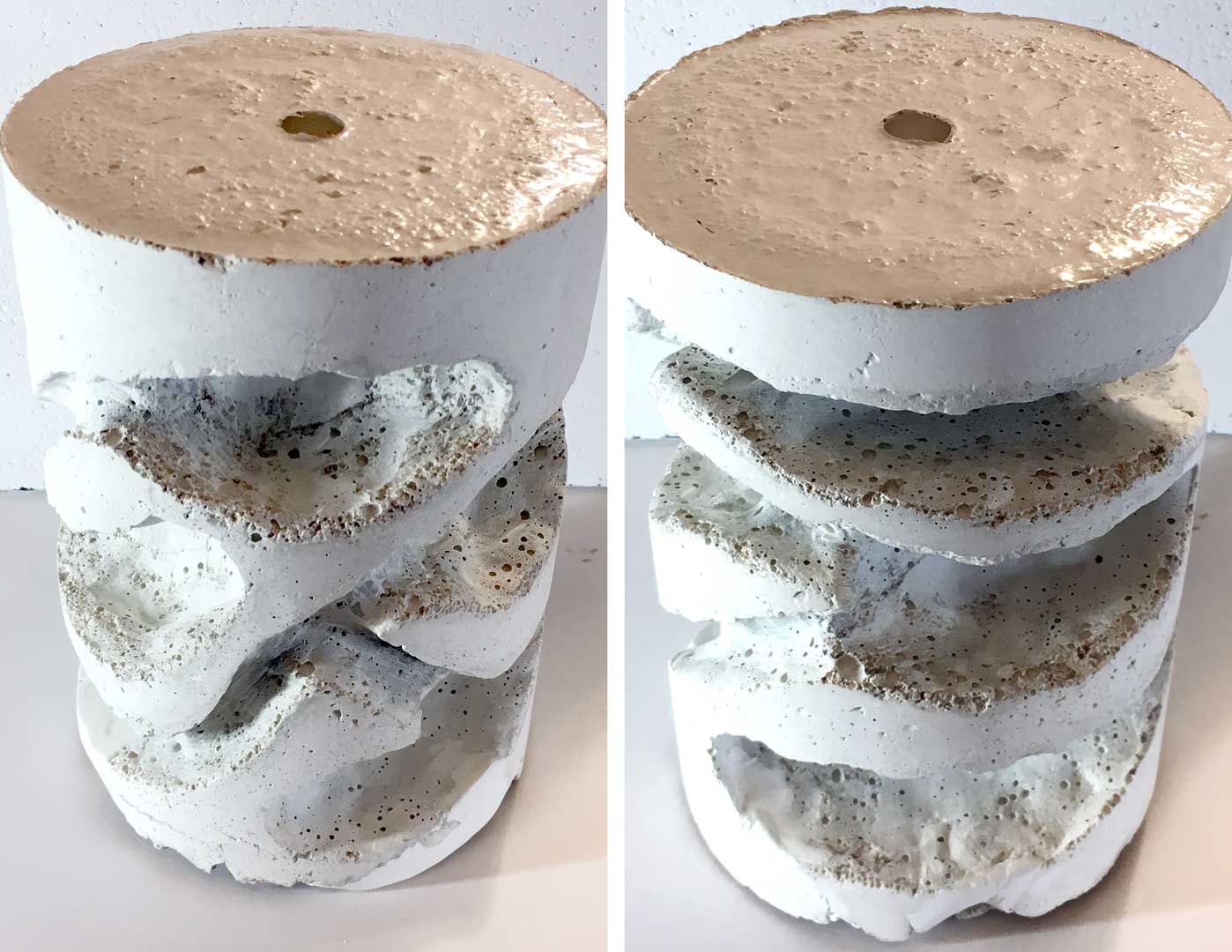
I’ll leave this update with a peek at a couple more nests I’m building. I’m thinking there should be some dry satellite nests for Queen Elizabeth’s colony and have been tinkering with these two plaster/vermiculite nests. They’re carved and sculpted further than what I show here, so keep an eye out for my next build update to see what they turn into!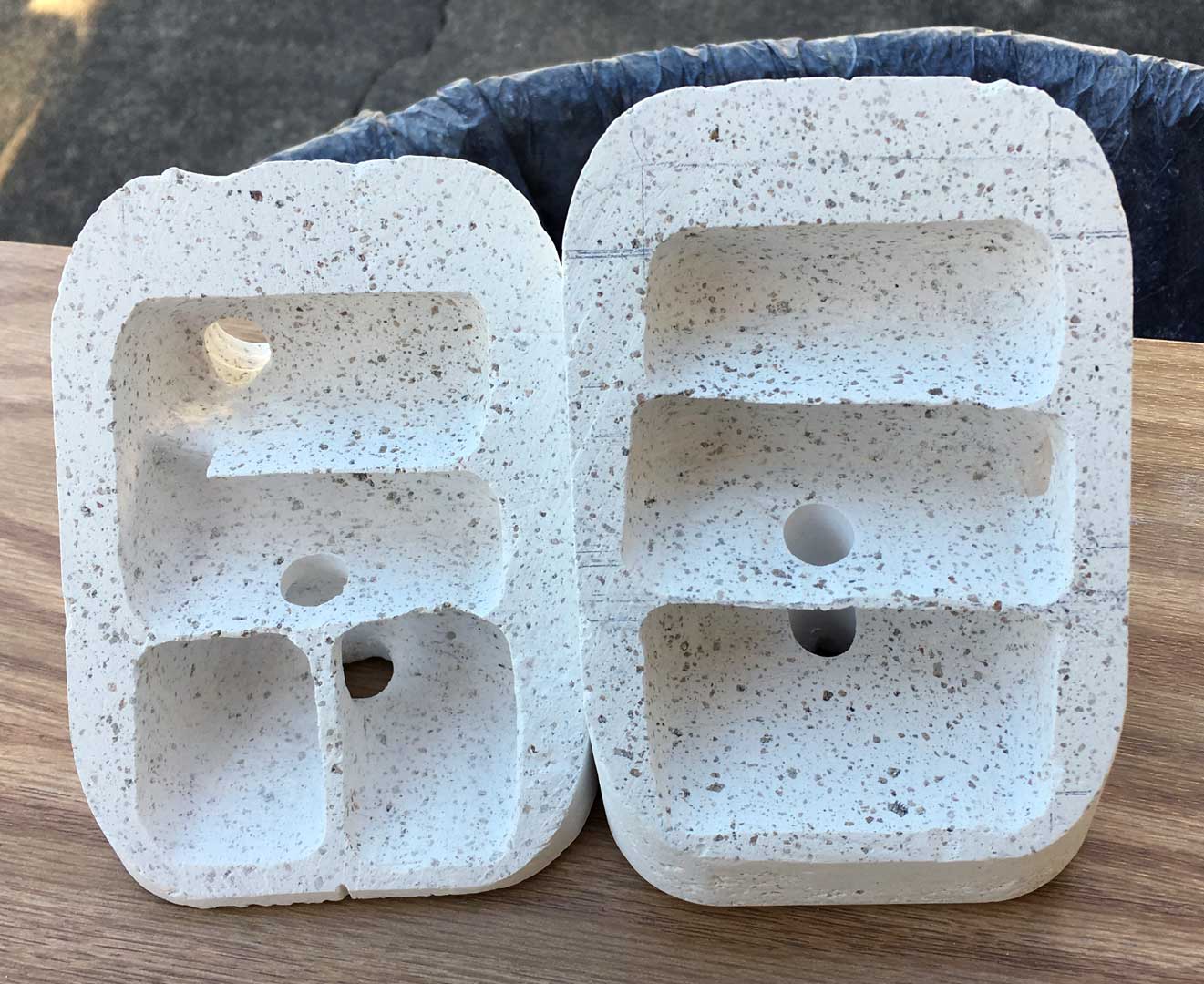
Edited by Boog, January 17 2020 - 12:57 AM.

